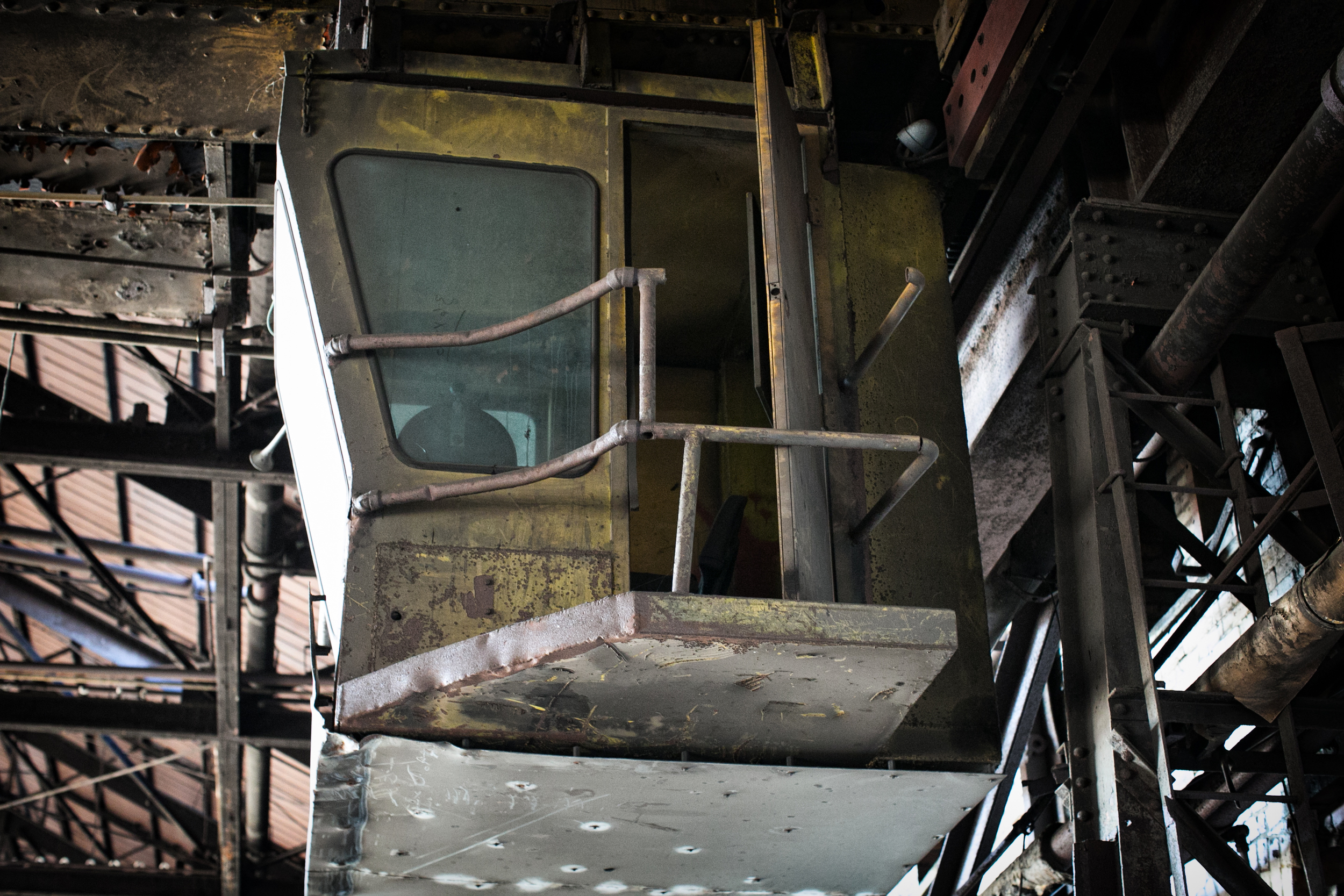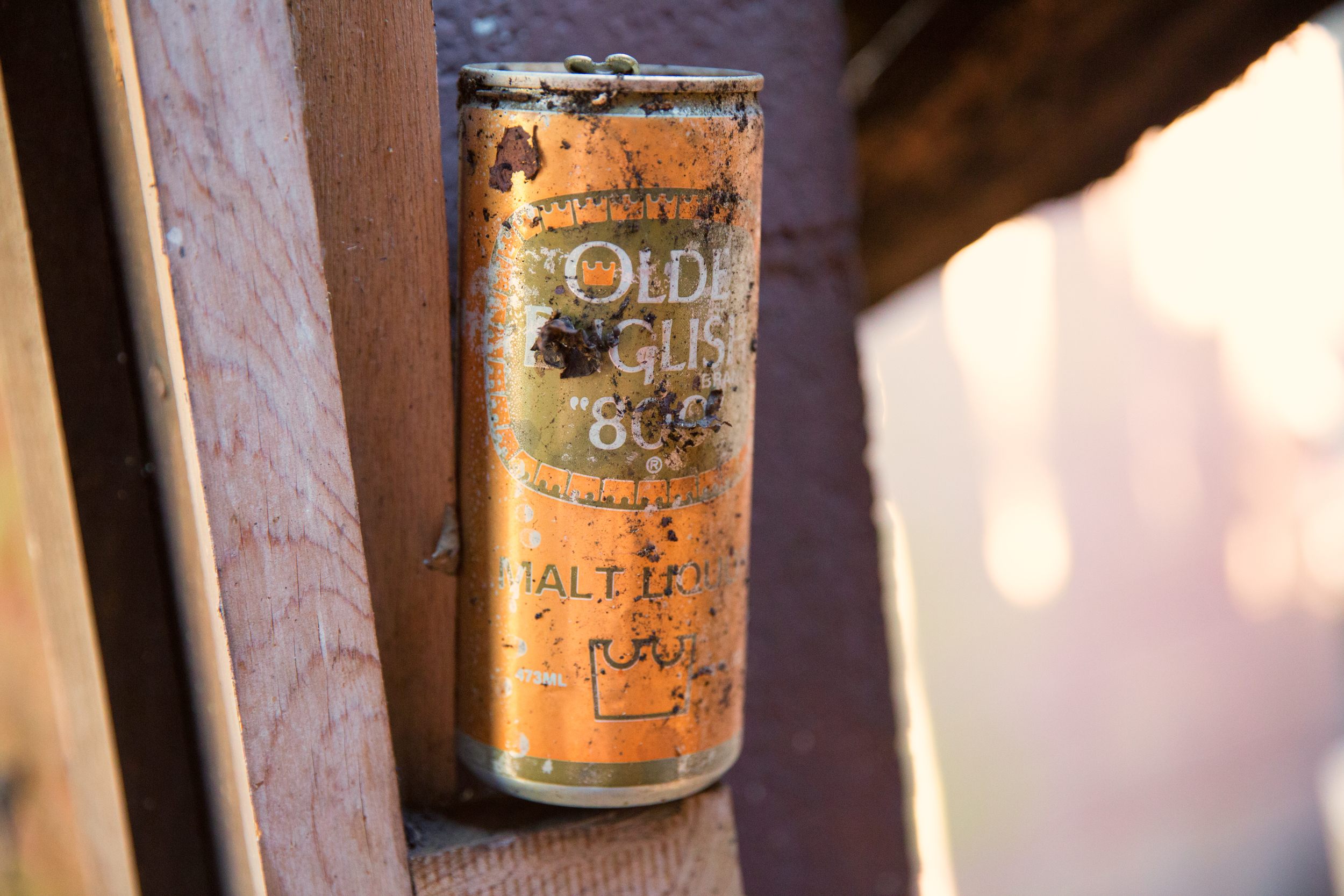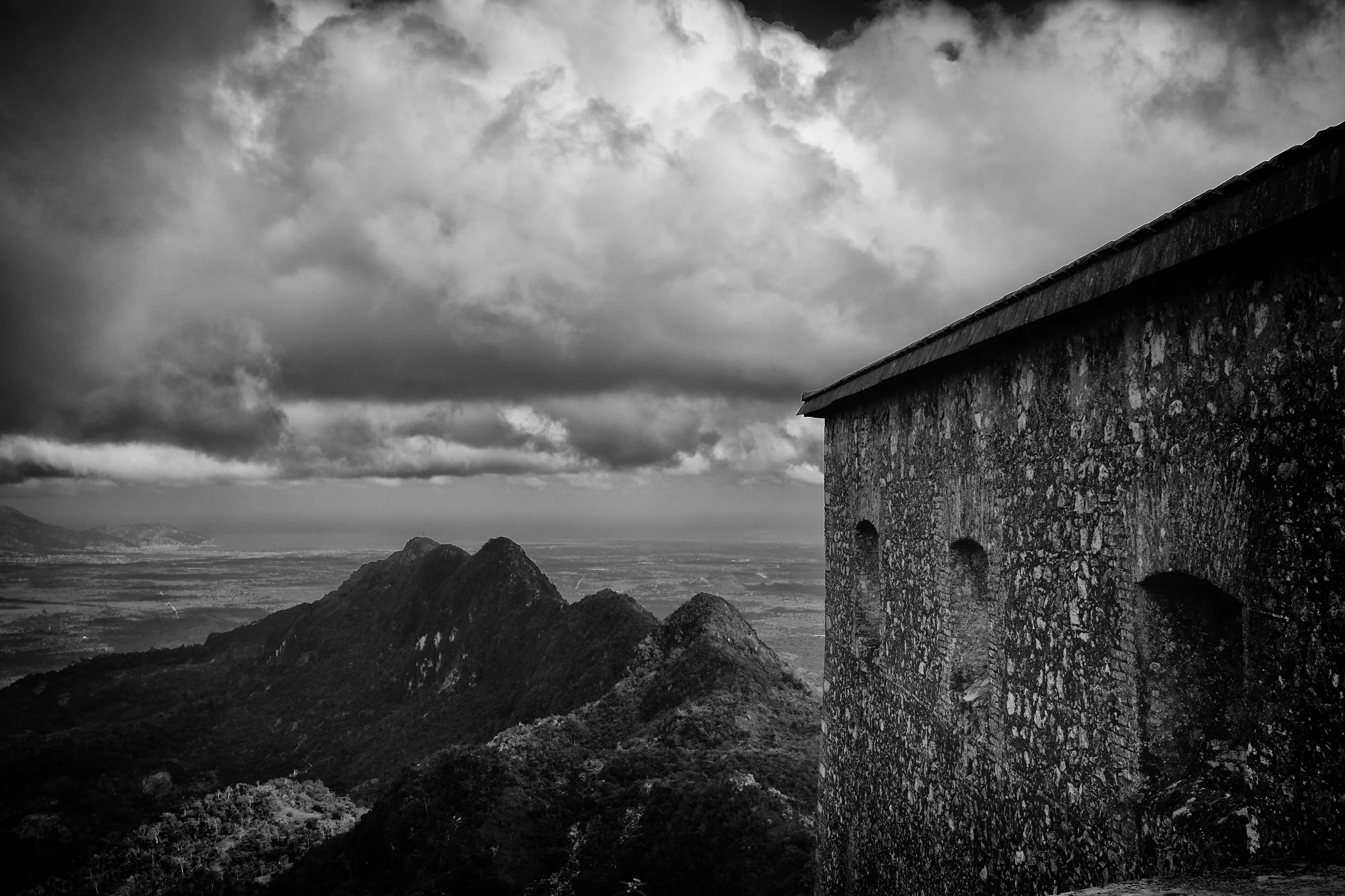The New Glacier Missionary Baptist Church sits on a downtown street of Detroit, Michigan. The church has succumbed to urban decay as the city that once boasted over 1.8 million residents in 1950 is now at 680 thousand residents (2014).
In one month alone, 19 different crimes of a variety of levels were committed within a one mile radius of the church. The church is now unsafe to rebuild as the floor is falling in and a section of the roof is completely gone.
Prior to the church building being used by New Glacier Missionary Baptist, it was utilized by the Greater St. Paul Missionary Baptist Church, which bought the property in 1979. As St. Paul grew to over 1,000 members, a lack of space became an issue. So, the church sold in 1984 as St. Paul moved to a much larger space.
The building was eventually purchased by the members of New Glacier Missionary Baptist Church.
This photo was taken from the second floor balcony inside the church.
Empty Places: Waiting rooms for death
Documenting History: The building sits in a somewhat undeveloped area of Nashville, Tennessee. It was built in about 1913 and was used by the Tennessee Masons as a group home of sorts for widows and their children. The money to allow orphans and their mothers to stay in the property came from a fund that was developed in 1886. At one point the four story home and two other buildings on the campus had 400 residents that included widows, their children and the elderly.
In 1941, the State of Tennessee used the massive structure that looks like a mansion as a hospital to treat patients with tuberculosis. In the 1900’s, tuberculosis was the leading cause of death in the United Stated. It was known as The Great White Plague. Those who suffered were isolated from society in homes or hospitals like the one pictured. Structures like this one were known as “Waiting rooms for death.”
The building was later used as a health department office in the 1970’s through about 1994.
61 Drive-In, Memphis, Tennessee
The Drive in that was once a part of a growing Memphis, Tennessee area opened with a single screen in 1958. It is located on Highway 61 and was called the 61 Drive-In. The theater closed down in 1965, but later reopened in 1968 as the Southwest Twin Drive-In with two screens, which was owned by Malco. The drive-in closed for good in 2001.
During the better times, the drive-in saw up to 850 cars per night. It was one of two drive-in’s located in Memphis.
Actor Forest Whitaker stated, “When I was a kid, the only way I saw movies was from the back seat of my family's car at the drive-in.”
Old Memphis Church
Once a vibrant church in Memphis, Tennessee... now a building that is set to be torn down. The chapel in this church has already caved in and a few Sunday school classrooms are left behind. This is one of the few rooms that still survives, barely.
The Memphis First Seventh-day Adventist Church opened this worship center in 1902, as best I can tell. Little information is available today about this structure. The building also served as the Memphis Junior Academy that was operated by the church. The school later moved in 1954 to North Mendenhall Road.
Empty Spaces: Chattanooga Foundry and Pipe Co.
A look inside the old Chattanooga Foundry and Pipe Co. that was built in 1882…
The company was built by a man named David Giles. The massive factory that had a medical office on site, was once alive with well over 1,000 employees during its heyday.
In 1899, the company was incorporated into the United States Cast Iron Pipe and Foundry Company. It was one of 12 companies in 8 states to receive a new name under the umbrella of U.S. Pipe. Of the original company that was part of the 1899 corporation, only two are in operation today. Those two plants are in Alabama and New Jersey.
In the 1900’s, the plant in Chattanooga cranked out not only pipes, but also brakes for some of the first cars in the United States along with cast iron fittings, valves and hydrants.
By 2003, the plant announced plans to fire 243 of their 345 workers. The firing came just two weeks before Christmas. In 2006, everyone was let go and the plant closed for good.
The massive structure is now a graveyard for outdated rusty machinery, soot, and metal shavings.
Closed down factory
Inside an old and closed down factory in Nashville, Tennessee it looked as if some things were left behind and the workers ran out of the building in fear, like an old horror flick. Other areas were neatly cleaned in what looked to be an attempt to sell the property. However, the small offices within the the 250,000 square foot structure still had old paperwork sitting on bookcases. Safety glasses were next to a paper towel in the kitchen, toilet paper still hung in a bathroom stall and an office chair sat quietly covered in dust.
Empty Places: A tour of an old club where Jimi Hendrix once played
The legendary Jimi Hendrix once wandered into a small club in Murfreesboro, Tennessee and did what he did best, played the guitar. The Eldorado Club, which was also known as Dance Land, was mainly attended by African Americans in the 1950's and 60's. It was located on Asbury Road near the Stones River Battlefield. It is now just a shell as the roof has fallen in and growth has taken over the building and the surrounding land.
I walked through the building with 75-year old saxophonist Raymond Summerour who once played in the club with his band called The Dukes. Summerour told me he came to Murfreesboro in 1960 and his band played at the club on Friday and Saturday nights, sometimes up until 4 AM. He told me that he remembers the day Hendrix walked in like it was yesterday.
“When Jimmy walked in we didn’t know who he was,” he told me. He said he singled to him that he wanted to sit on the stage and play along. Summerour invited him on up and stated, “When Jimmy unleashed, he got up on the stage and we were just playing regular rock n’ roll, we didn’t play the stuff that Jimmy played before he died, that hard rock type stuff, but Jimmy got up there and man let me tell you - - when he unleashed he really got down on that guitar. He was playing with his teeth, he was playing with that guitar behind his head and the crowd just went wild.”
At the time, Hendrix was in the U.S. Army. He was stationed in Clarksville, Tennessee and part of the 101st Airborne Division in 1962.
Summerour mentioned a few more names that visited the club in the 1960’s. He told me that Ike and Tina Turner were there, William Bell, Bobby Marchan and Jerry Butler all visited the club. The famous blues musician who died in 1965 known as Sonny Boy Williamson also played at the club once in Murfreesboro.
Today, the club sits in ruins on a small county road. No one would ever suspect it is where history was made.
"Music doesn't lie. If there is something to be changed in this world, then it can only happen through music." - Jimi Hendrix
Empty Places: The old Tennessee State Prison
This evening I journeyed back into the infamous Tennessee State Prison. Some call it the Castle while others simply label it a fortress. See my previous visit HERE.
The abandoned and decrepit prison is located near downtown Nashville, Tennessee. The massive structure first opened in 1898.
The prison had a death row area that included solitary cells for troubled inmates on the row. Death row also had an electric chair for the final days of some inmates in Tennessee.
The prison closed in 1992 and has graffiti on some of the cell walls that suggest some were released in 1990 as the prison began the shutdown process. Other inmate graffiti calls on help from Jesus. It is fascinating, sad and creepy all at the same time.
Stage IV Liver Disease
Pictured: Jeffery and Rocky hugging each other prior to her being transported to Vanderbilt Medical Center to receive care for her ailing liver. Jeffery said to all of us, “Take care of her, I love her and she is all I have.” Read more below...
Read More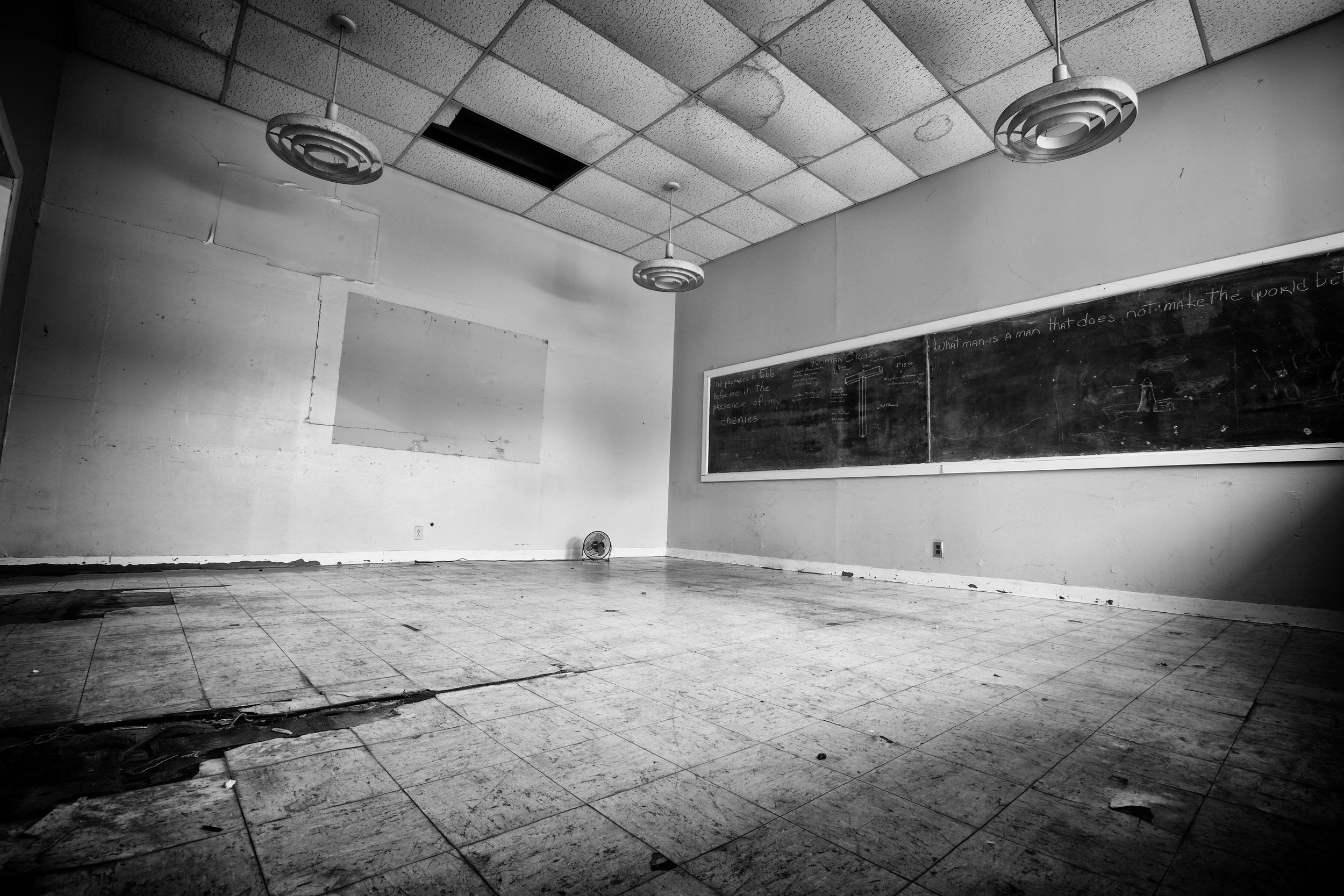
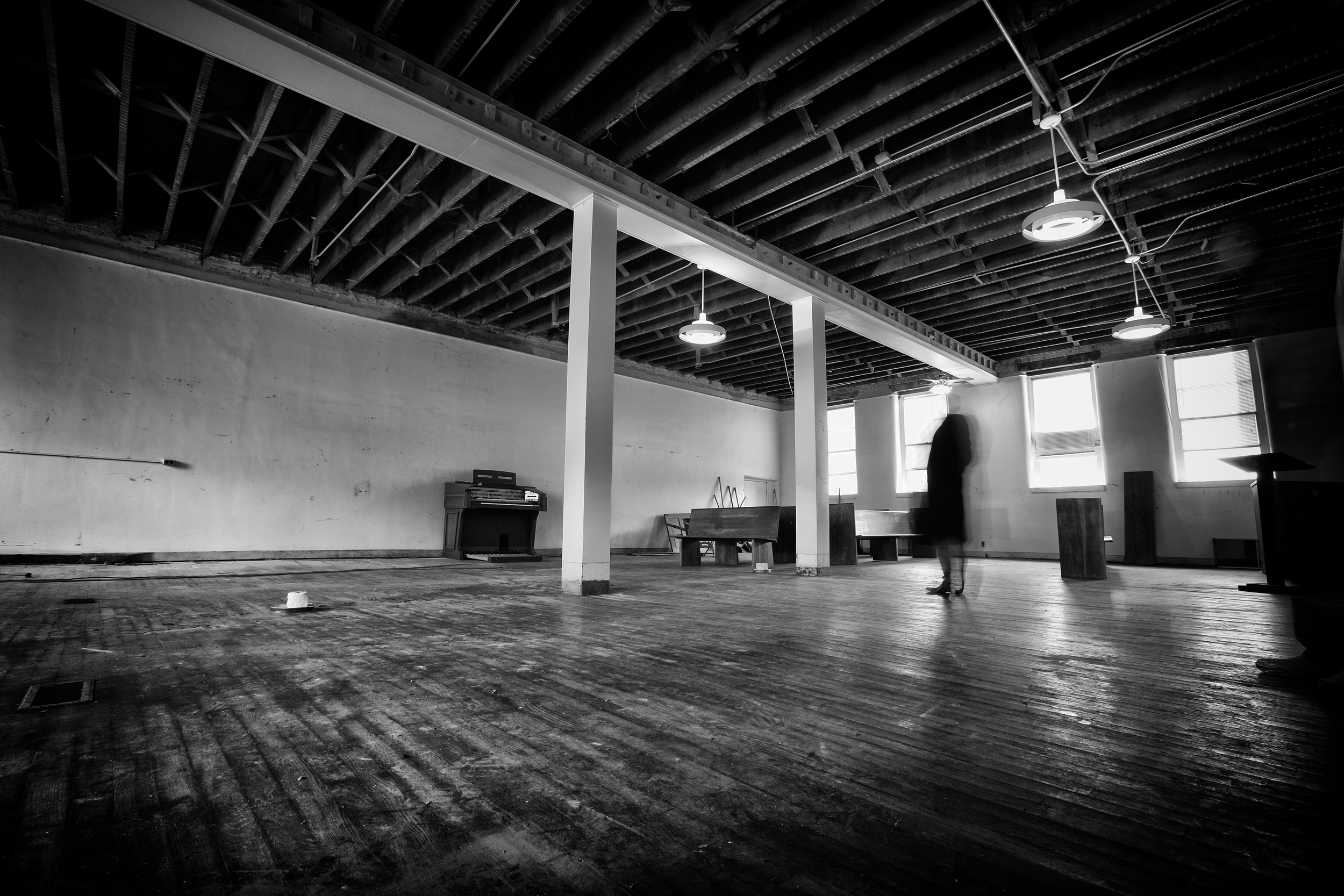
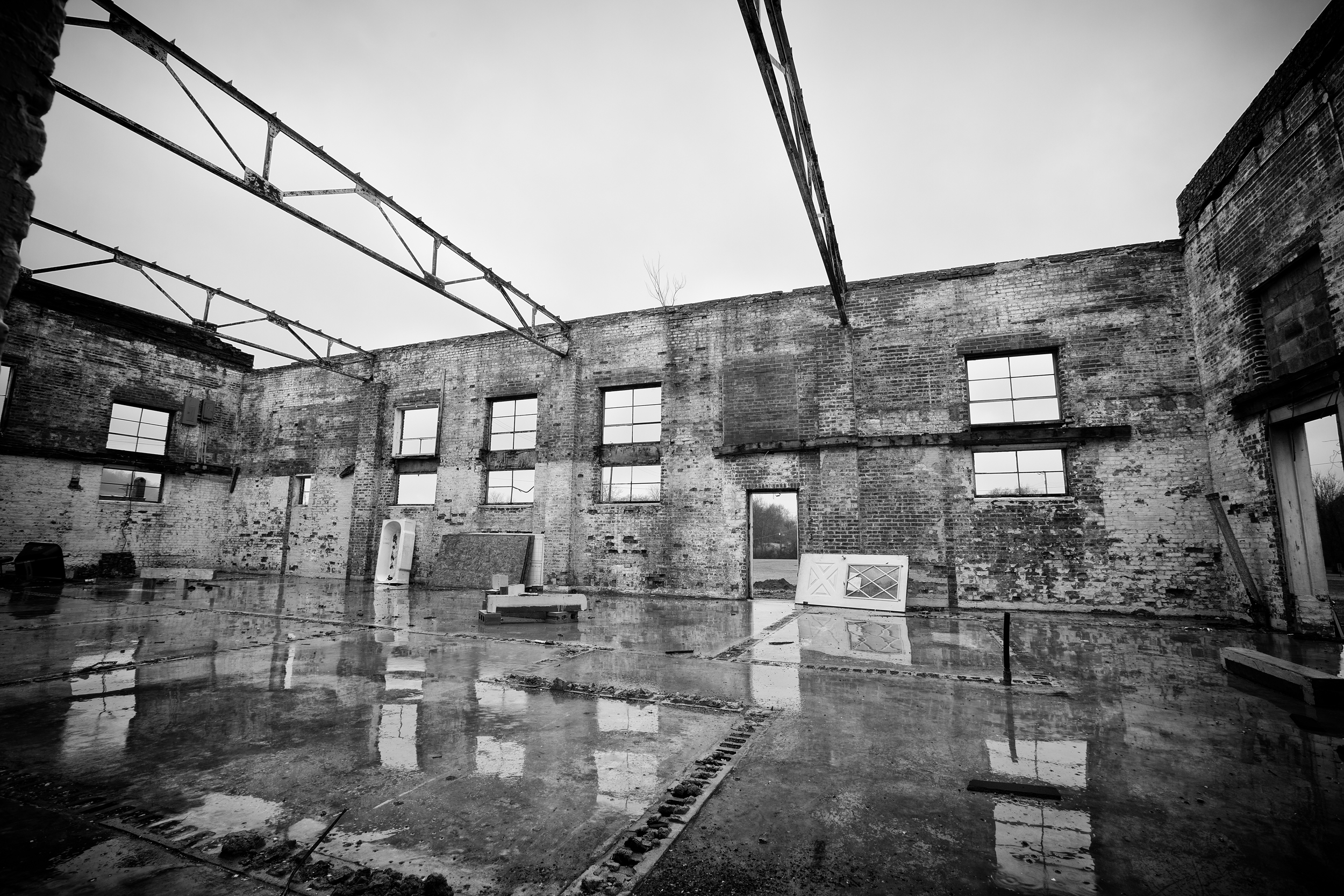
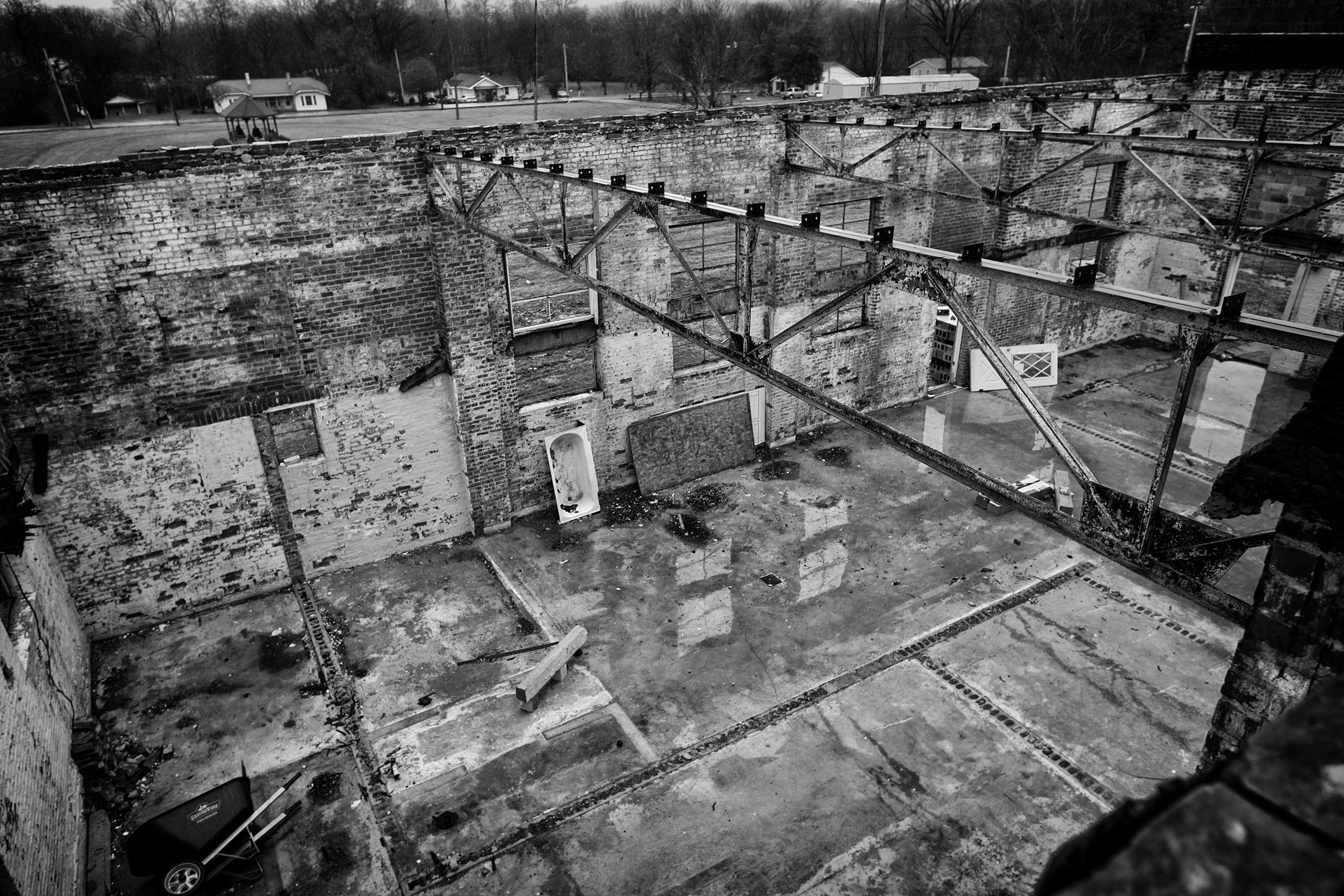
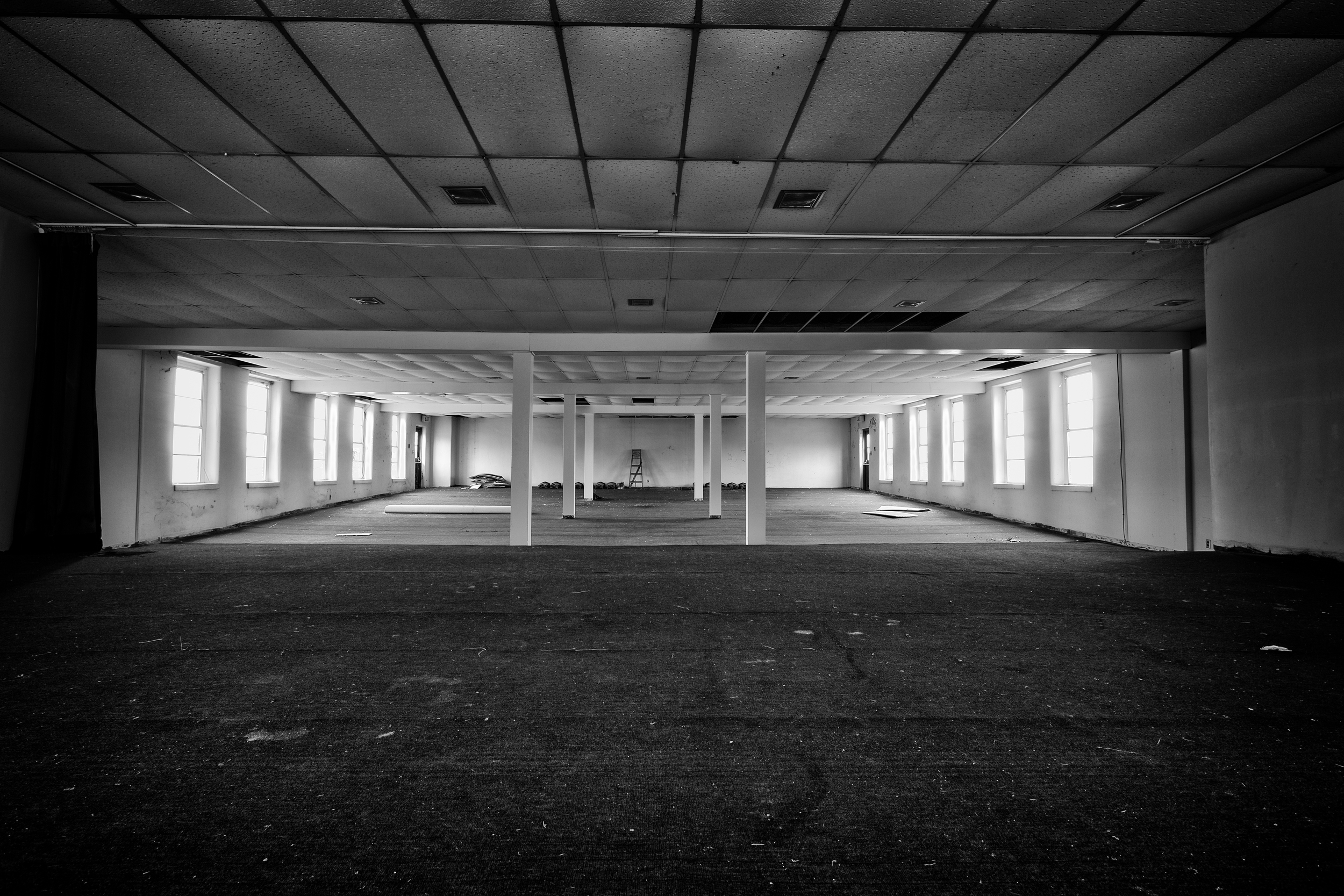
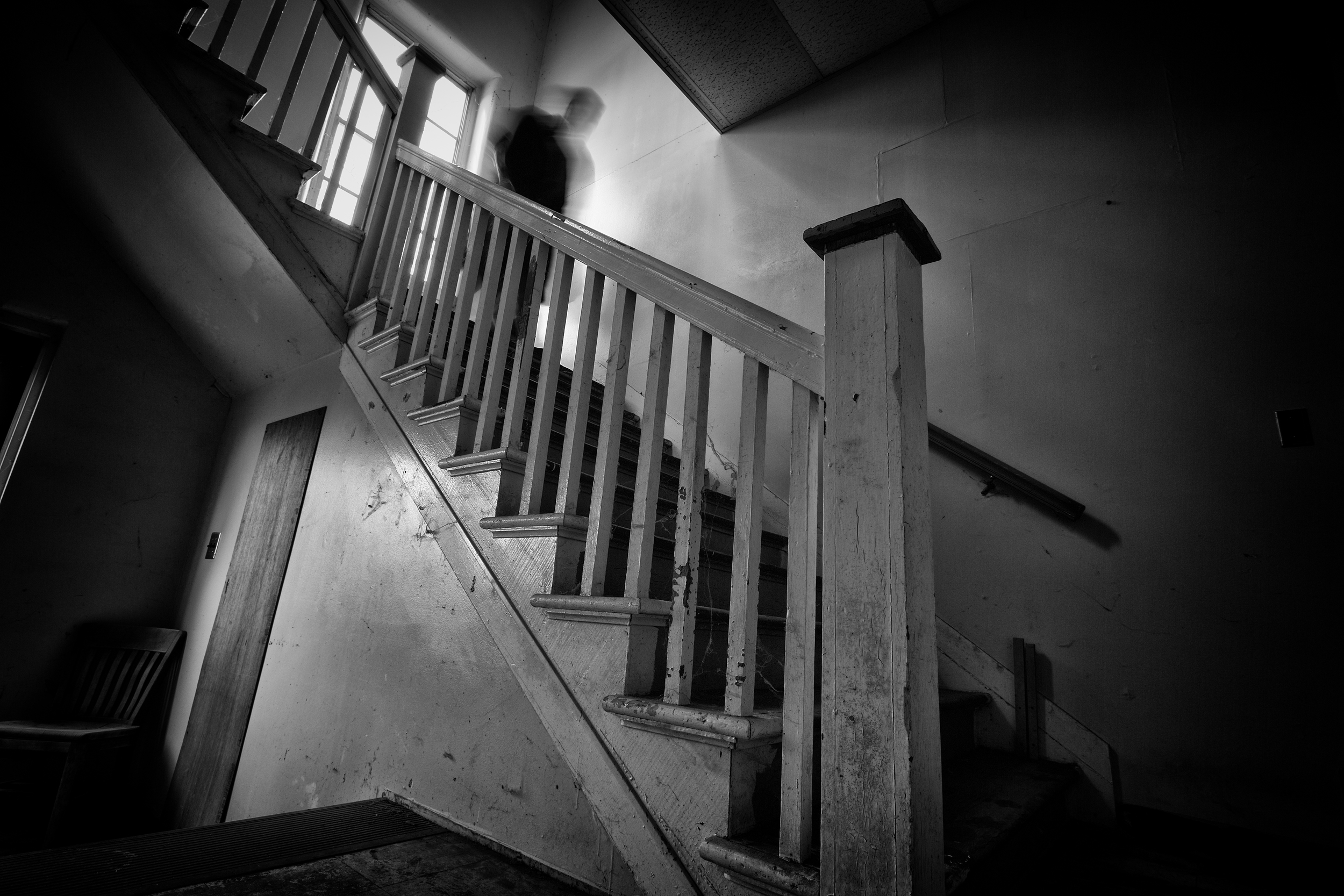

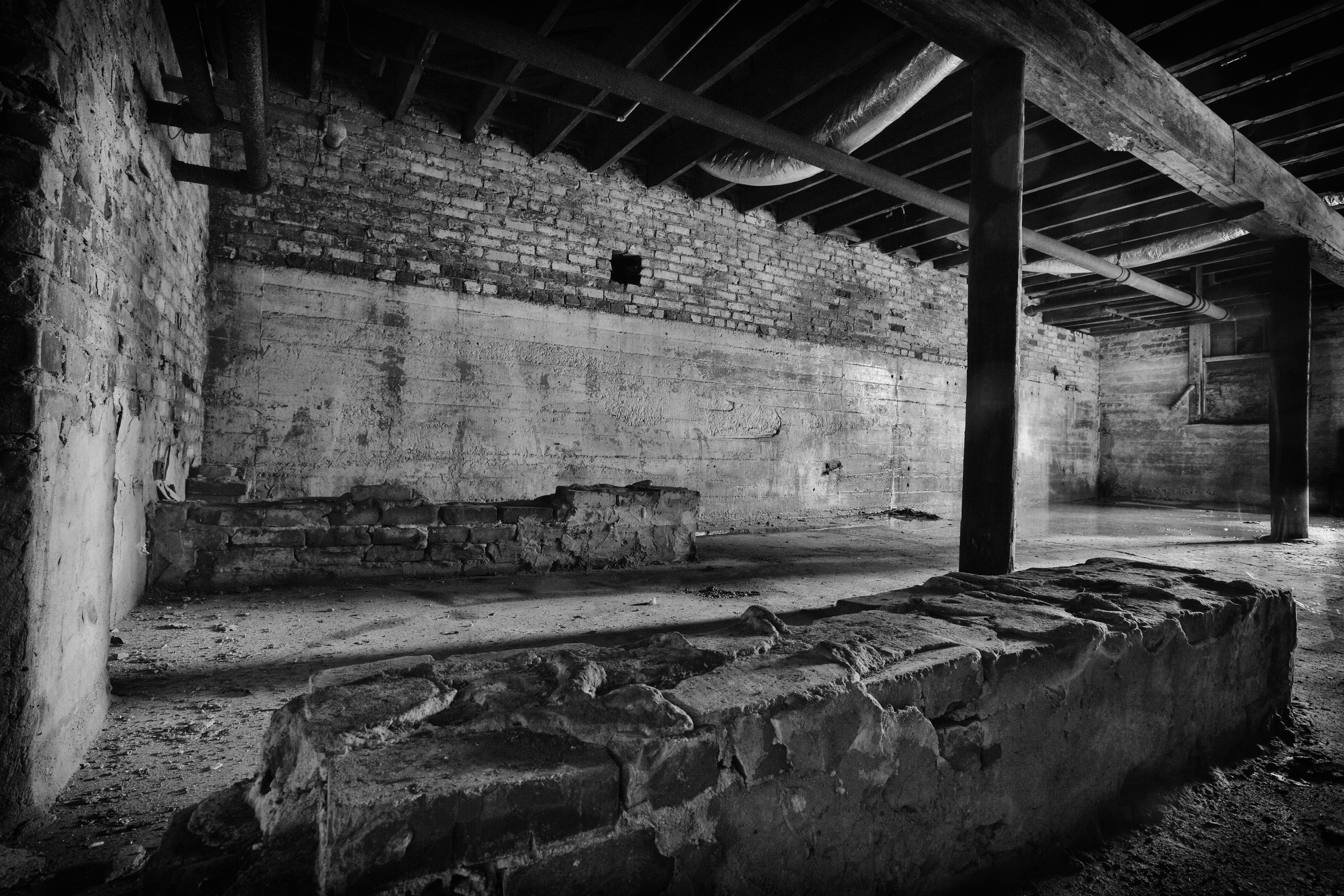
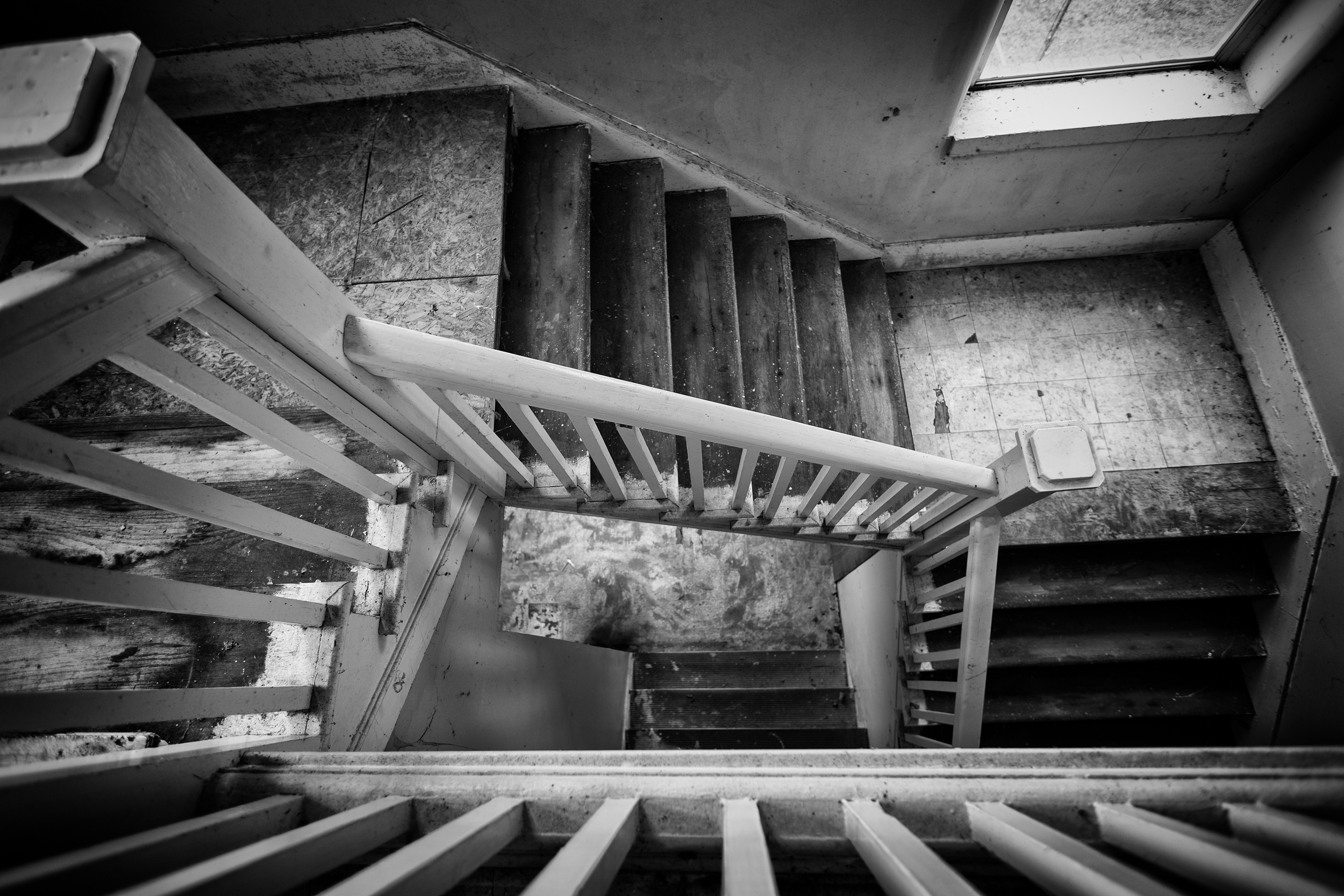

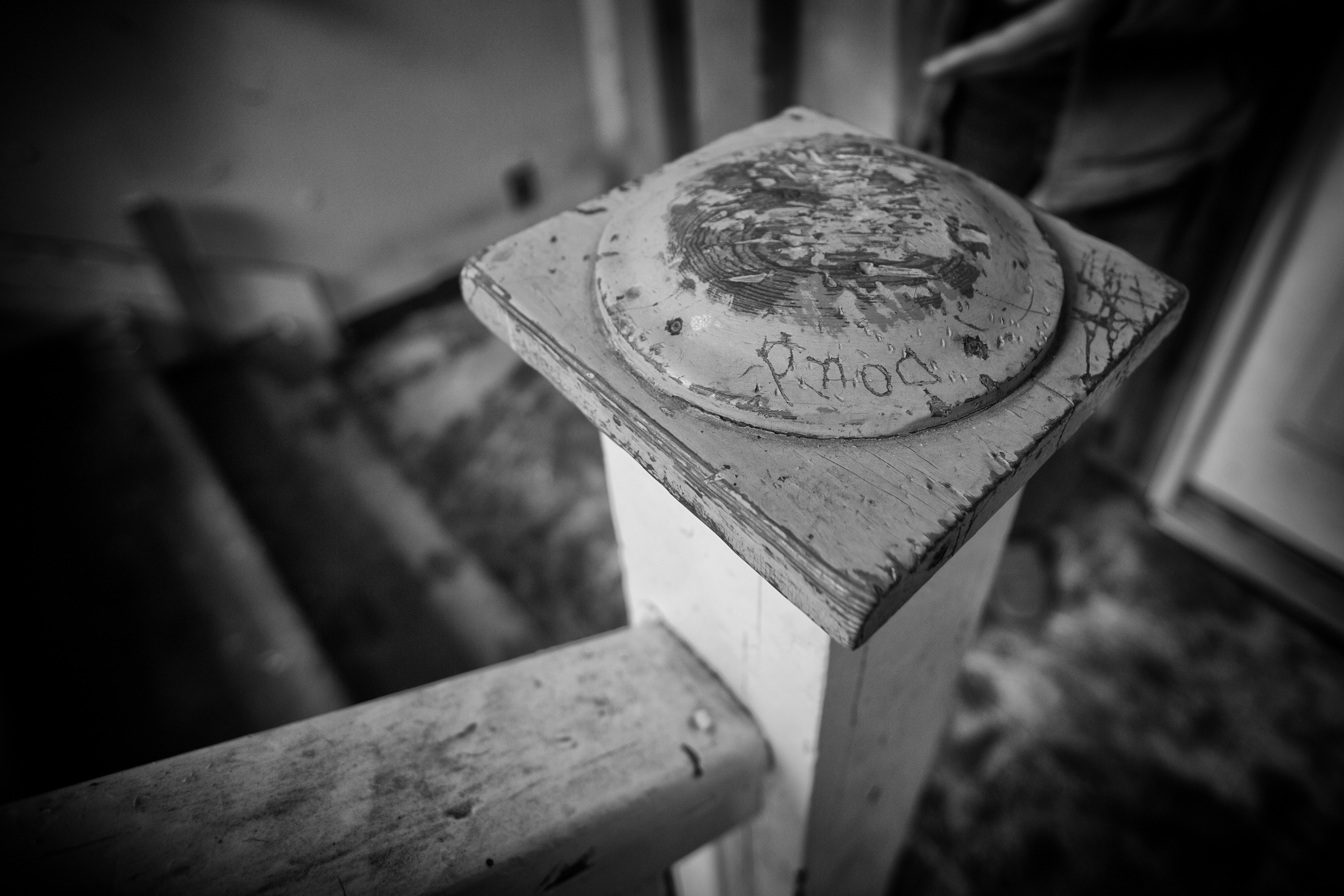



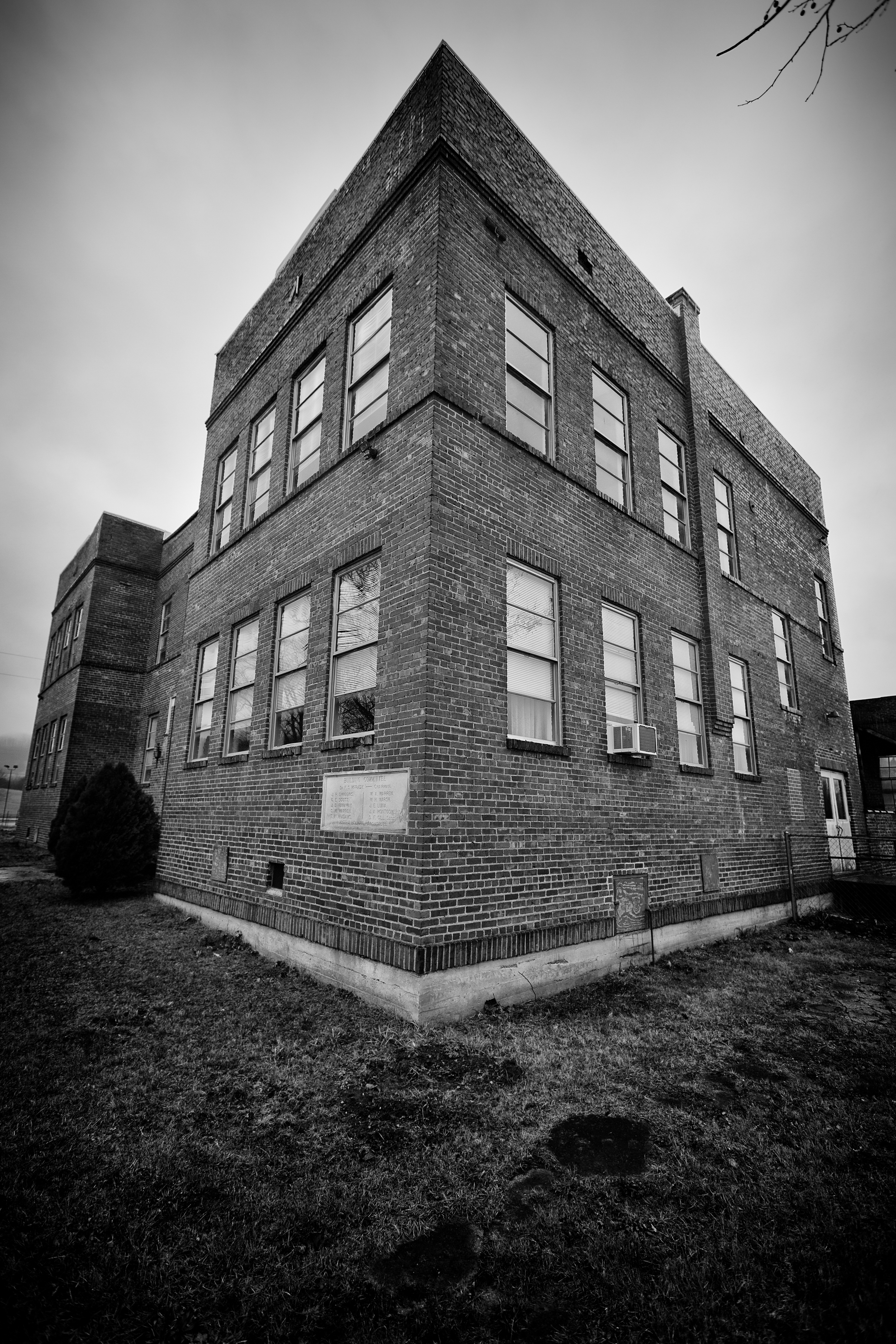
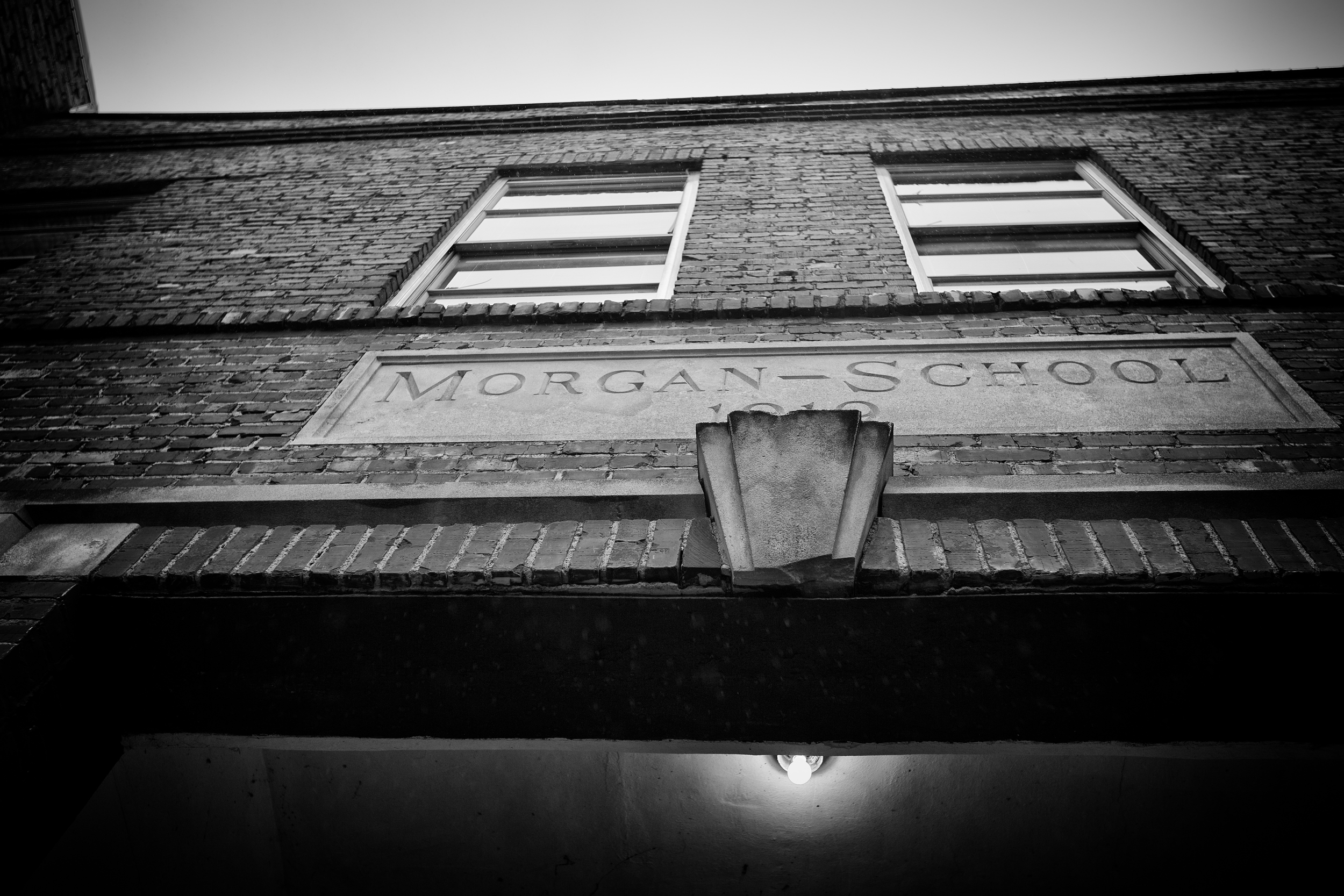
Empty Places: Morgan School for Boys in 1919
My tour of an old school that was built in 1919 - a building that will soon help prostitutes and more escape a life of abuse.
Read MoreEmpty Places: The Citadelle Laferrière and The Palace in Haiti
These are photos of the Citadelle Laferrière and The Palace in Haiti. These shots by Scott Walker also include the views from the Citadelle. All shots taken with a Fuji X100s.
The fort and the palace sit atop the Bonnet a L’Eveque mountain in Haiti, one of the highest points in the country. The views are breathtaking as is the ride by mule to the top.
The fort took about 20,000 people to complete, many of whom died while hiking stones to the top of the mountain to build the structure.
Henri Christophe initially commissioned the fortress to be built in 1805. He and his wife lived in the palace. Christophe was a general in the Haitian army and chief administrator of the country's northern regions. However, after having a stroke int he 1820's, he committed suicide with one gunshot to the head. His body was later placed somewhere in the fort, but no one knows for sure where in the structure.
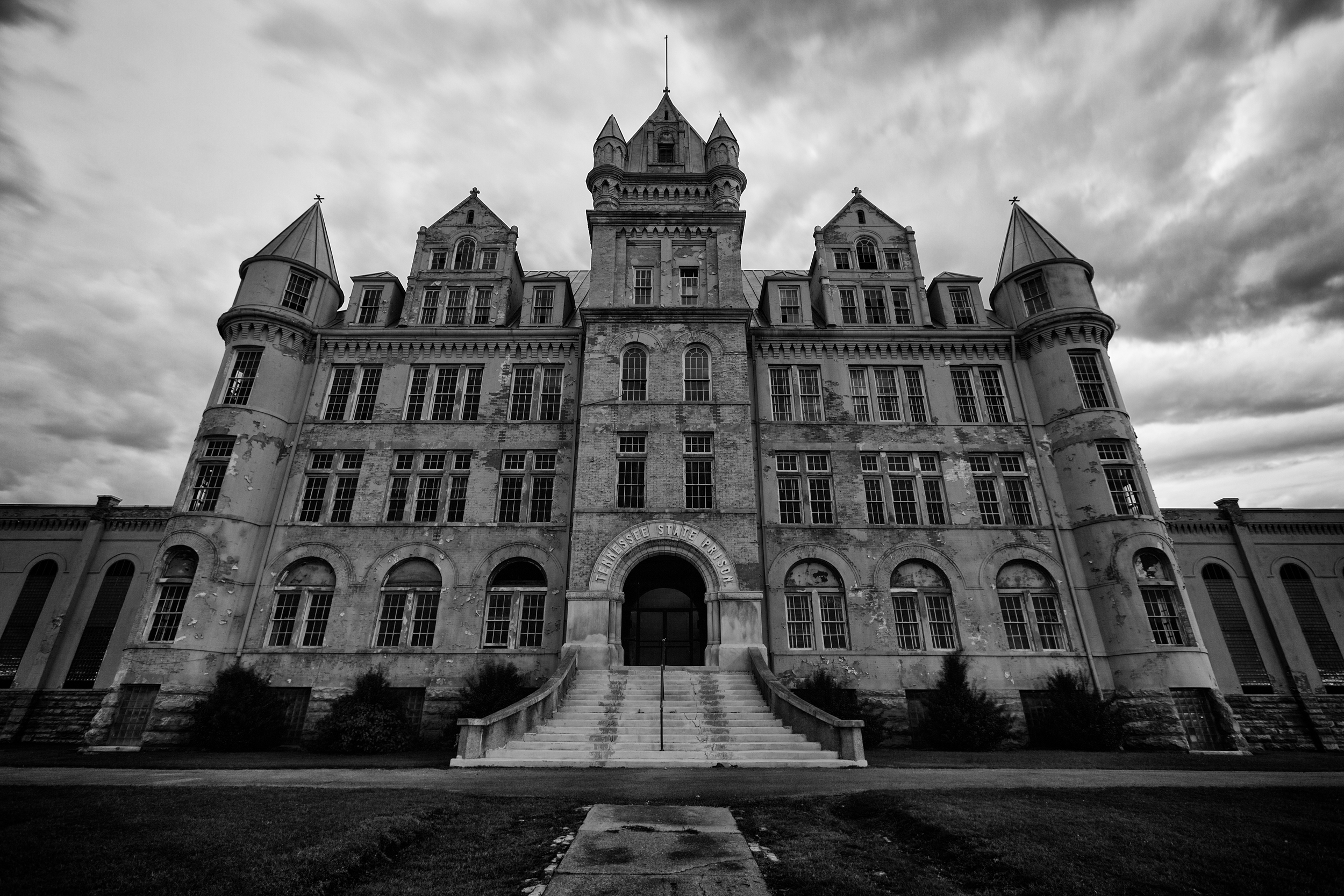

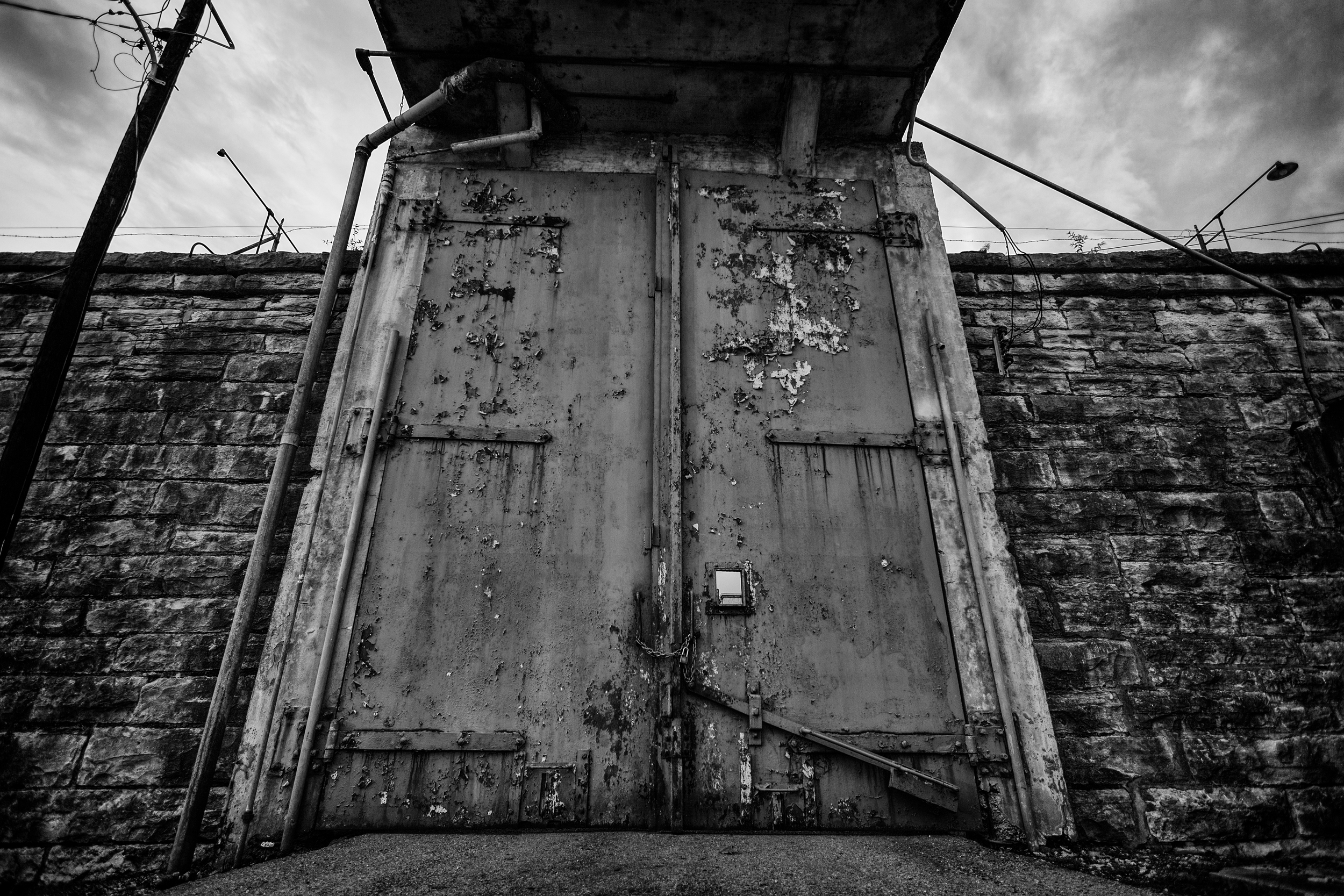

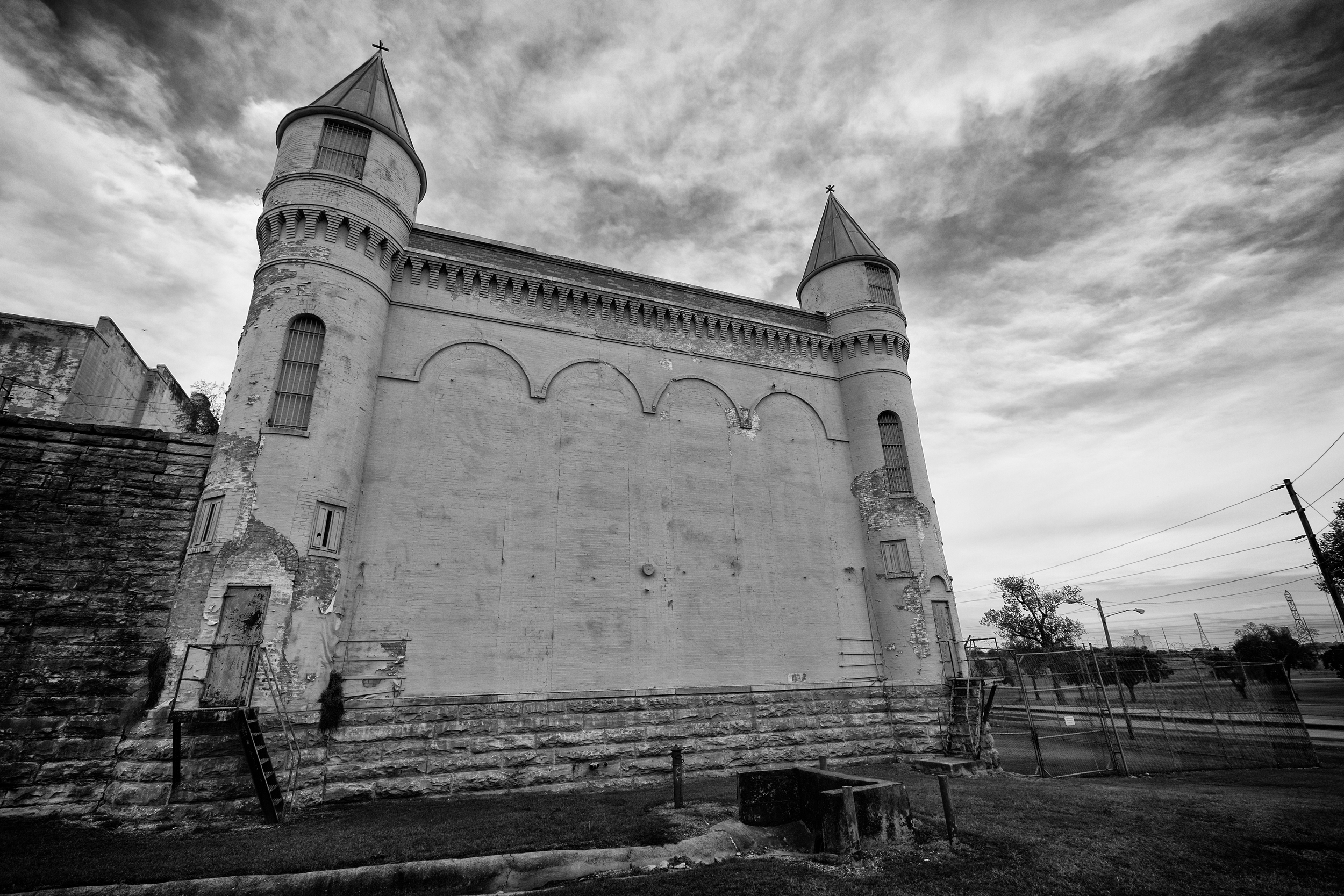
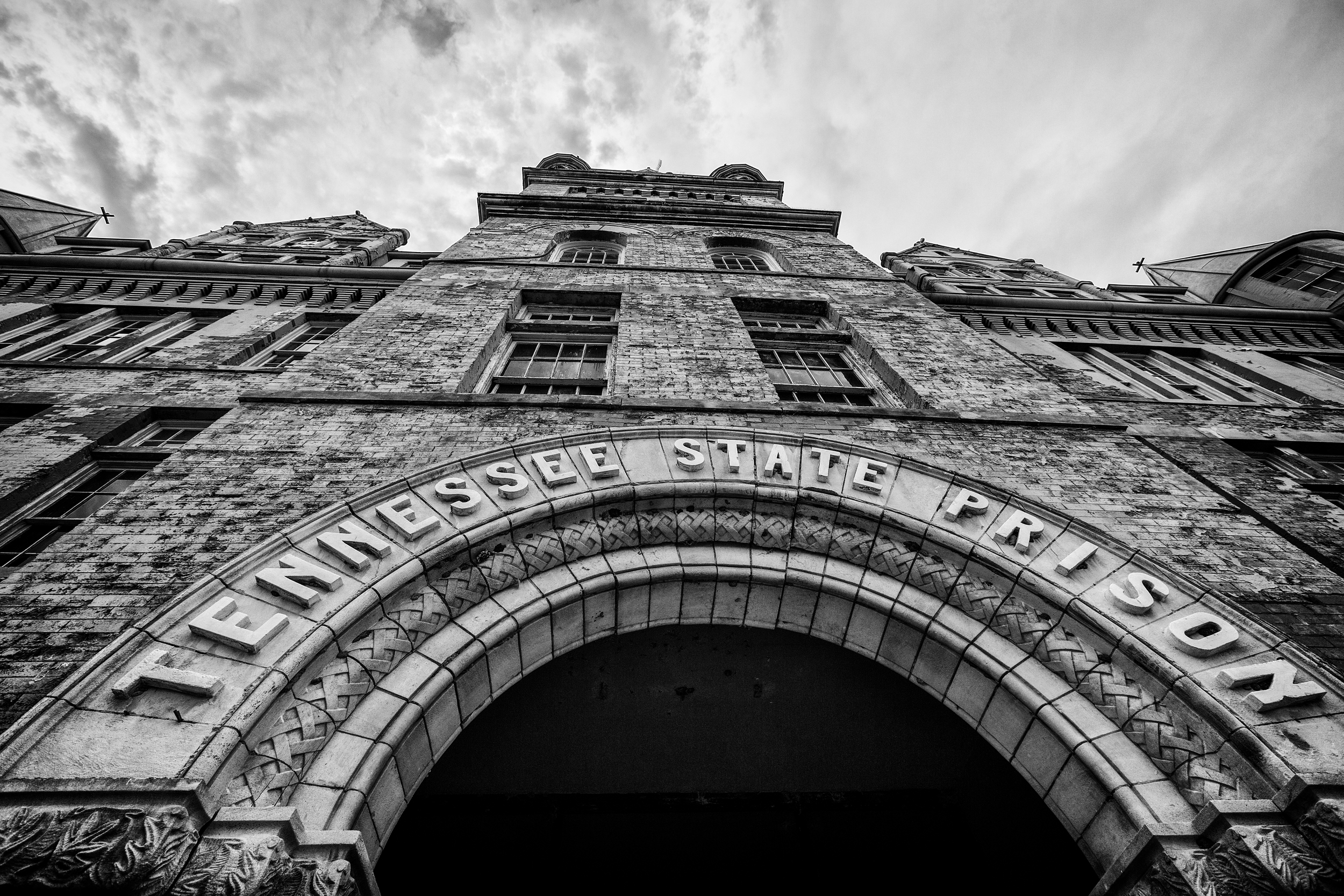

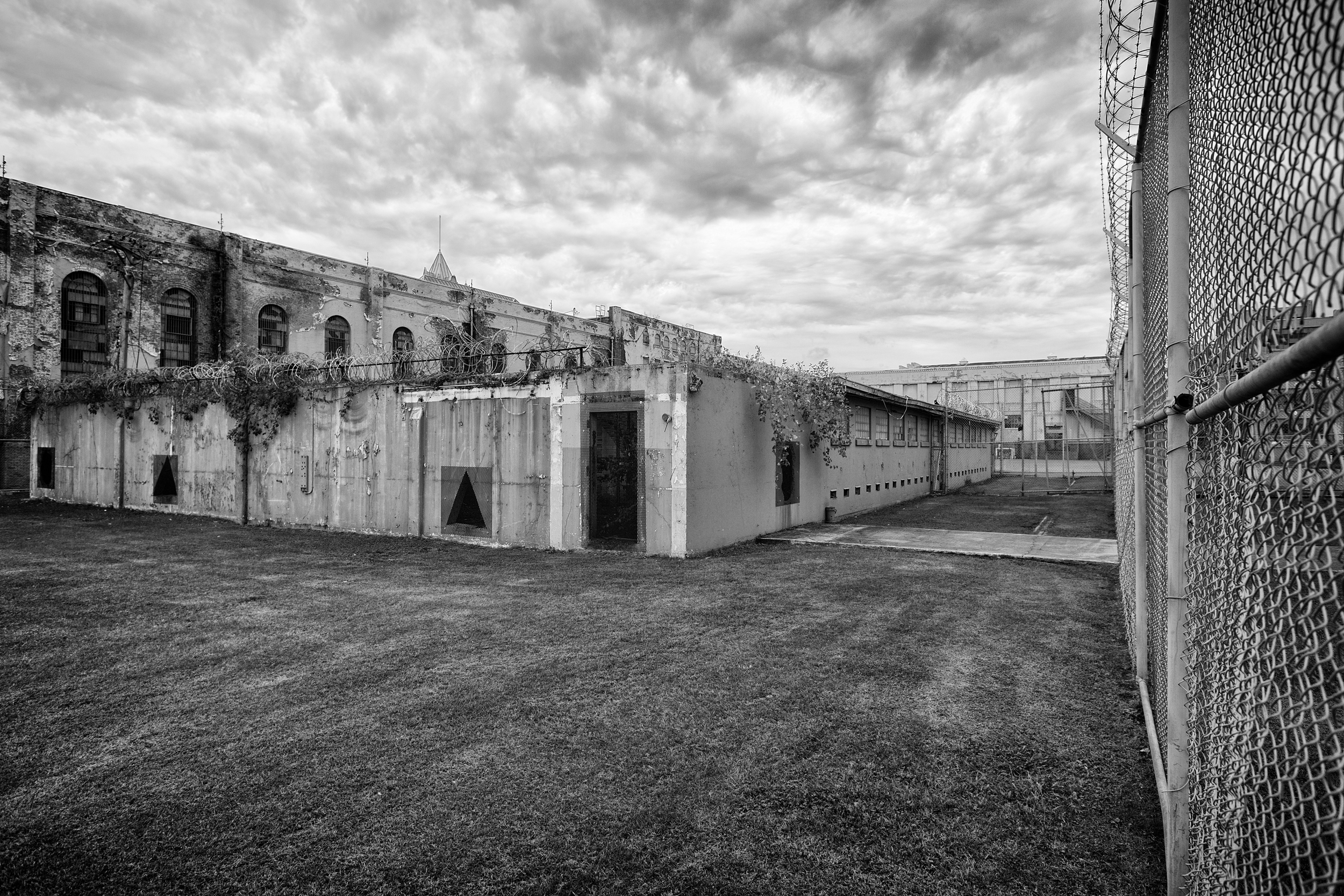
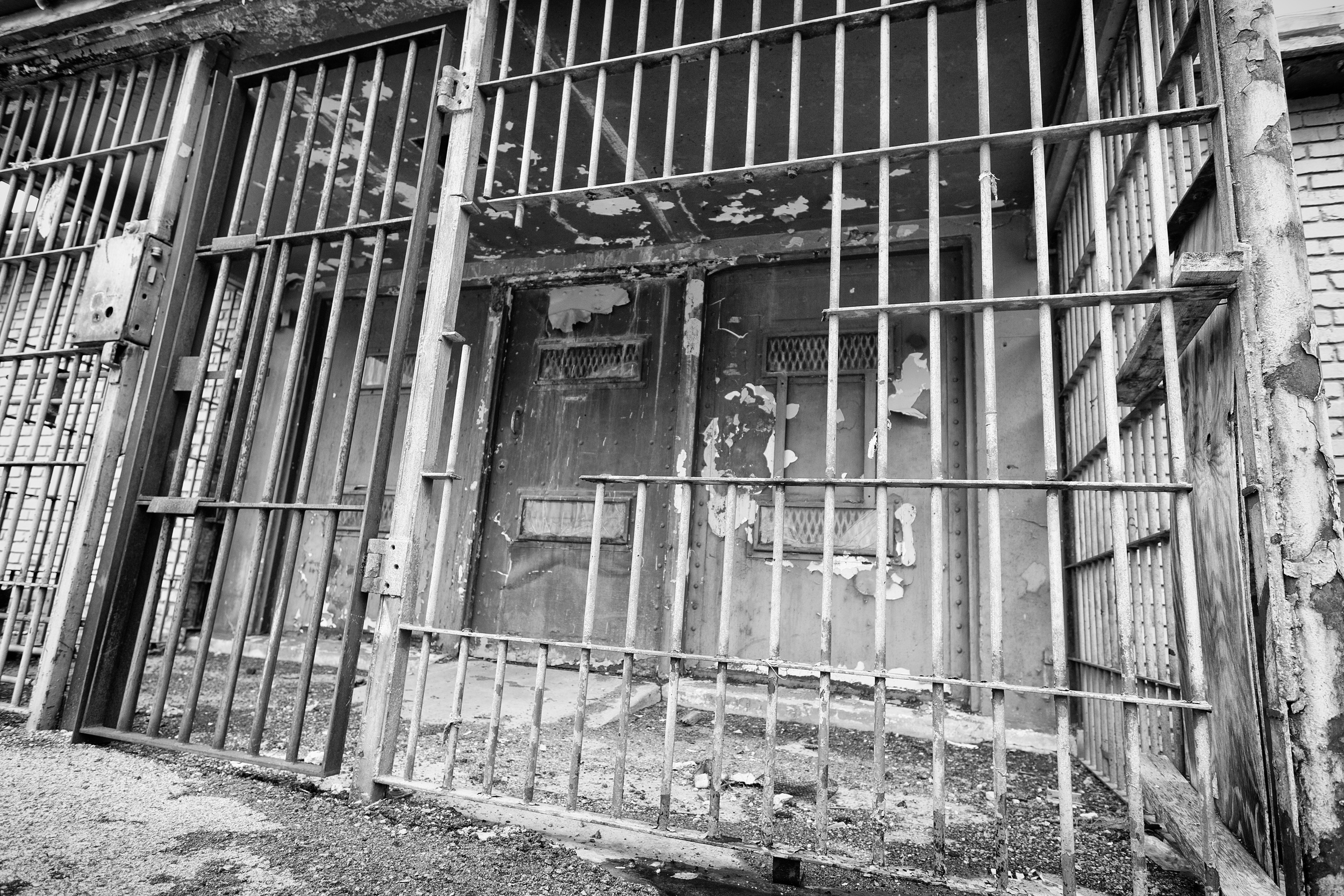
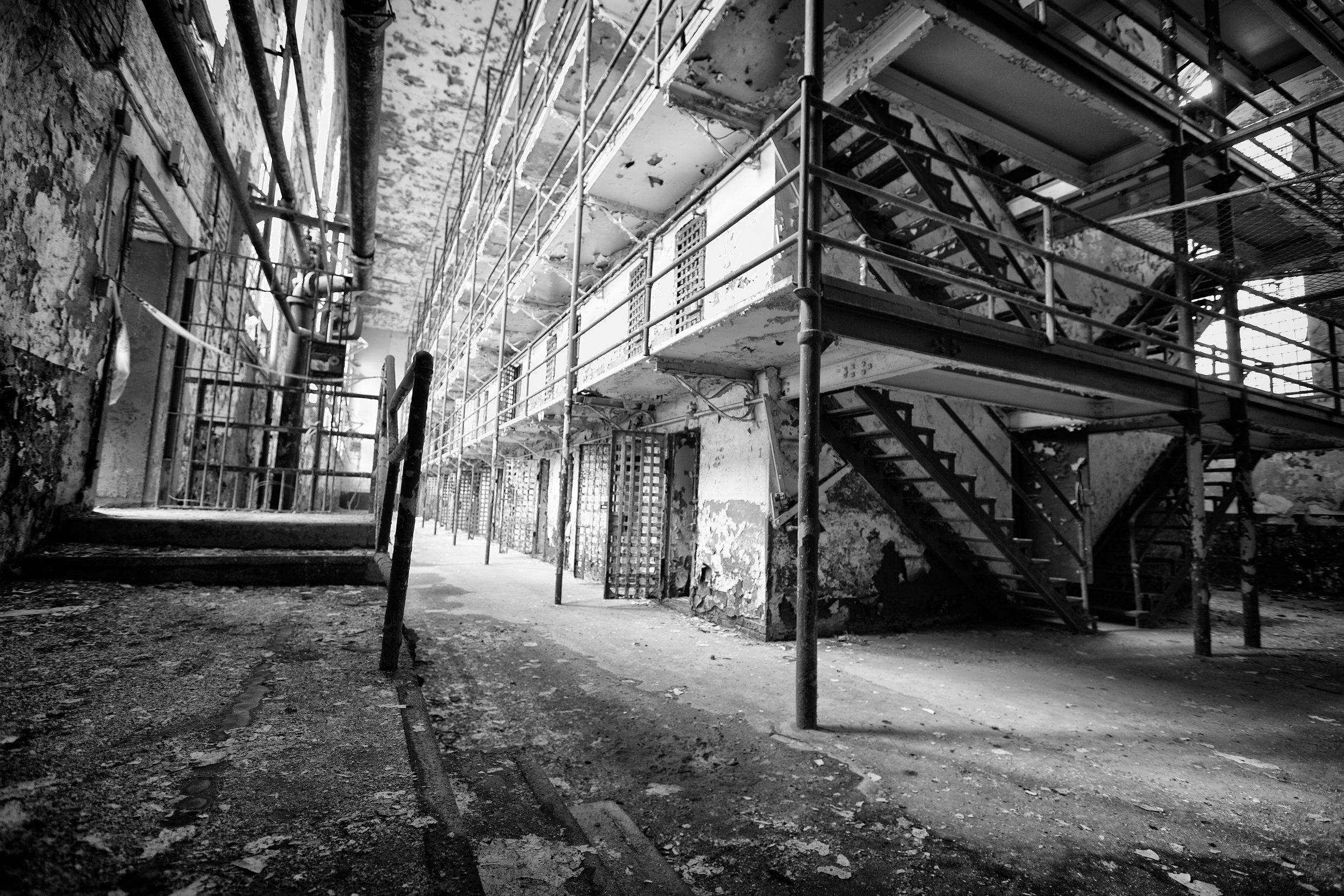

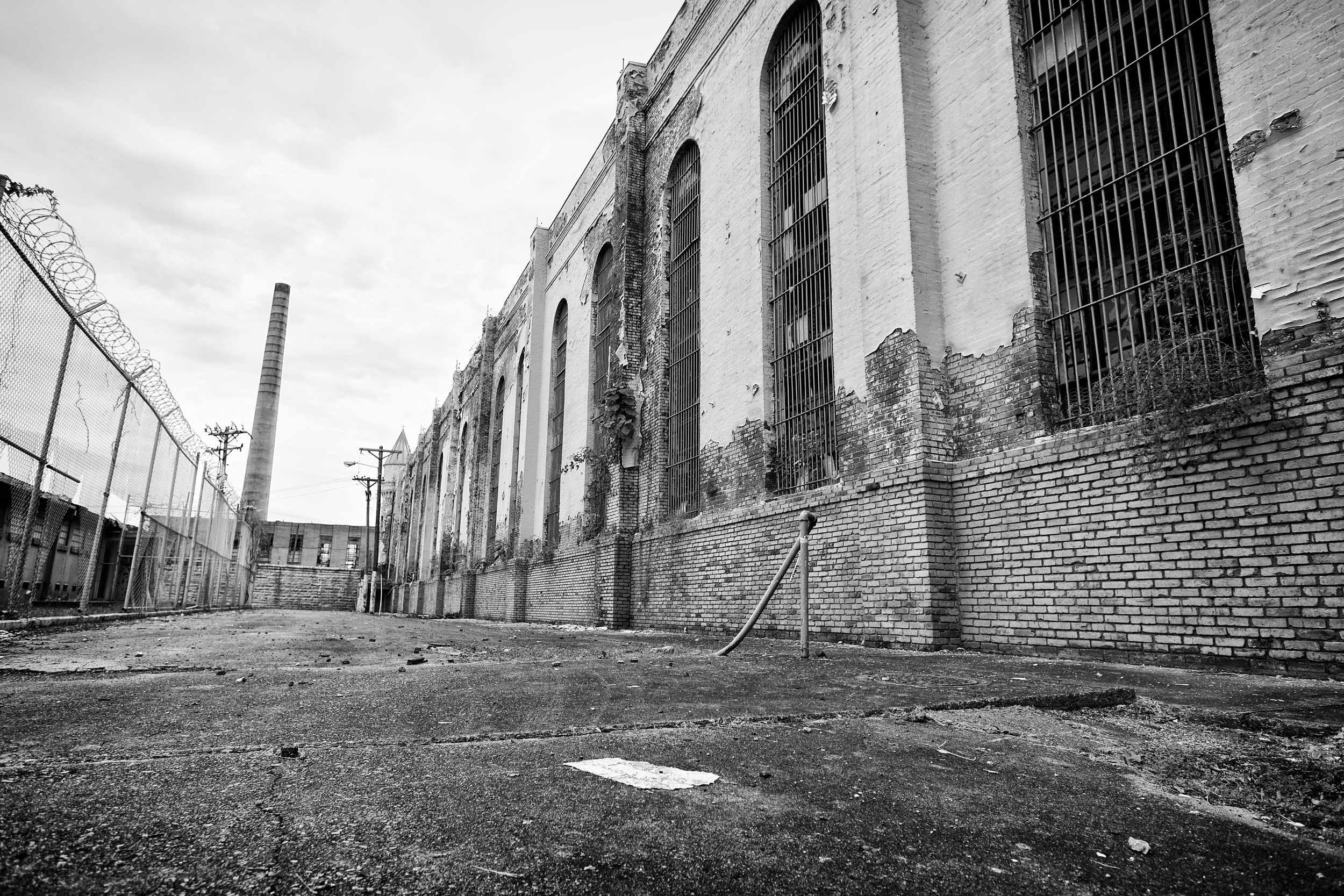
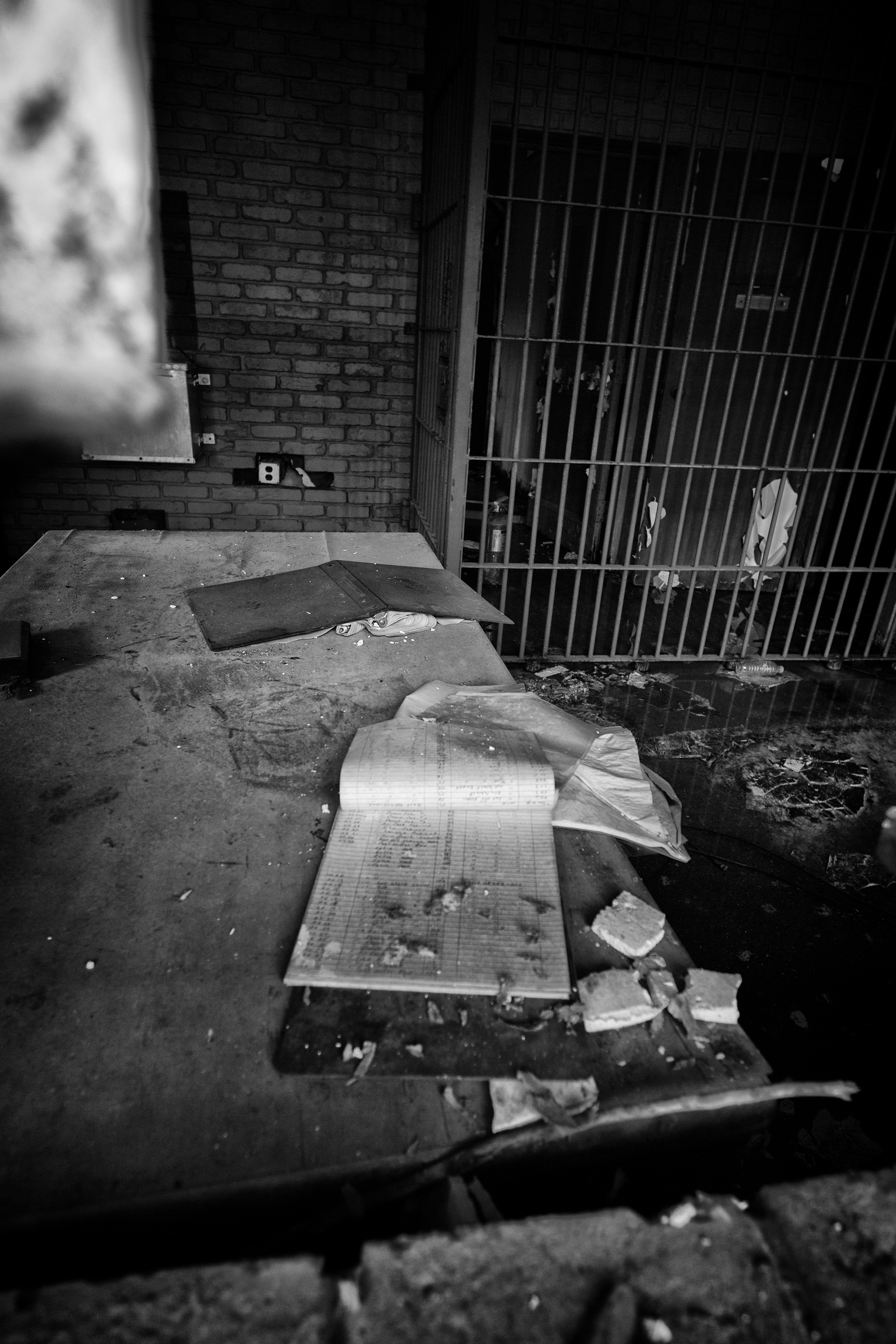
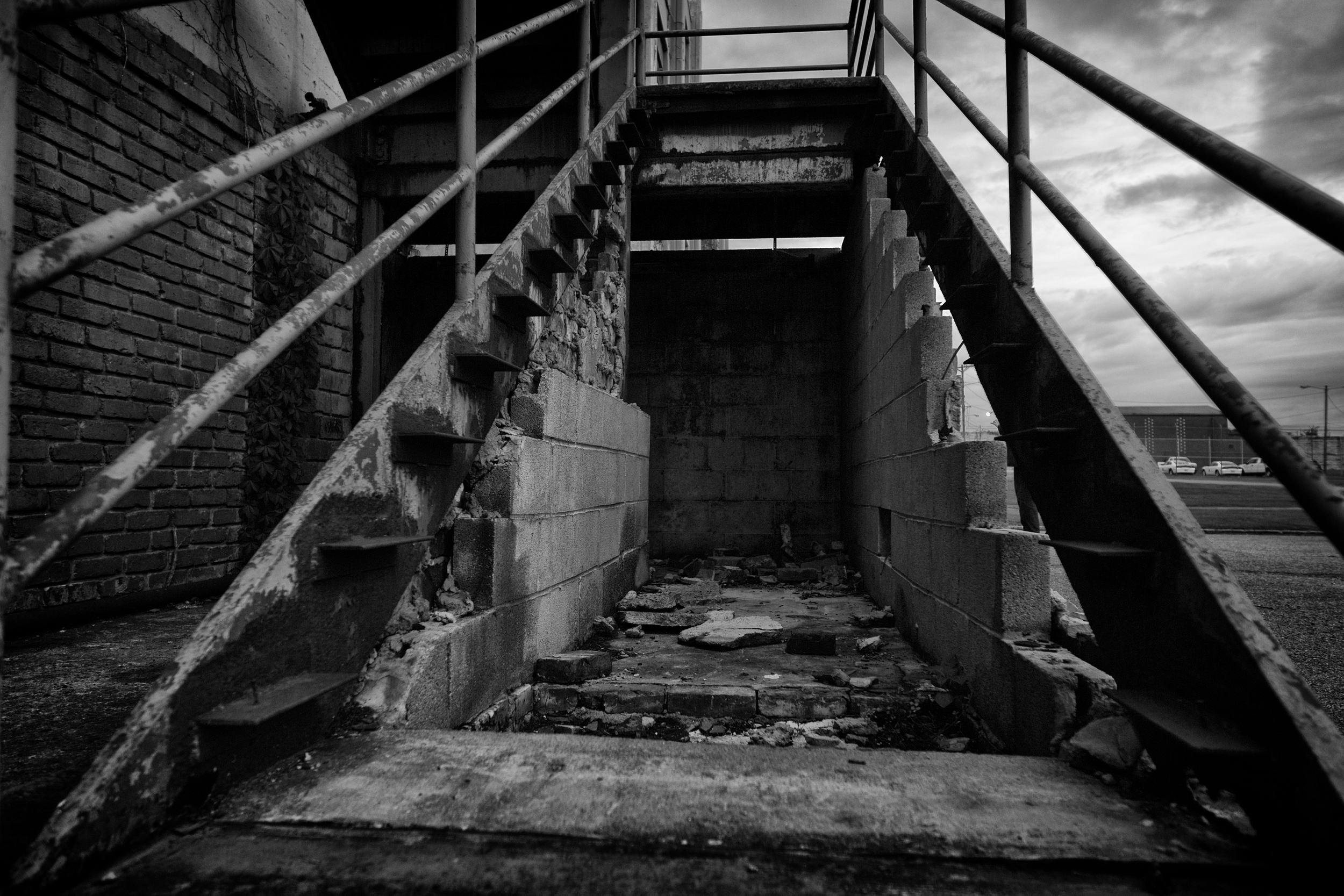

Empty Places: Tennessee State Prison
The infamous Tennessee State Prison is located near downtown Nashville, Tennessee. The massive structure first opened in 1898. As you walk around the now silent grounds, you will see towering rock walls that were stacked by hand. On top of the wall that surrounds the prison are three wires that were once fueled by a small electrical substation to make them deadly to the touch. In fact, only one prisoner survived a climb over the live wires after he wrapped them in sheets. That prisoner did not walk away, but instead was transported to medical with serious burns all over his body.
The prison had a death row area that included solitary cells for troubled inmates on the row. Death row also had an electric chair for the final days of some inmates in Tennessee.
The prison, which closed in 1992, is now overseen by the Tennessee Film, Entertainment and Music Commission. However, the grounds are still cared for by the Tennessee Department of Corrections. In other words, you may still see inmates walking the grounds.
Today, the deserted prison remains under the watchful eye of a 24-hour guard and staff. The interior of the structure is off limits to the public due to the large amount of asbestos inside.
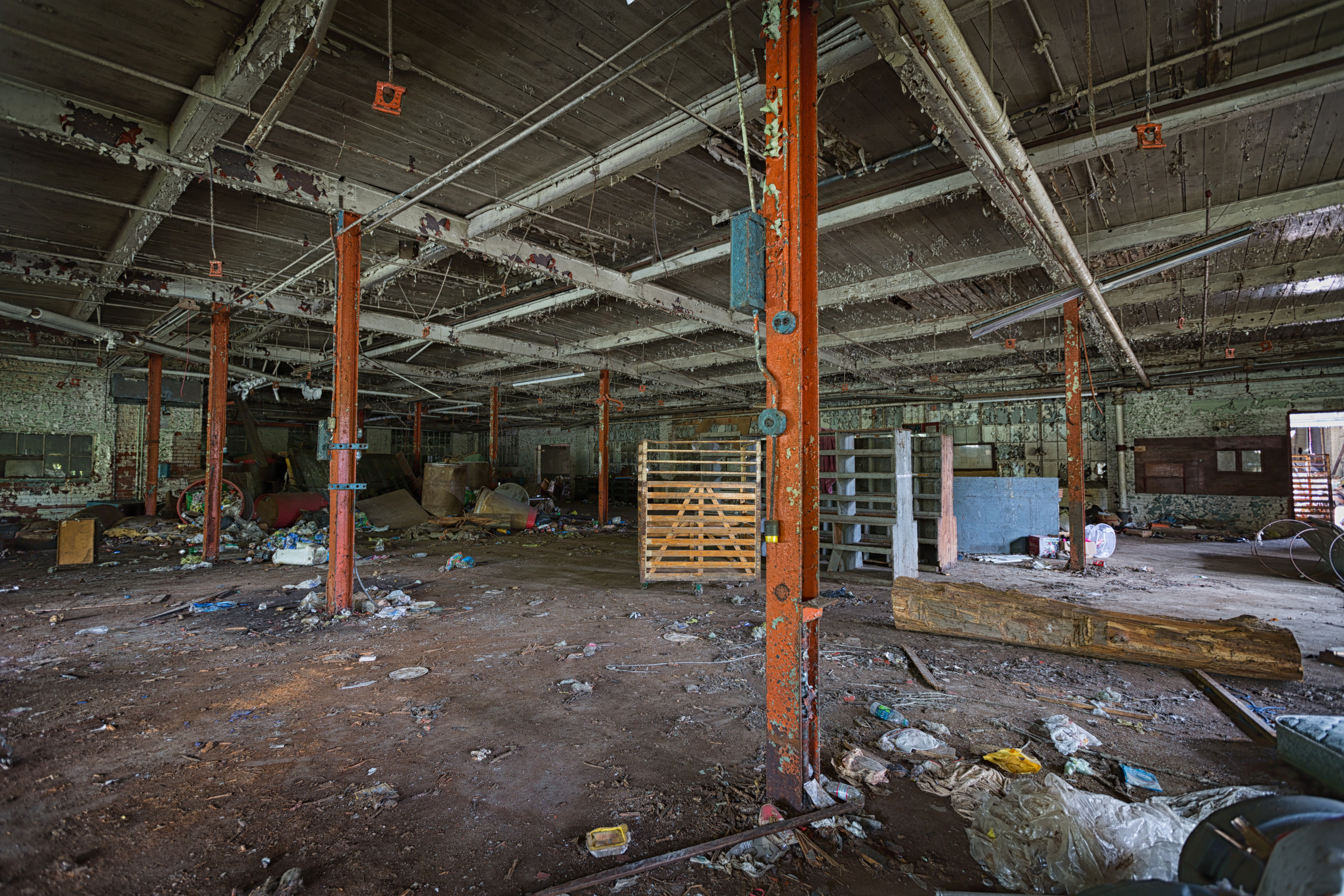
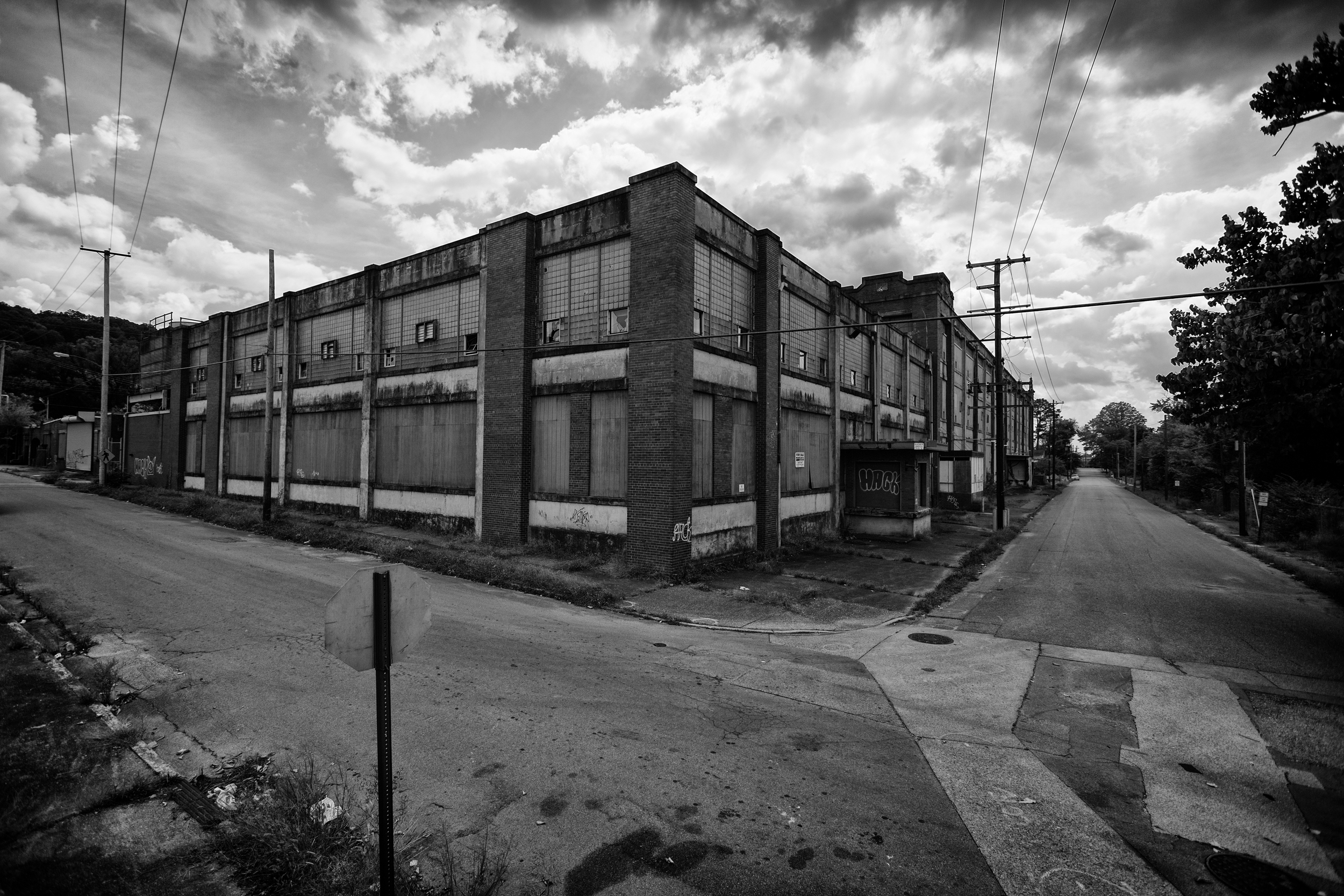

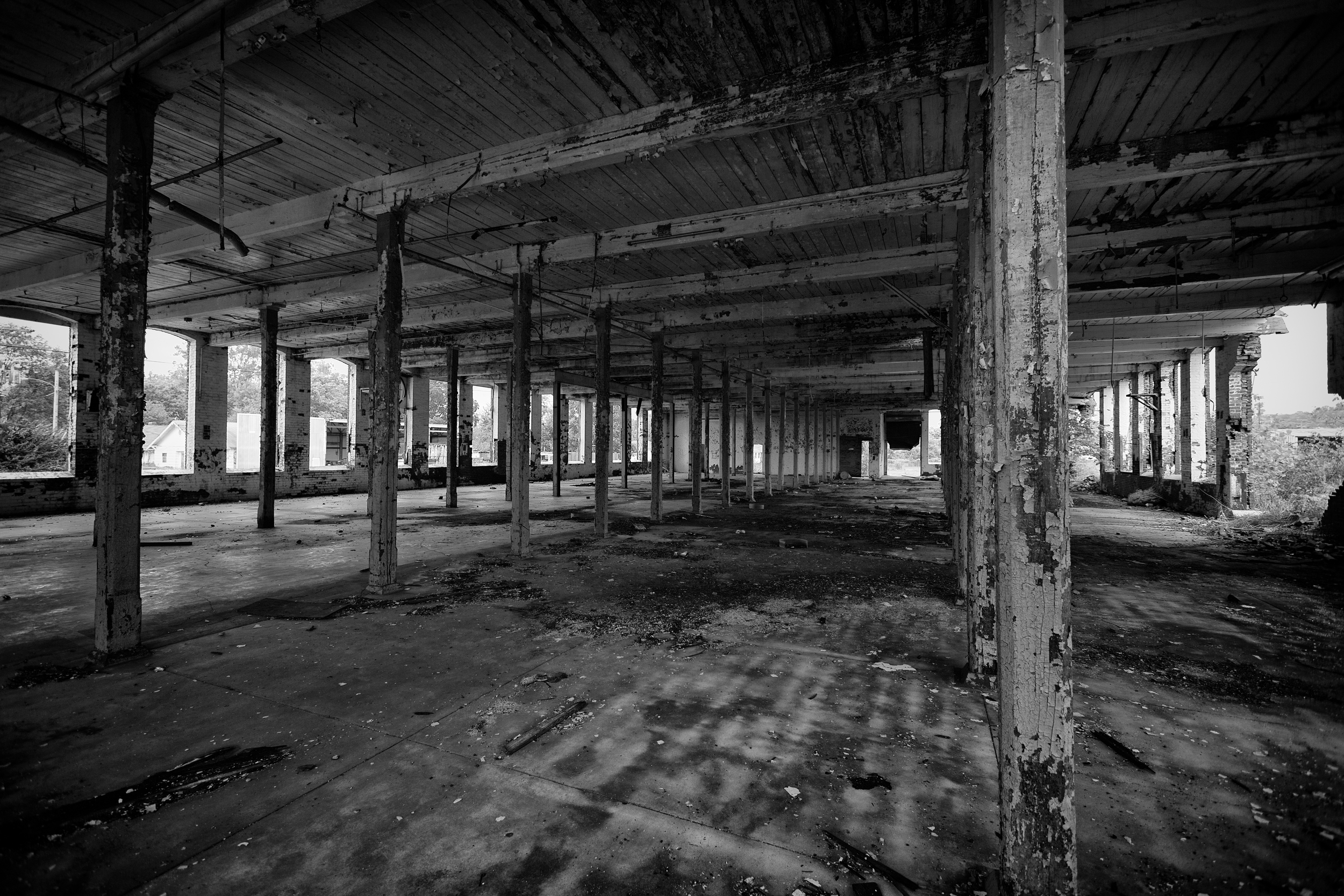


Empty Places: A visit to a Chattanooga factory built in 1925
This was part of an old textile company in Chattanooga, TN. In 2004, a three man demolition crew illegally removed asbestos from the property and created asbestos-containing dust that contaminated the area of 17th Street between Watkins and Dodds avenues. The men were later sentenced to four years behind bars in a federal courtroom.
The company that owned the building was called Standard Coosa-Thatcher. It was founded in Piedmont, Alabama in 1891. The Chattanooga location was built in 1925.
Today, the old factory has been vacant for over 20-years. Reports indicate it may soon be developed into luxury apartments.
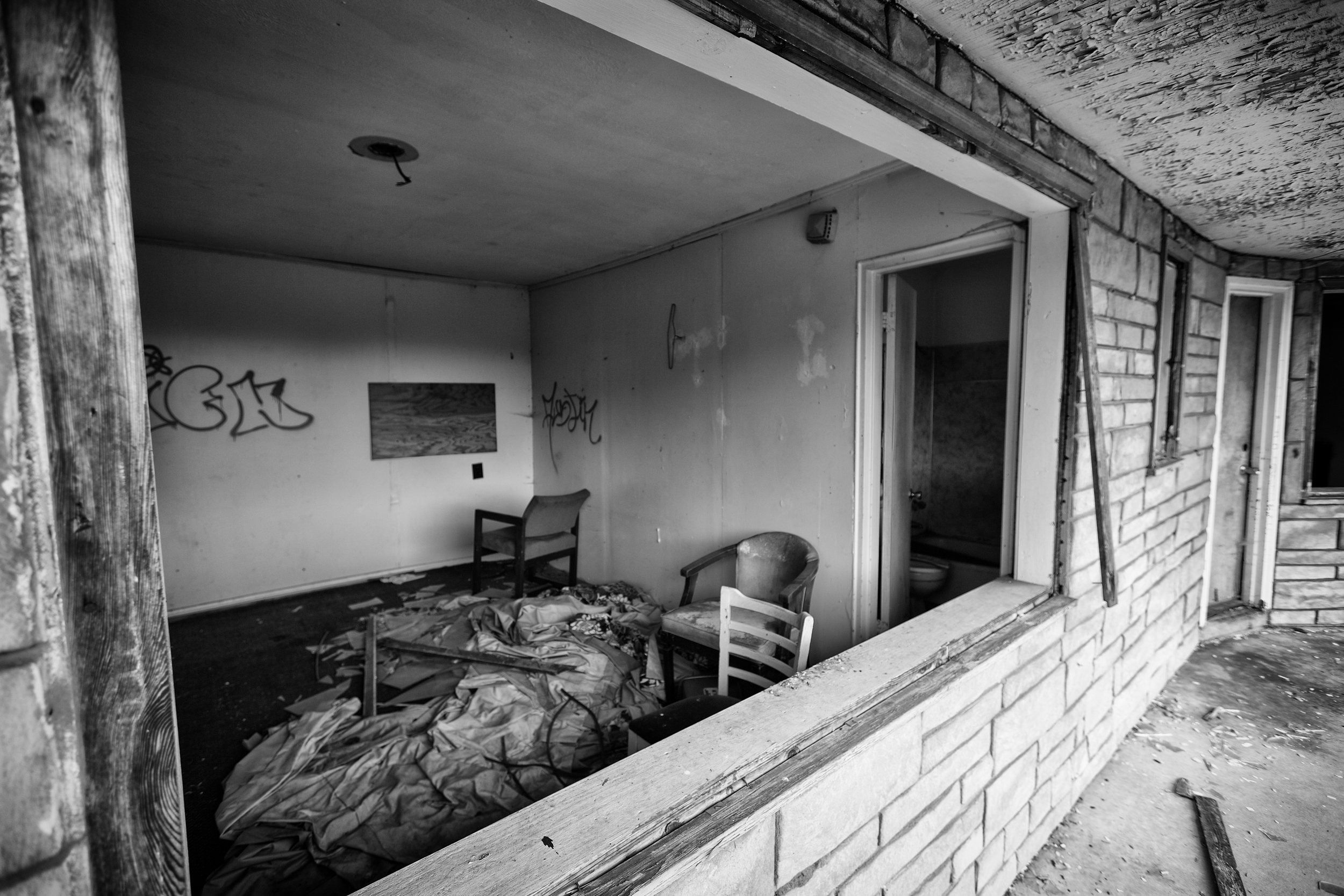
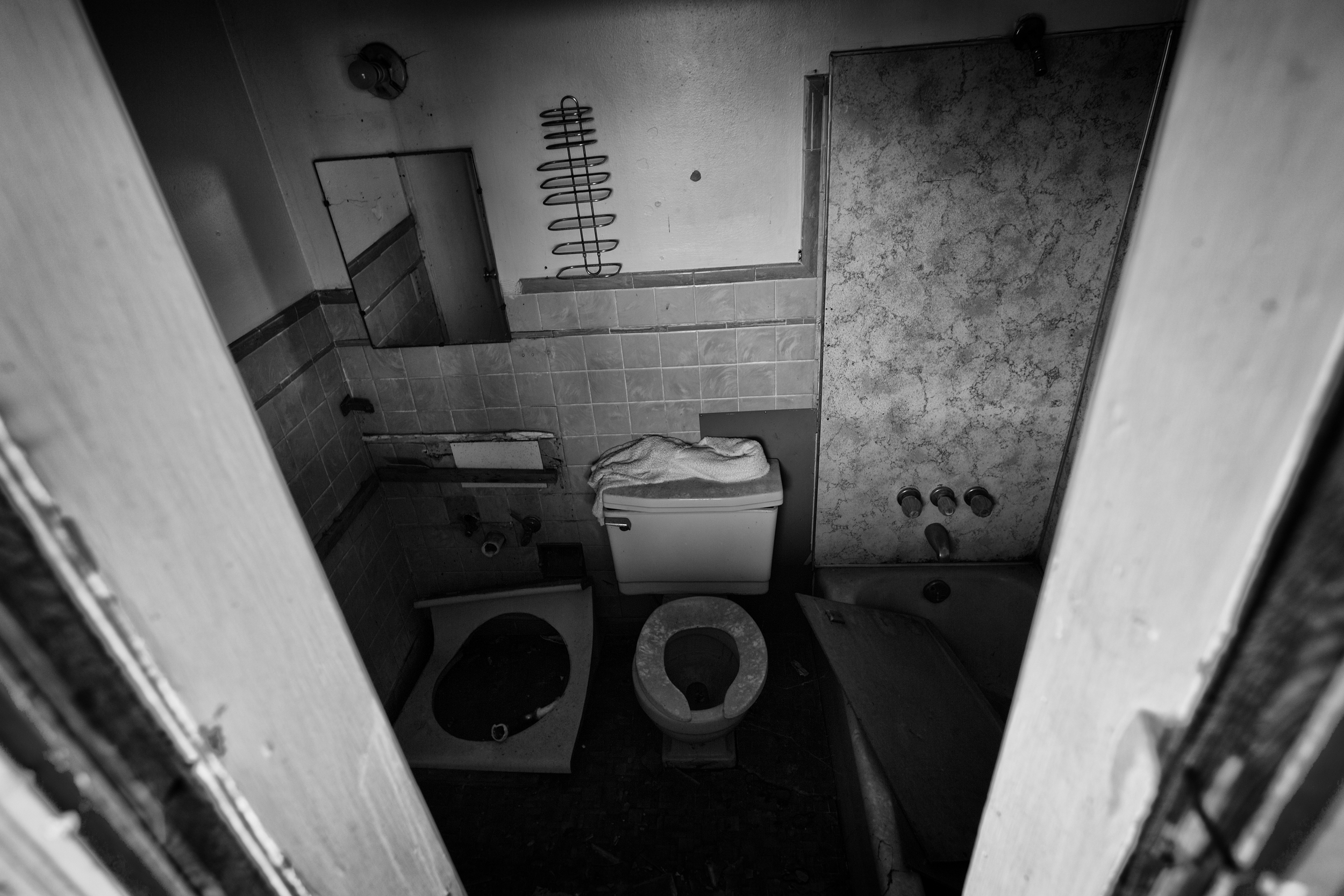
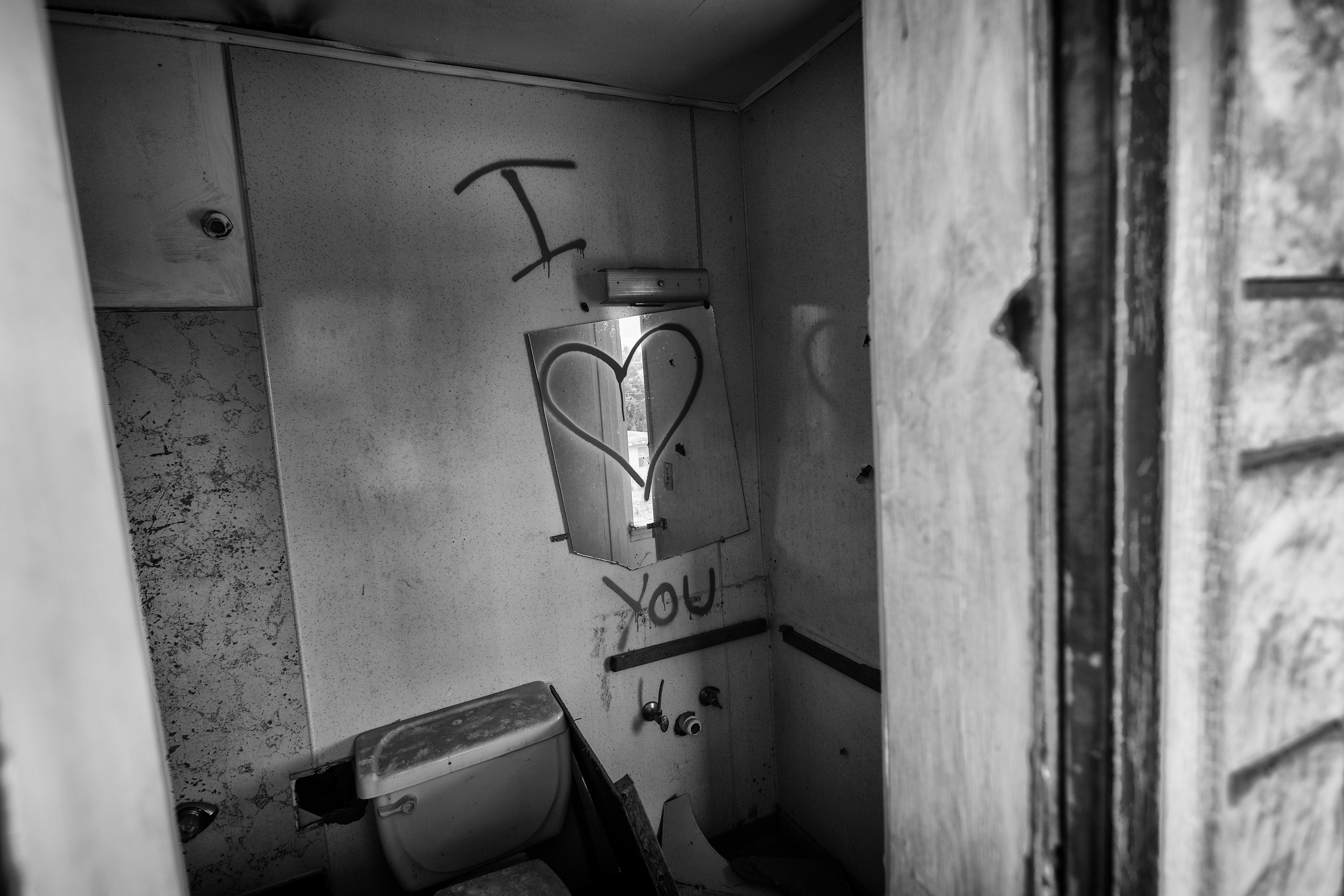
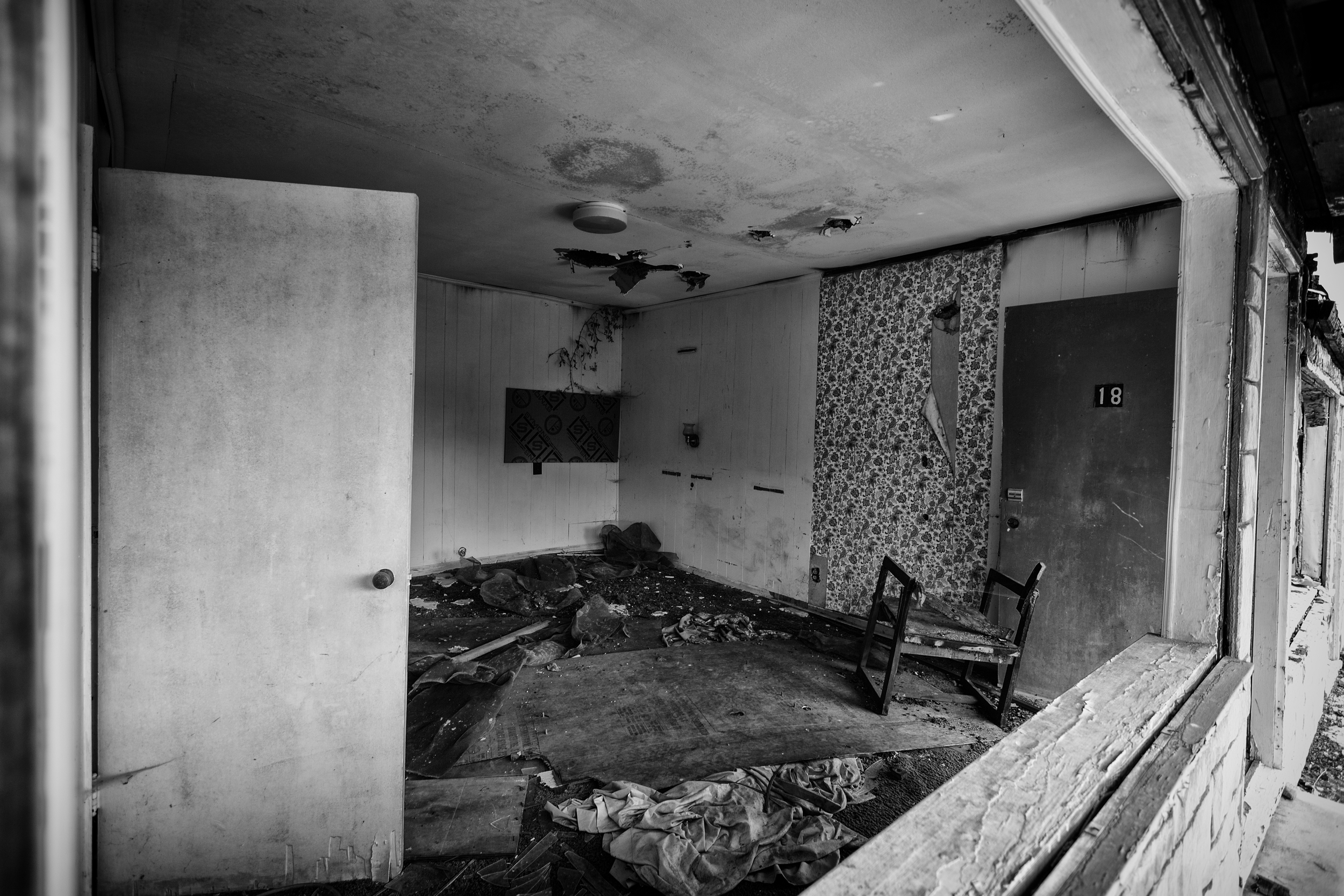
Empty Places: The not so pretty place to stay
Do you ever get the feeling you have been here before? That is what I love about exploring old roadside motels. You can remember as a kid stopping at a place like this. Perhaps in Florida, South Carolina or Virginia?
The basic layout of the room and the old wallpaper remind of what was once a nice place to lay your head after a long drive. Maybe you remember returning to the room after a long day at the beach or after a night out on the town. Those memories are now mixed in with the debris left behind by those who moved in to steal what furniture was left.
The once clean motel rooms are now littered with trash from vagrants, passing animals, fire from homeless men and women trying to stay warm in the winter, etc.
Empty Places: Another ghost town building of America
I love to go urban exploring. Here is a deserted roadside motel I found on a hillside in Tennessee. Overgrown, no sign of life.
Empty Places: The overlooked vacant structure
This large building stands in a heavily used area of Chattanooga, TN yet has stood vacant for decades. It has been tagged and pillaged, but remains untouched by viable occupants. I use the word pillage, only because of all the broken windows and doors that vagrants, vandals and explorers have used as access points. Doorknobs and other small items are missing.
The building is next to an outdoor market / pavilion, a baseball field and a dog park. What could be here? Local residents have voiced the idea of art studios, a brewery, loft apartments and more.

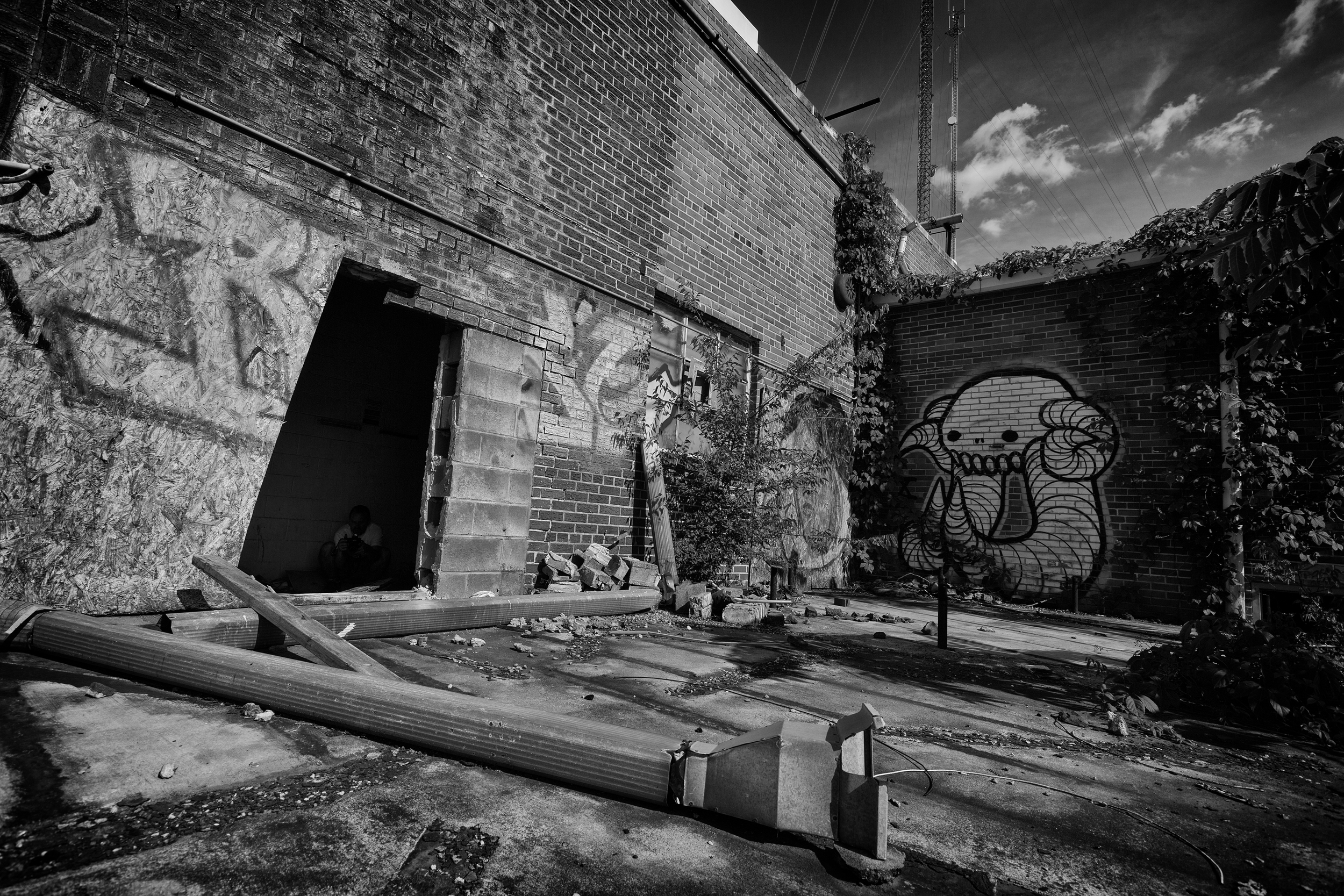
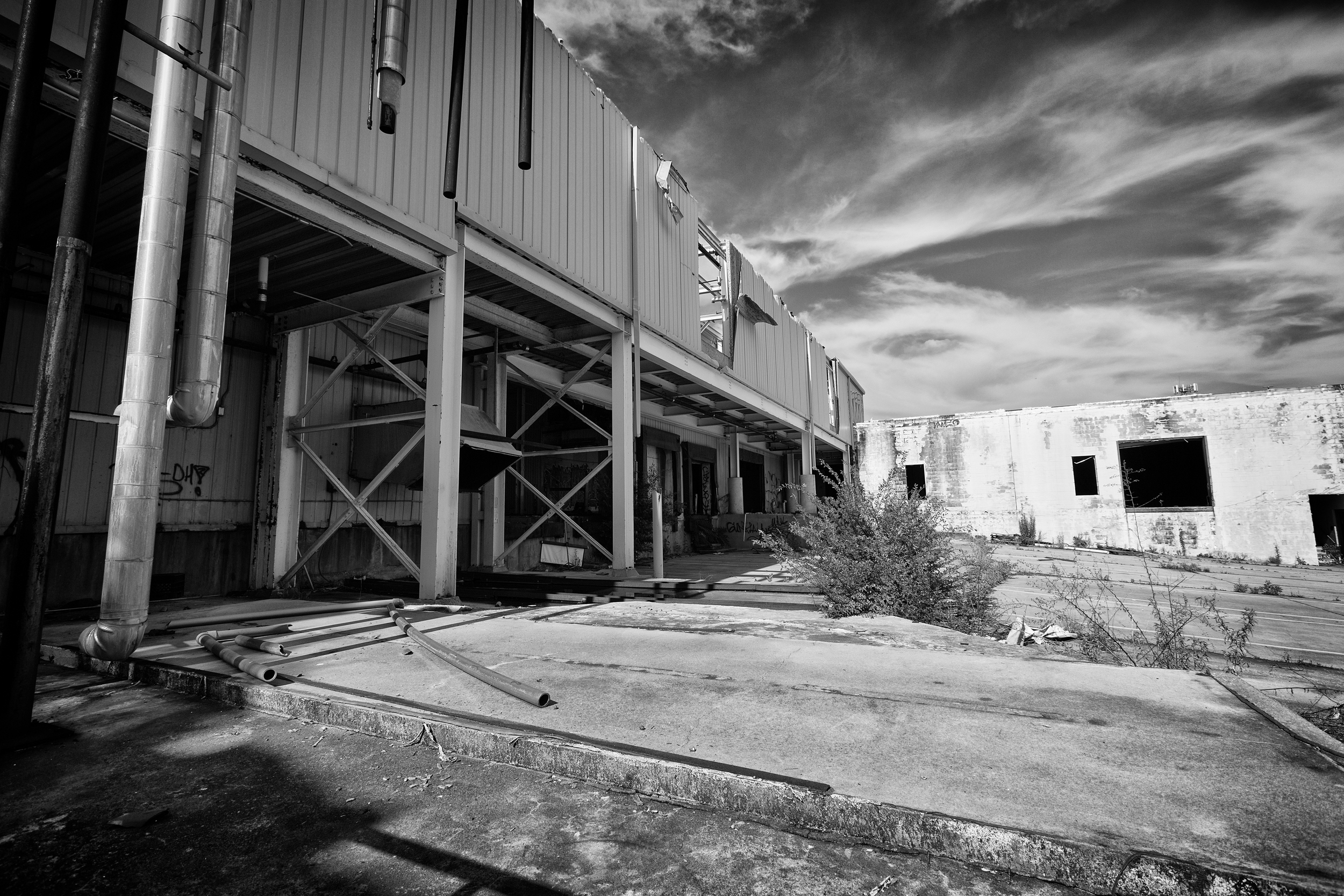



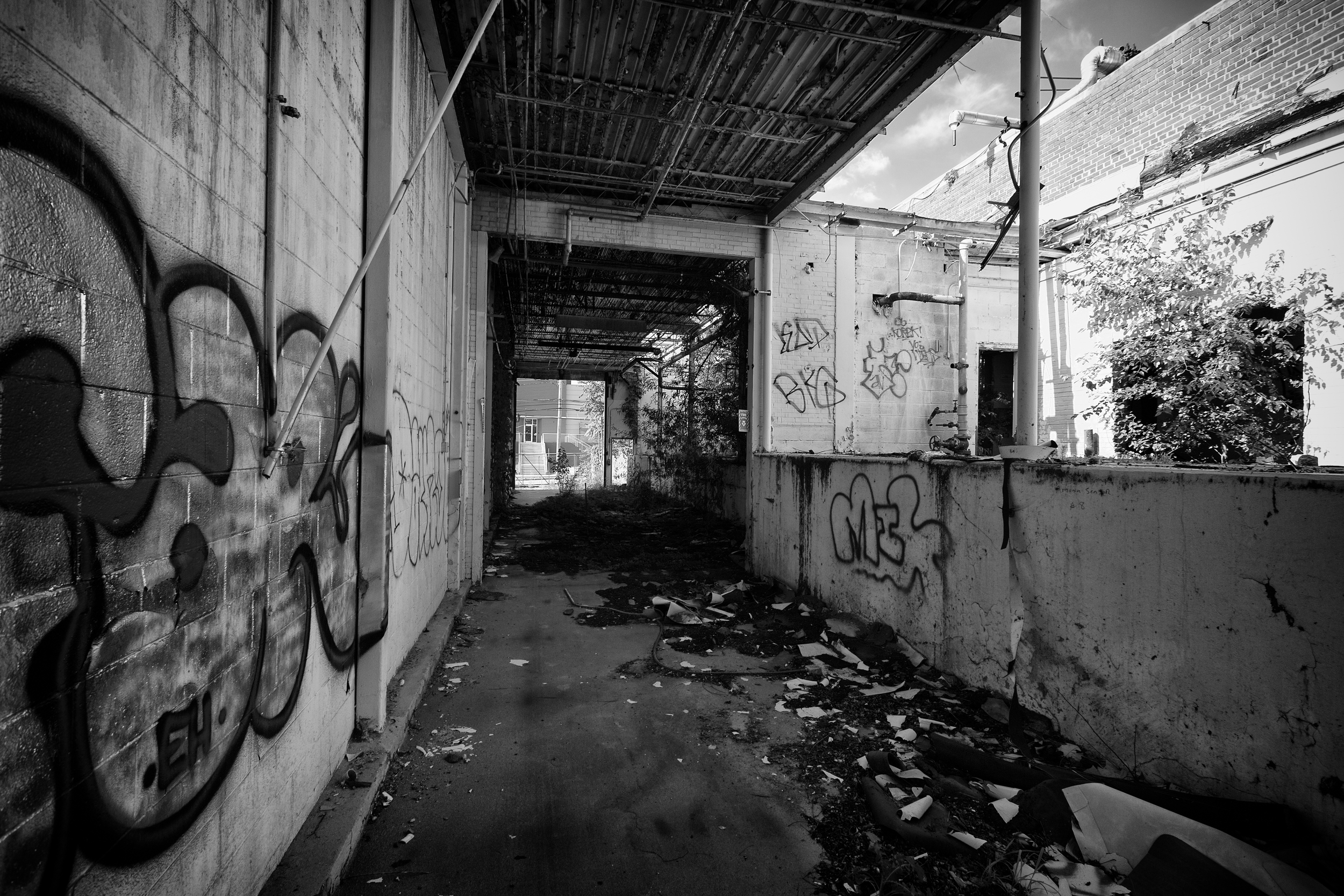
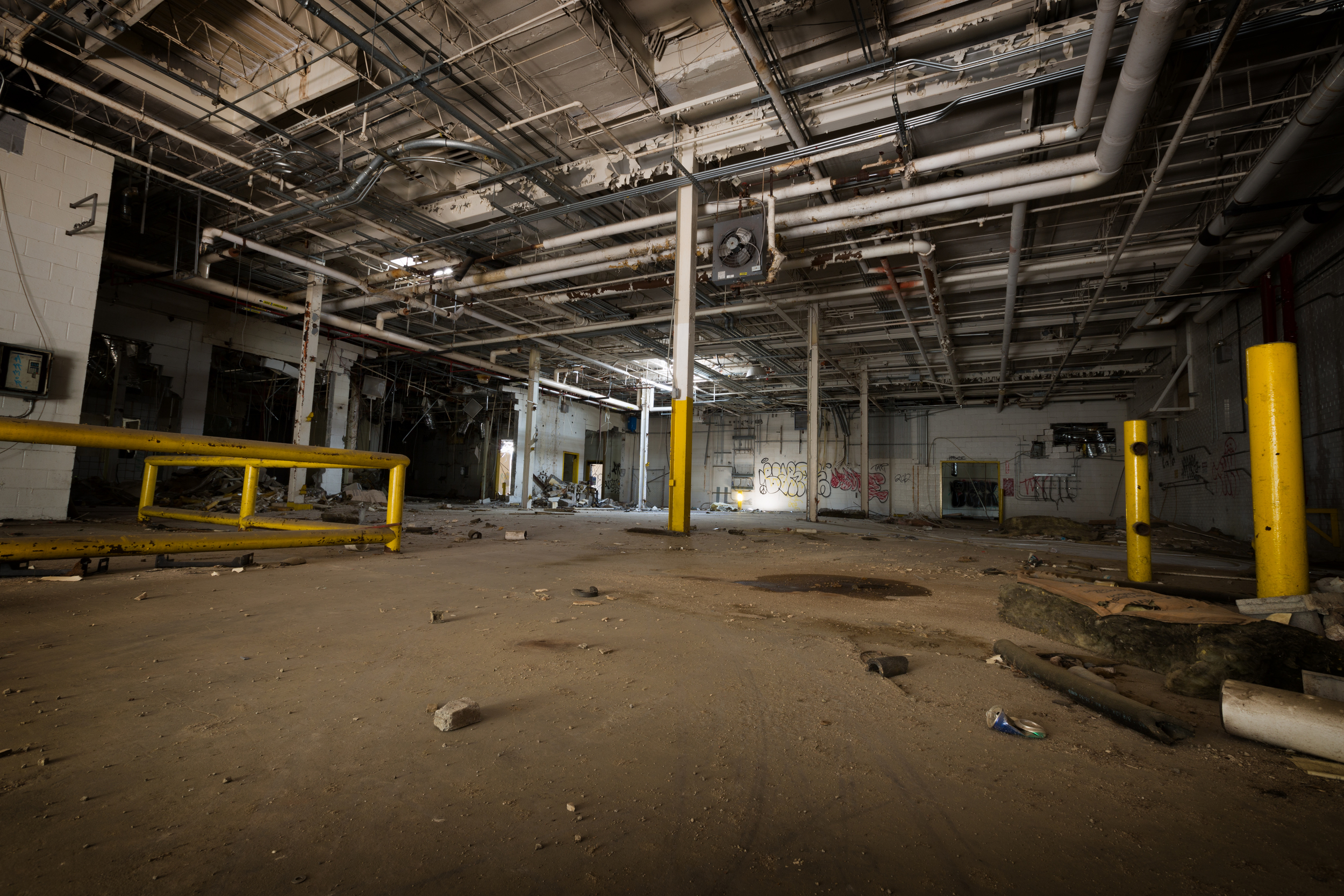
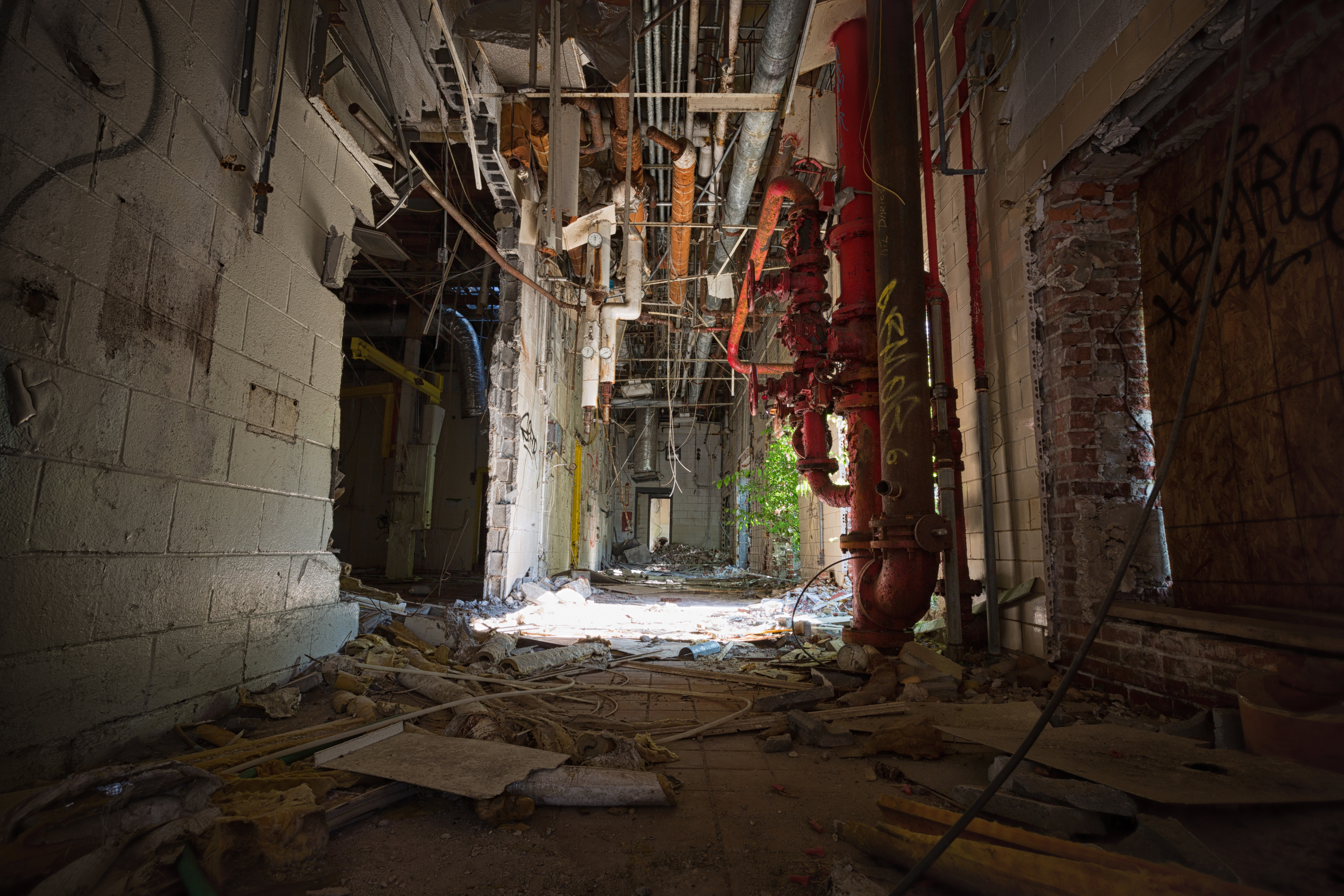

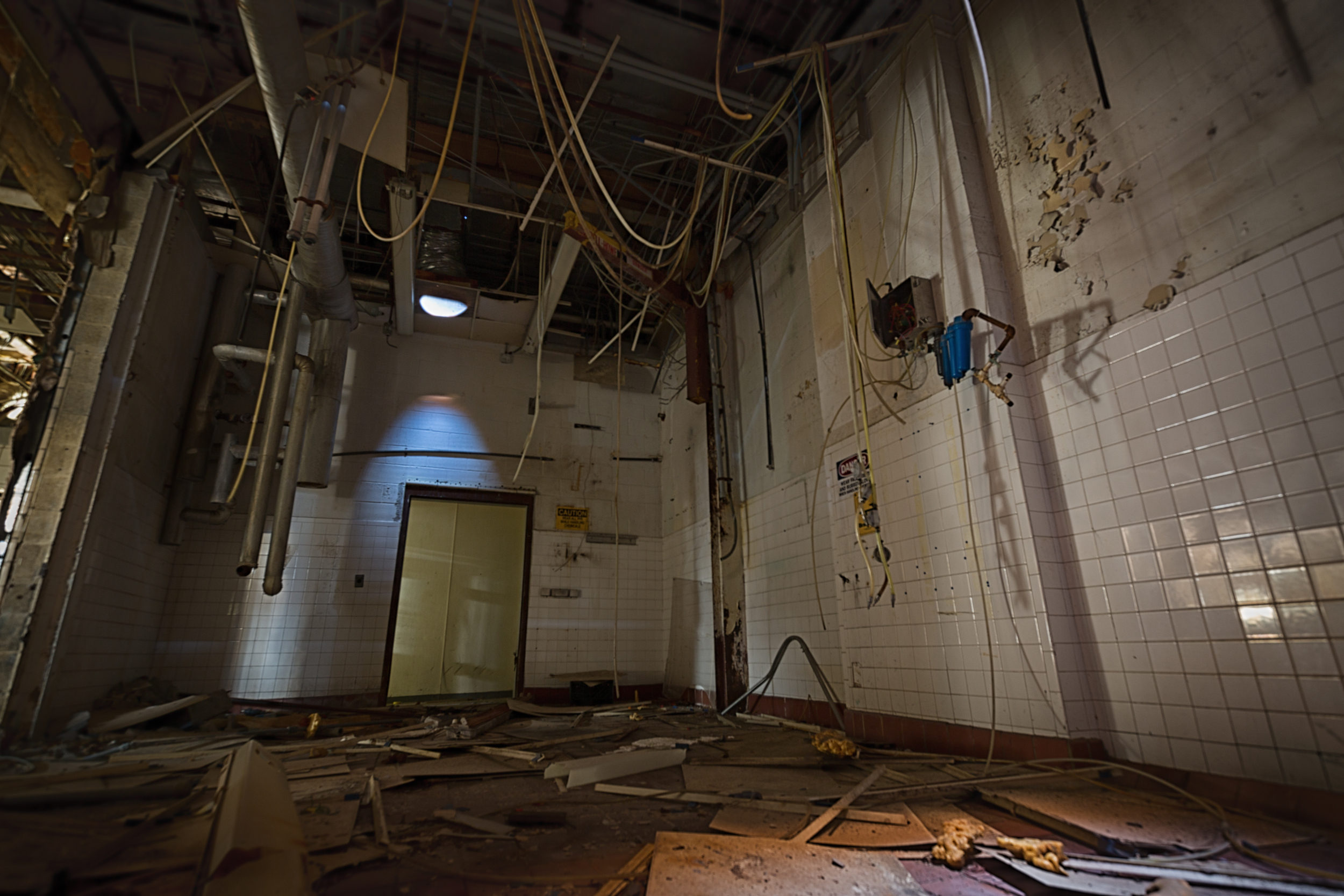
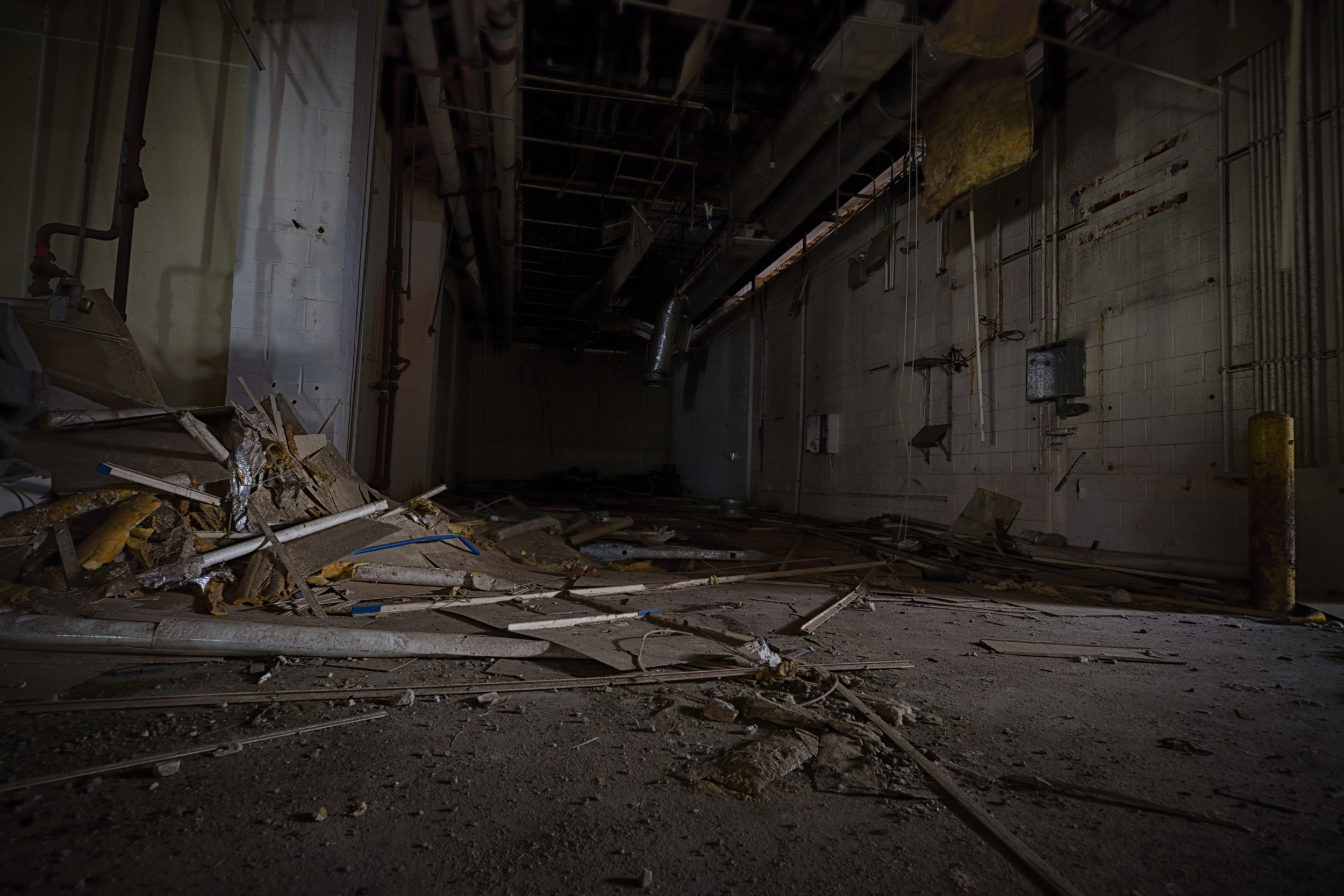

Empty Places: Got Milk?
I was honored to tour the old Flagship Atlanta Dairy, LLC in Georgia, thanks to the generosity of a local government worker at the property that is now used as a parking lot for Government of Atlanta vehicles.
In these photos, I decided to make the exterior shots in black and white and the interior ones in color. Why, you ask? Who knows?
I do not know why the Flagship Atlanta Dairy, LLC closed, but I have to admit that I found data from the federal government quite interesting. Evidently, the company had a Food Service Contract with the Department of Defense.
In 2005, the dairy had a contract with the Department of Defense that added up to $98,037. By 2008, that number grew to $2.28 million. In 2009, the contracted amount dropped significantly to a mere $3,225.

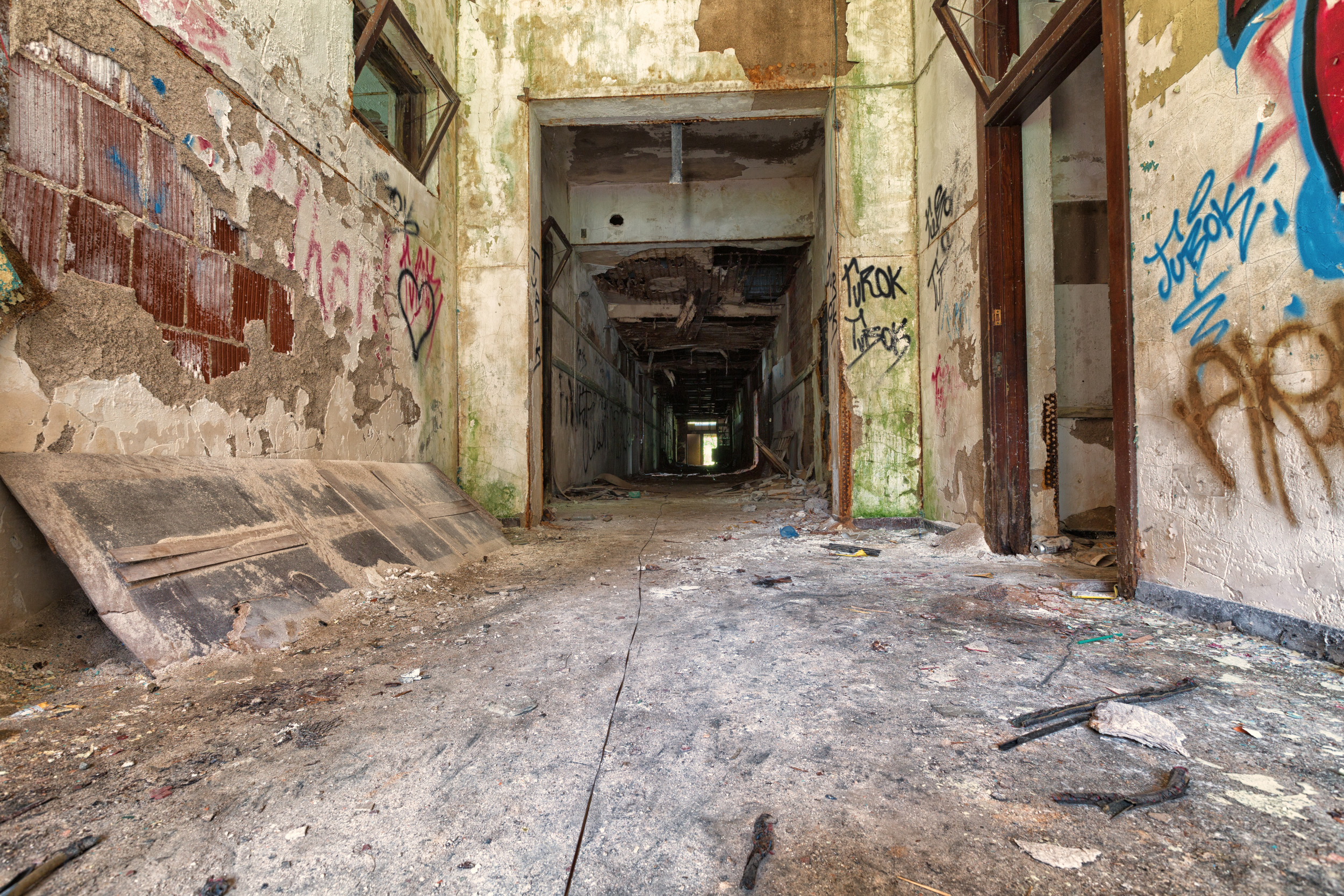



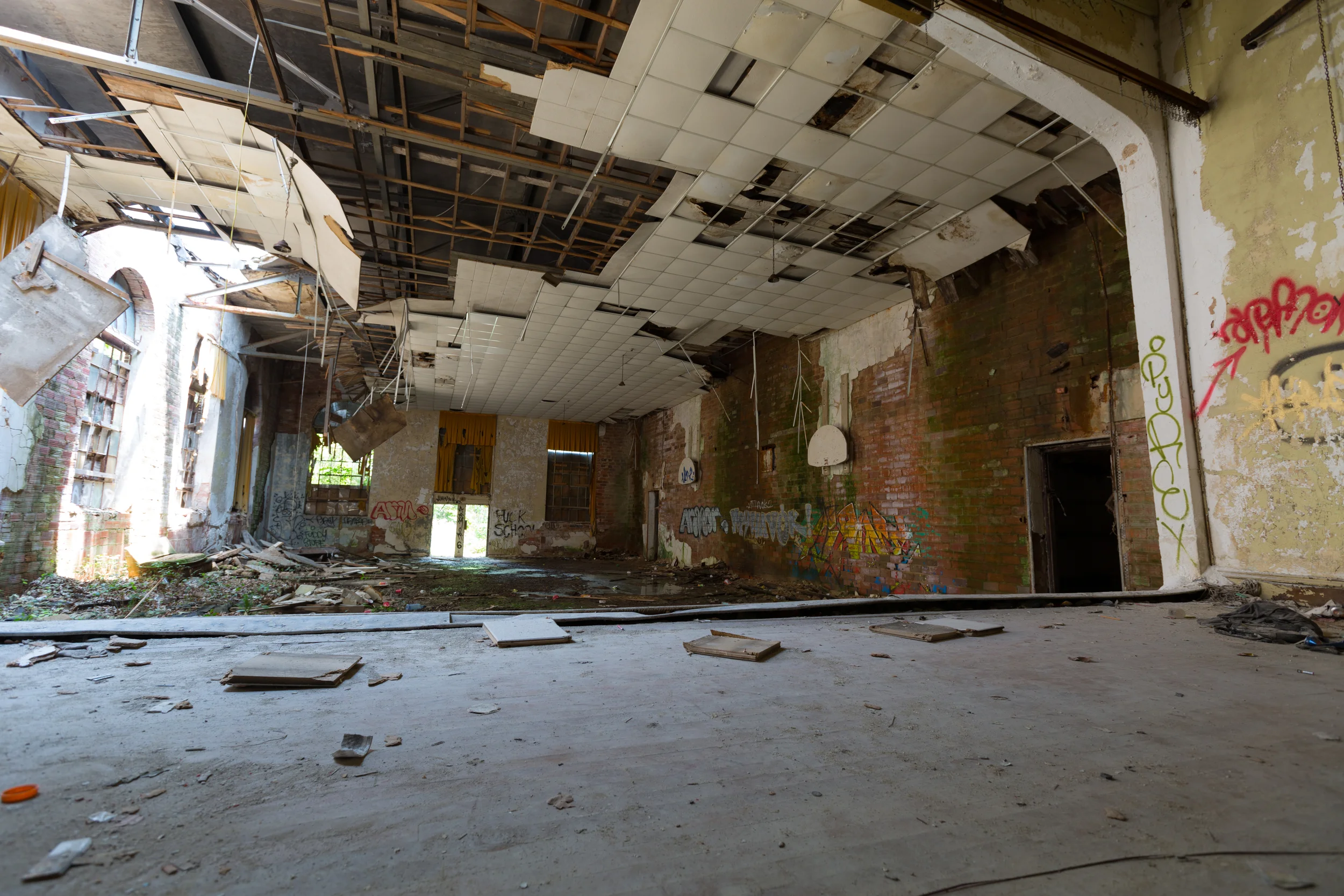
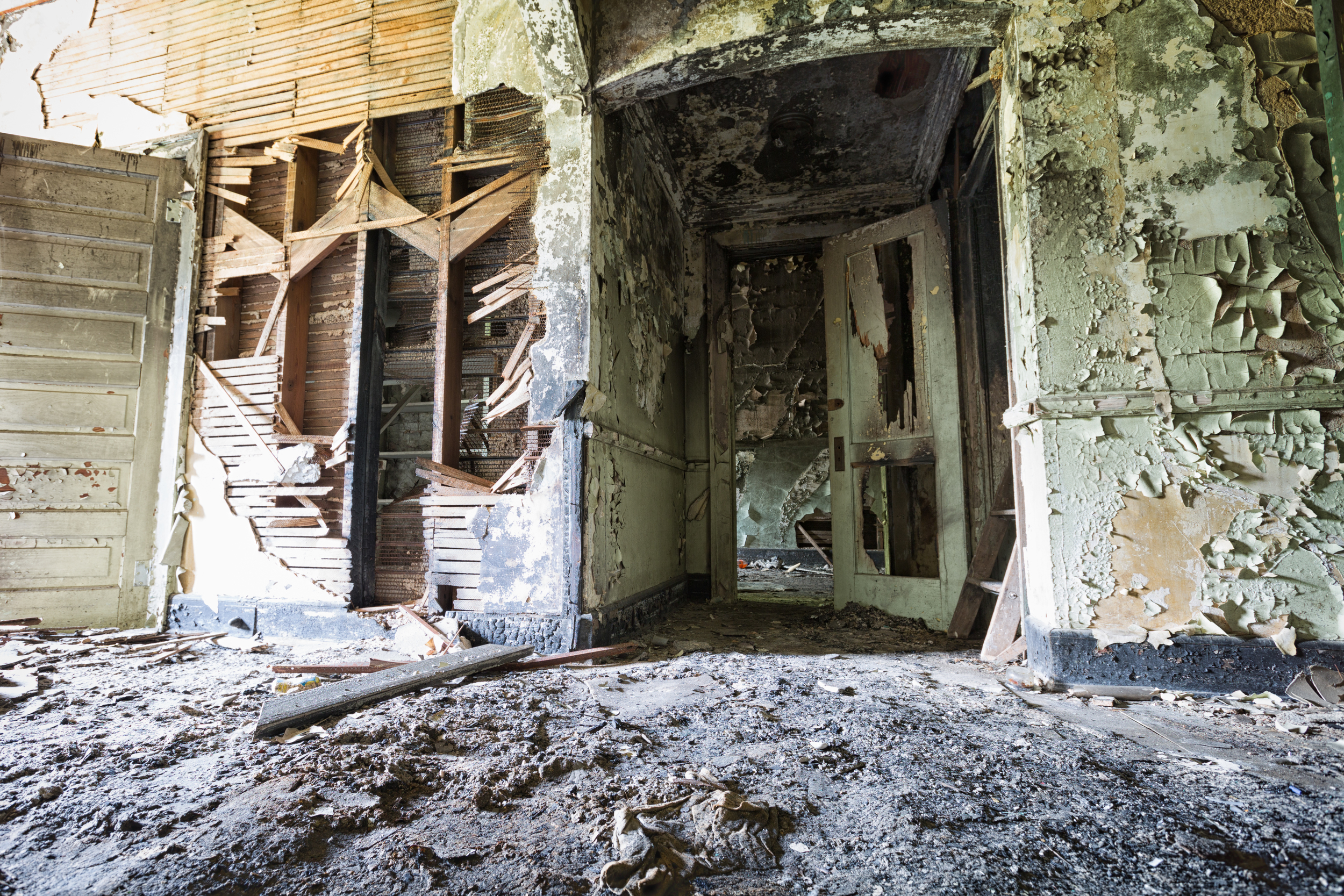

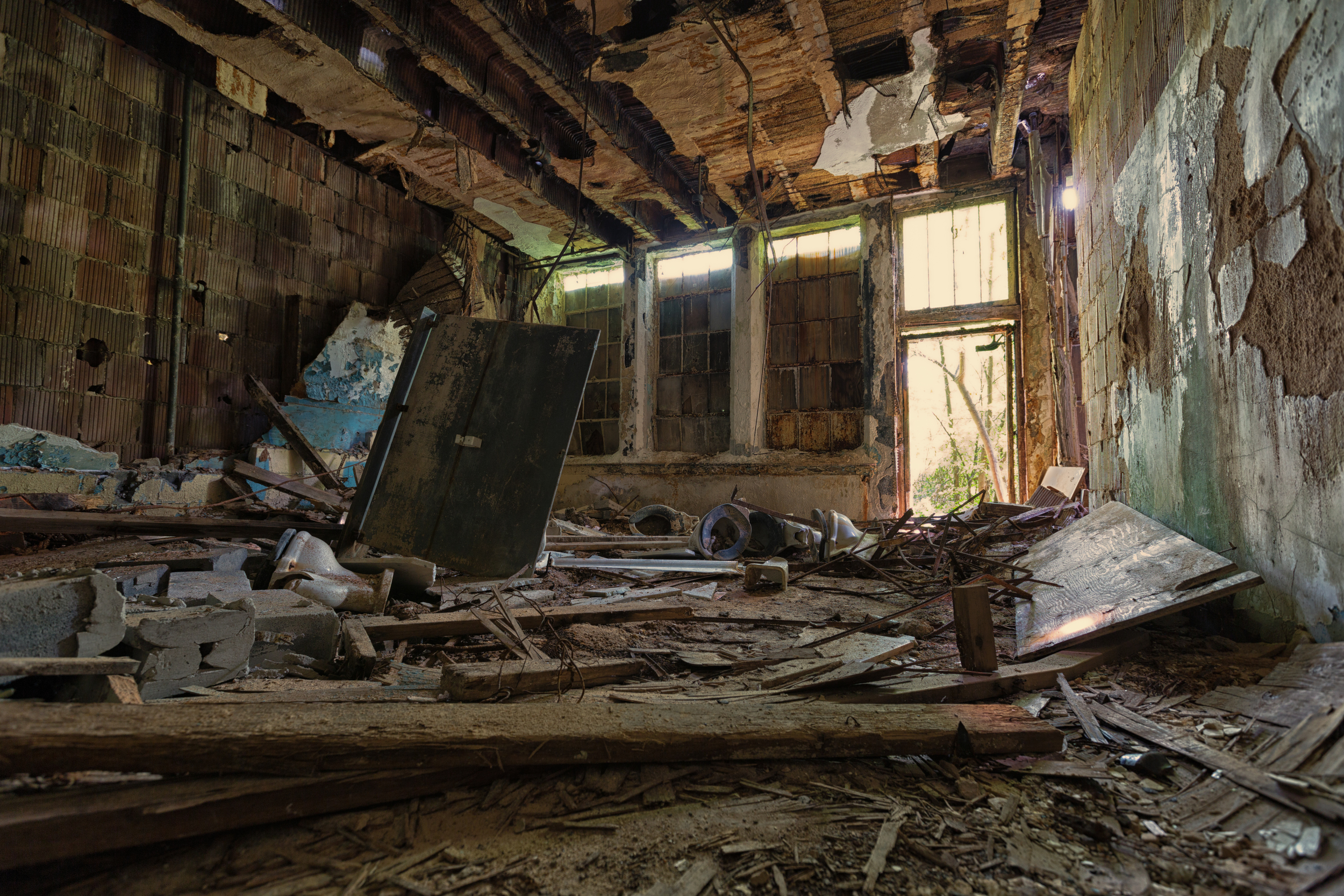
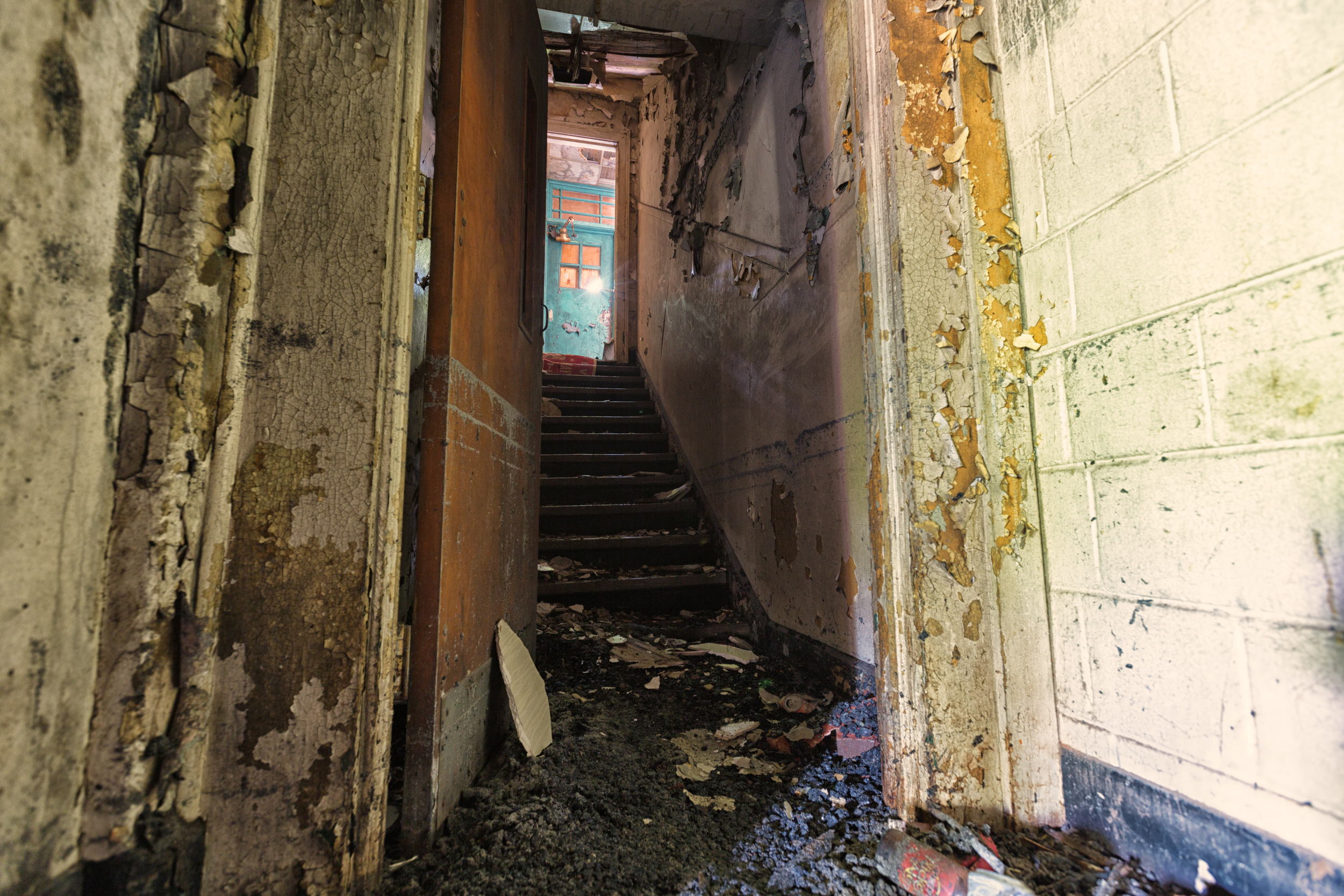
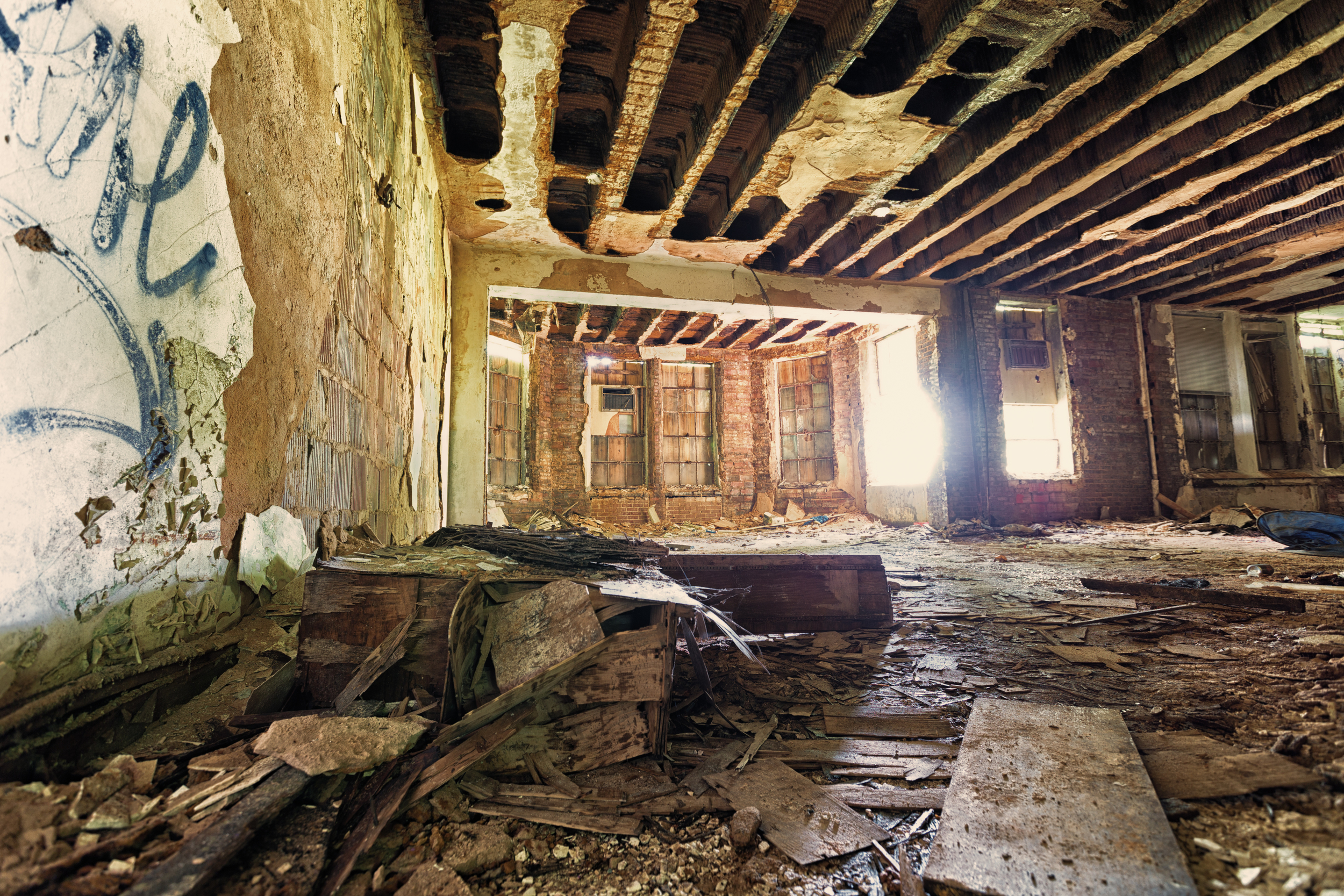

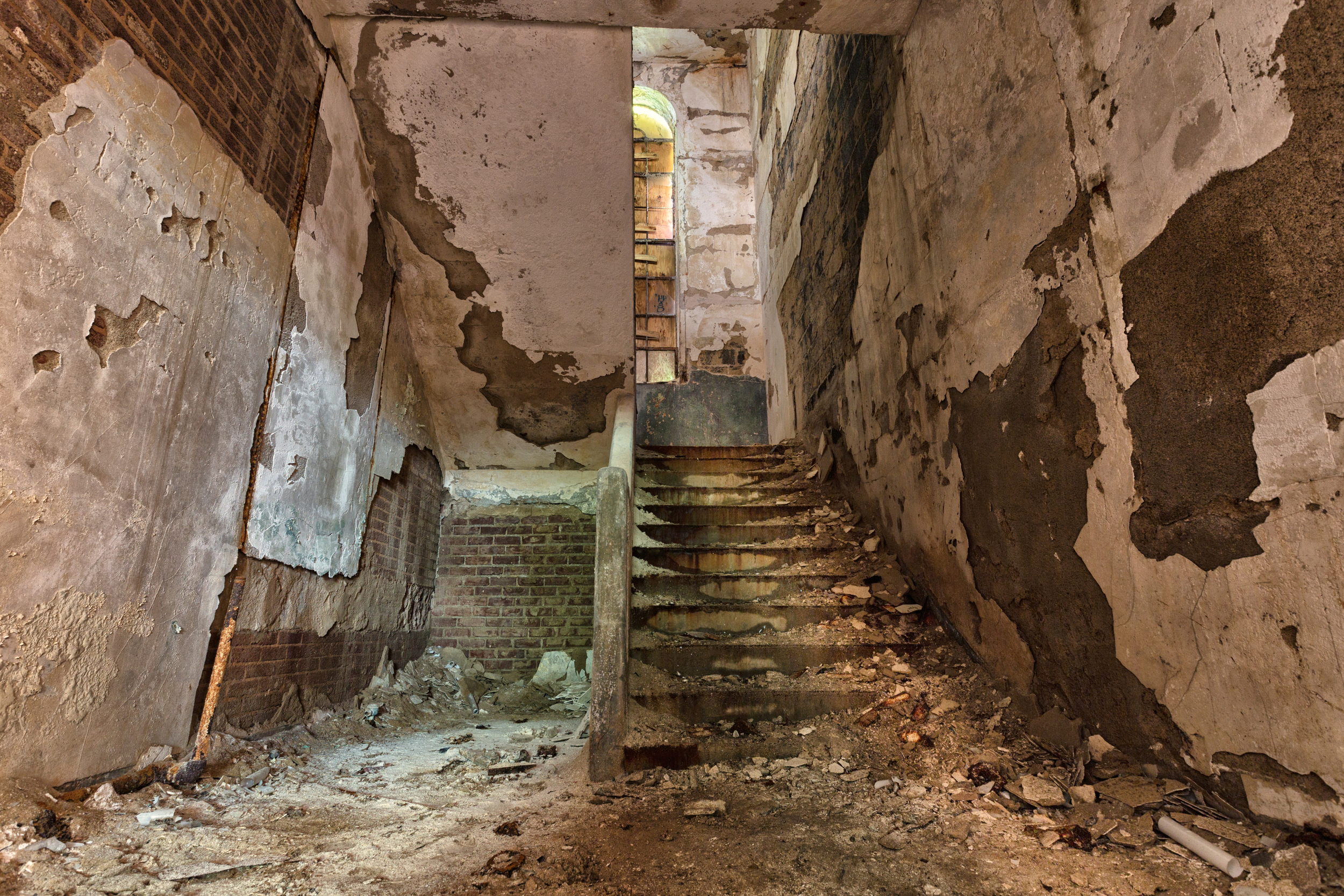
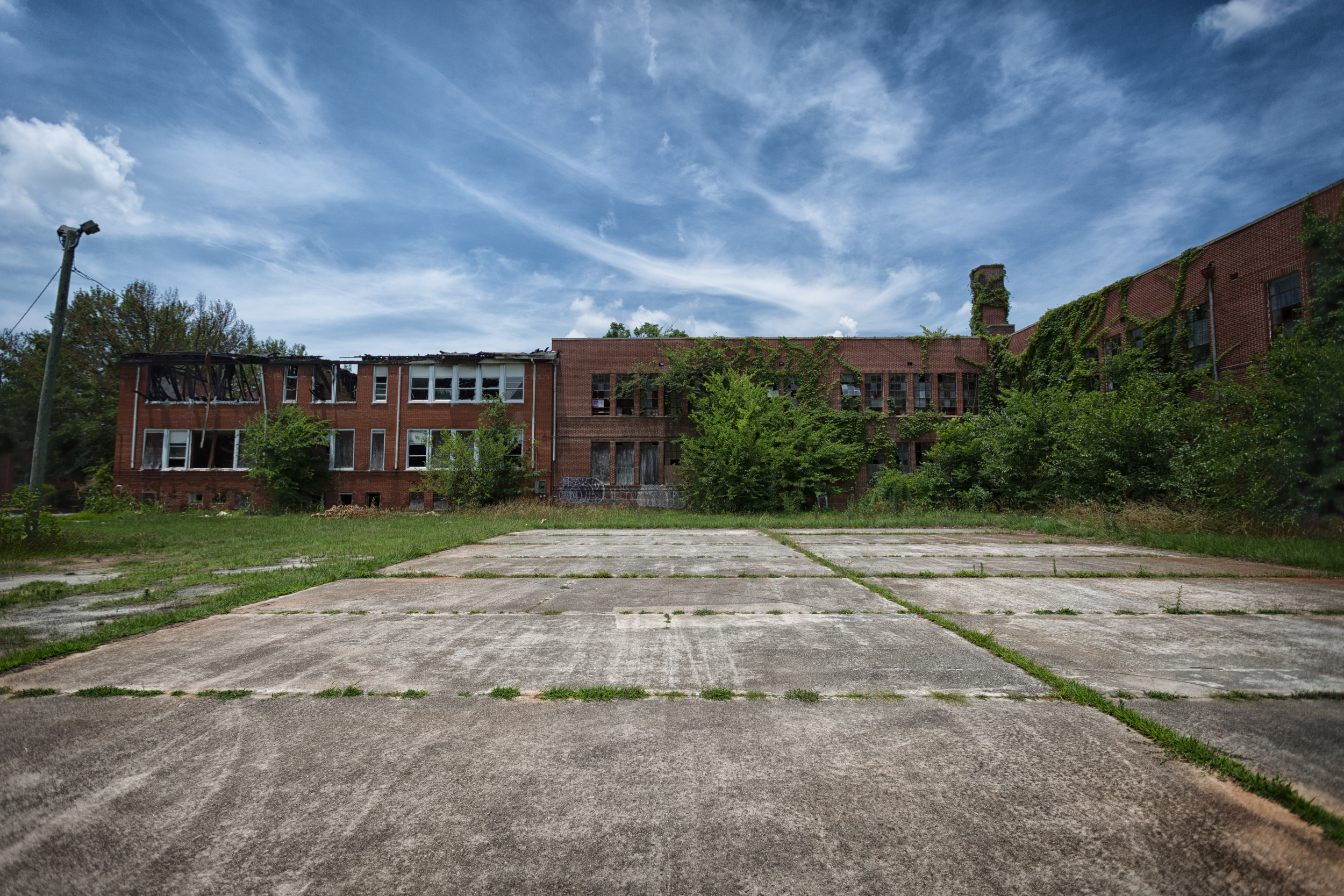

Empty Places: An abandoned school in Georgia
I was able to walk through and photograph the John B. Gordon Grammar School with a man whom attended the school in the 1970’s. He had fond memories of every room, including the cafeteria, the auditorium / gym and of course the principal’s office. He pointed to the stage with a smile and said, “My very first school play was right there.”
The school opened in East Atlanta, GA in 1909. As you look through these photos, you will be able to see some of the vibrant colors of years past as lead based paint flakes and falls to the now dirt floor. You will also see that some years, the colors were dark or bland. Other years boast pastel greens and yellows.
The school was shut down in 1995 and later purchased by a development group with plans to turn the structure into loft apartments. That never happened and in 2009, the property was foreclosed on.
In April of 2014, the building caught fire. Today, it is a total loss and will likely be torn down in the near future to make way for development. When that will occur is still up in the air.
These photos were captured in June of 2014.
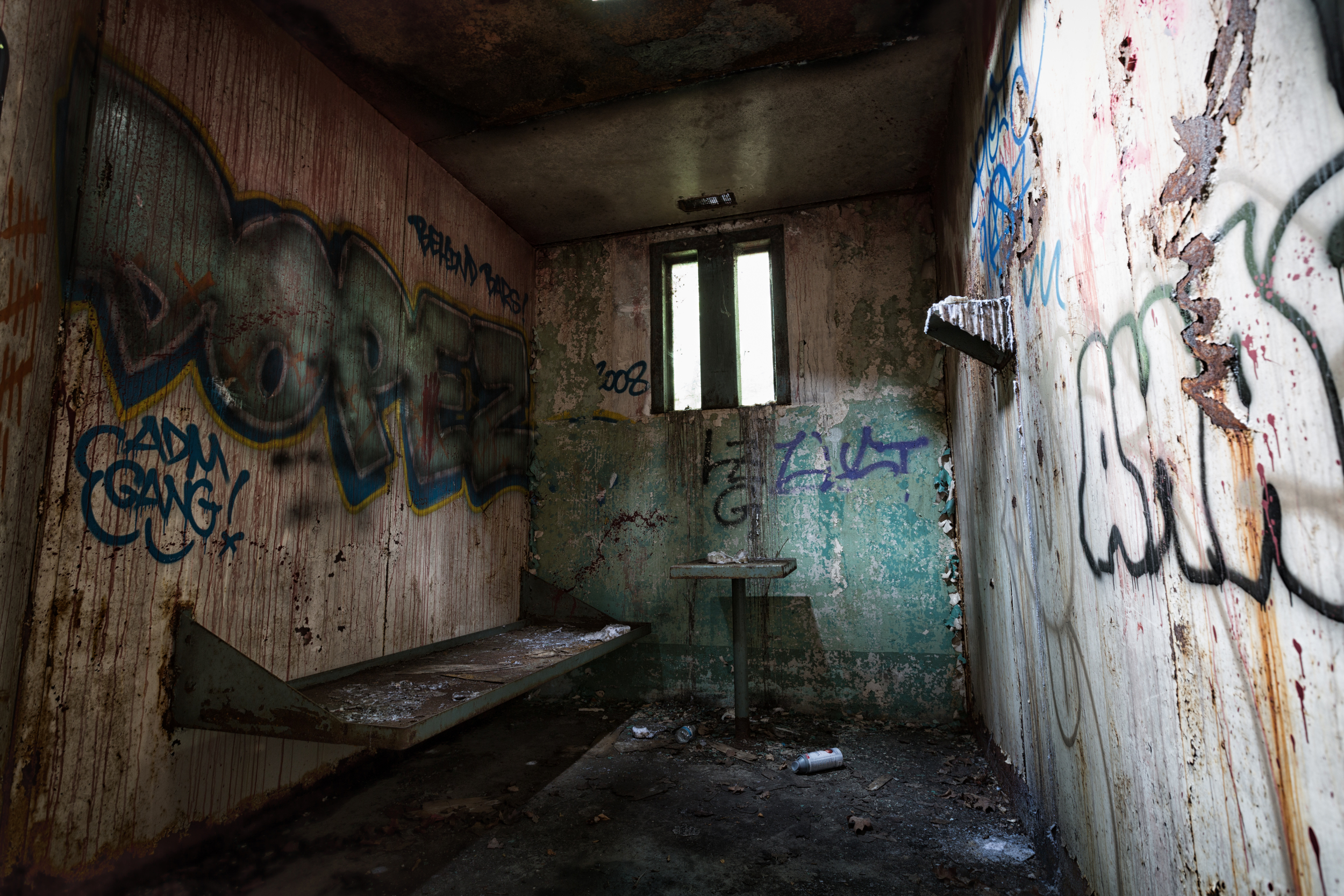
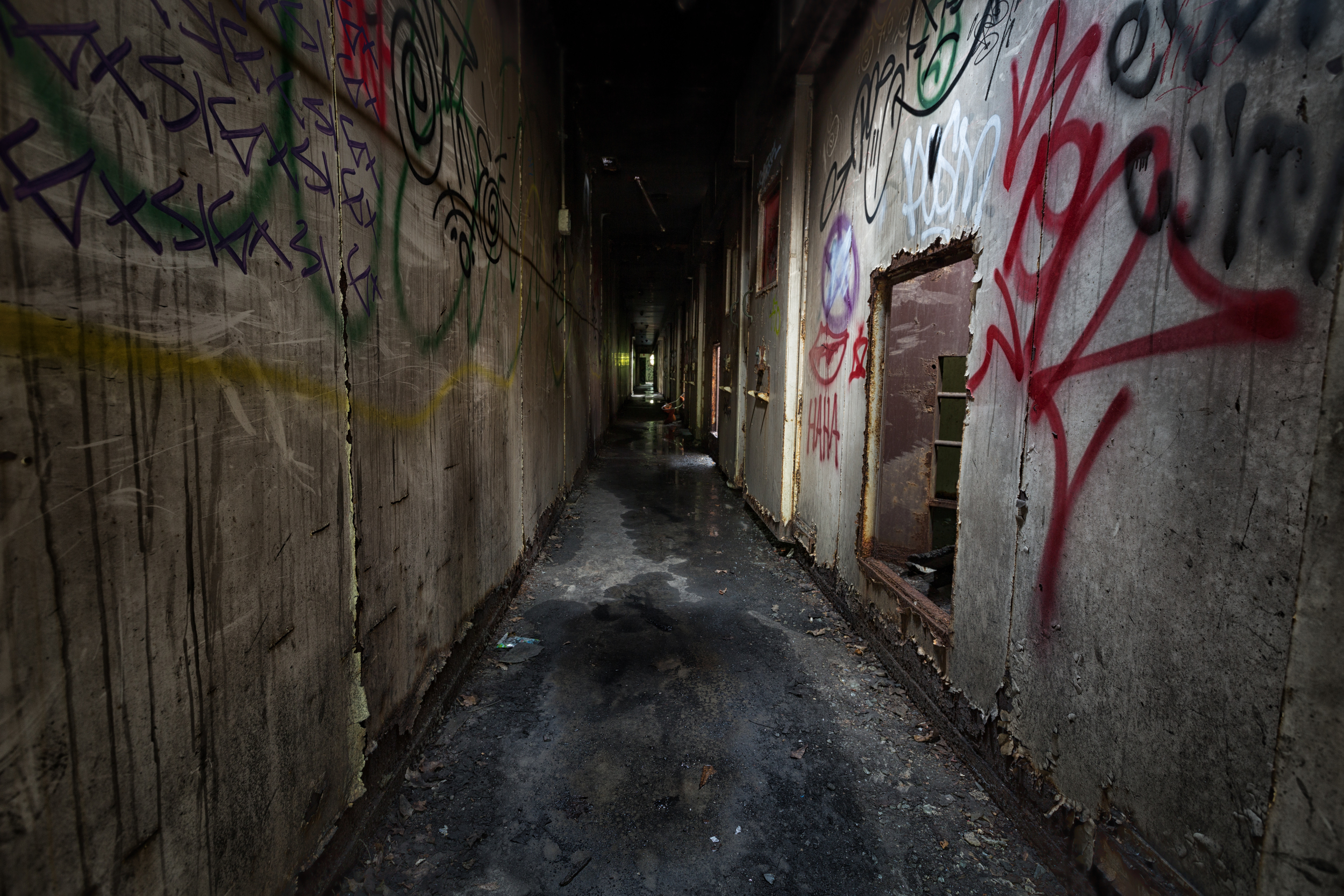
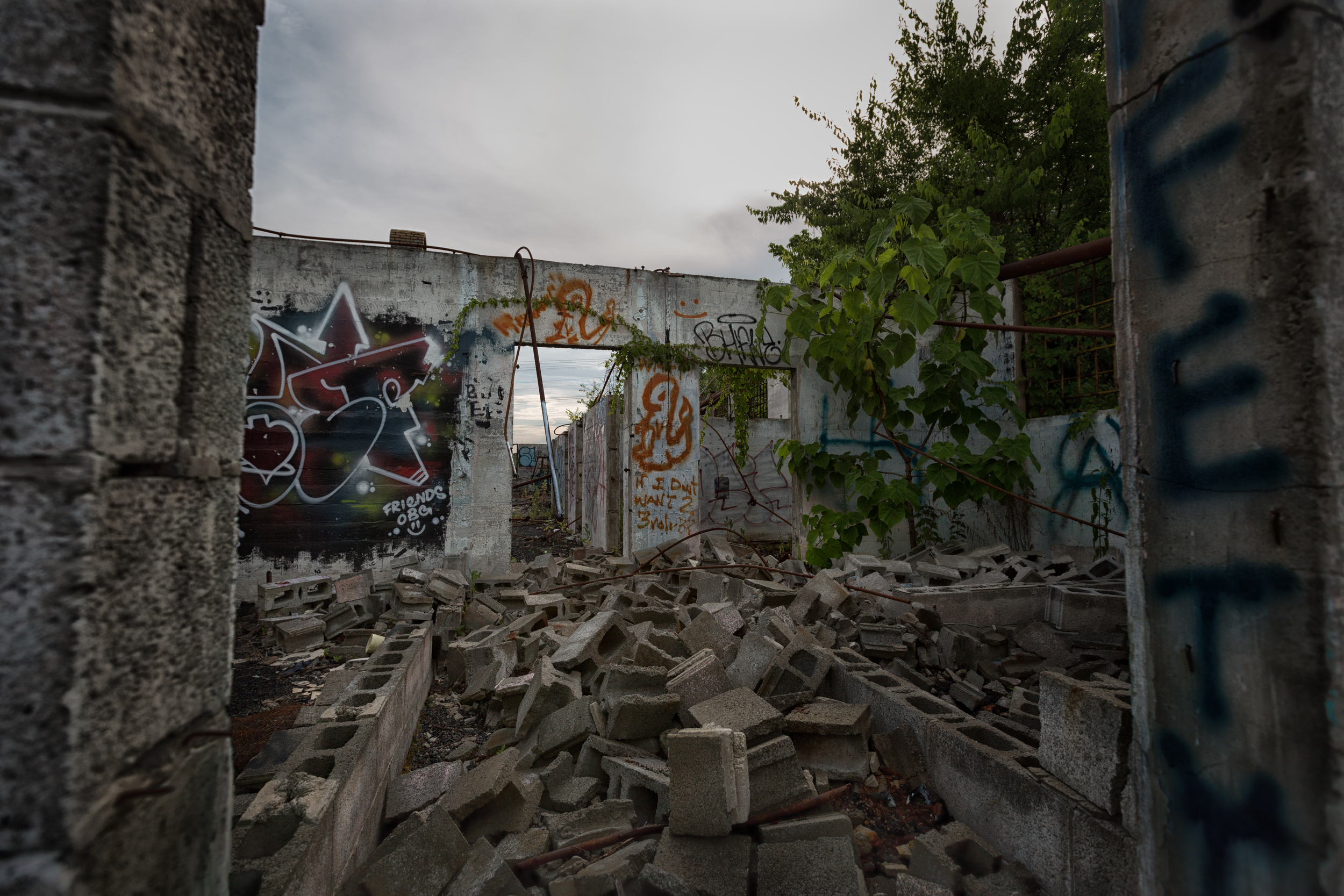

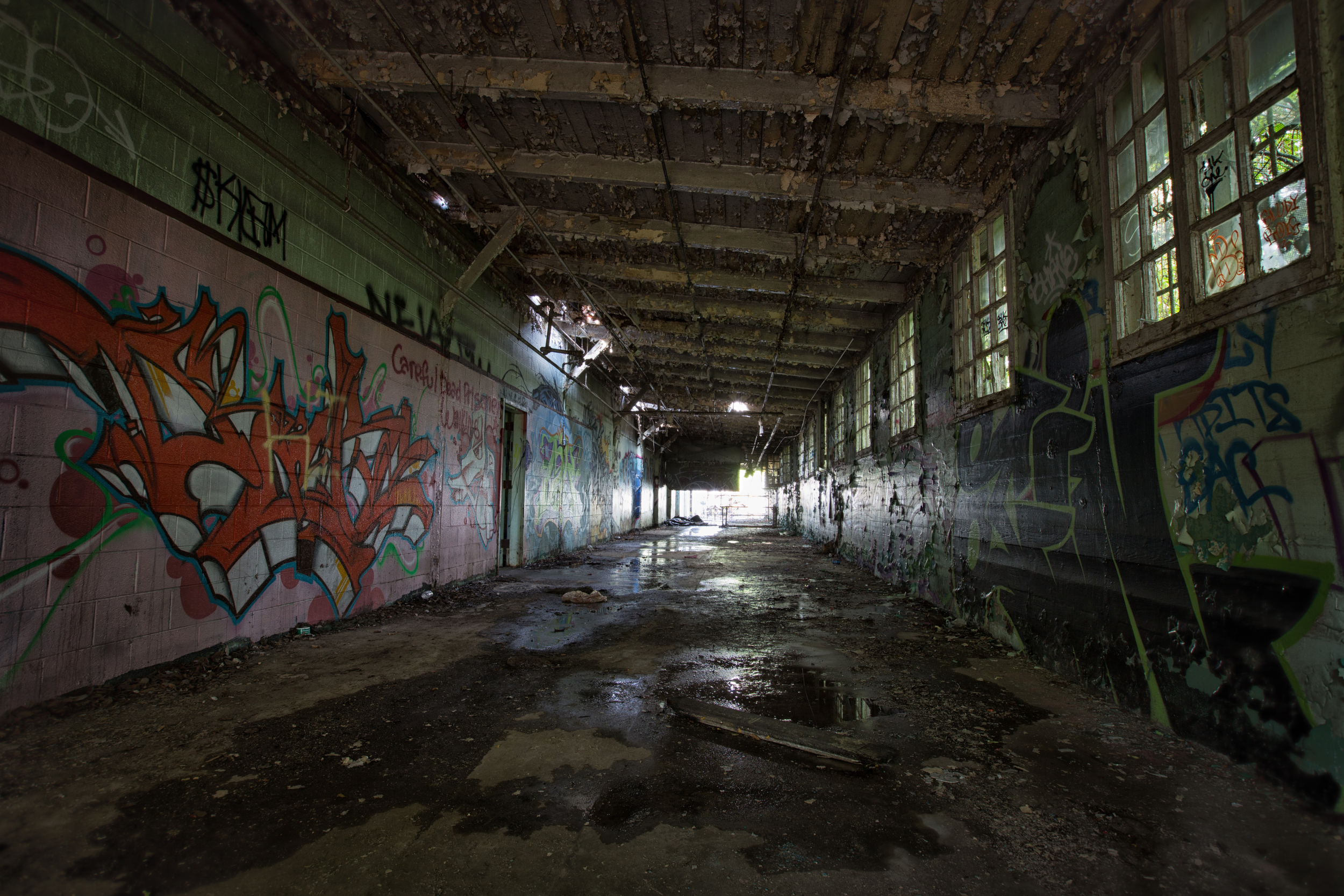

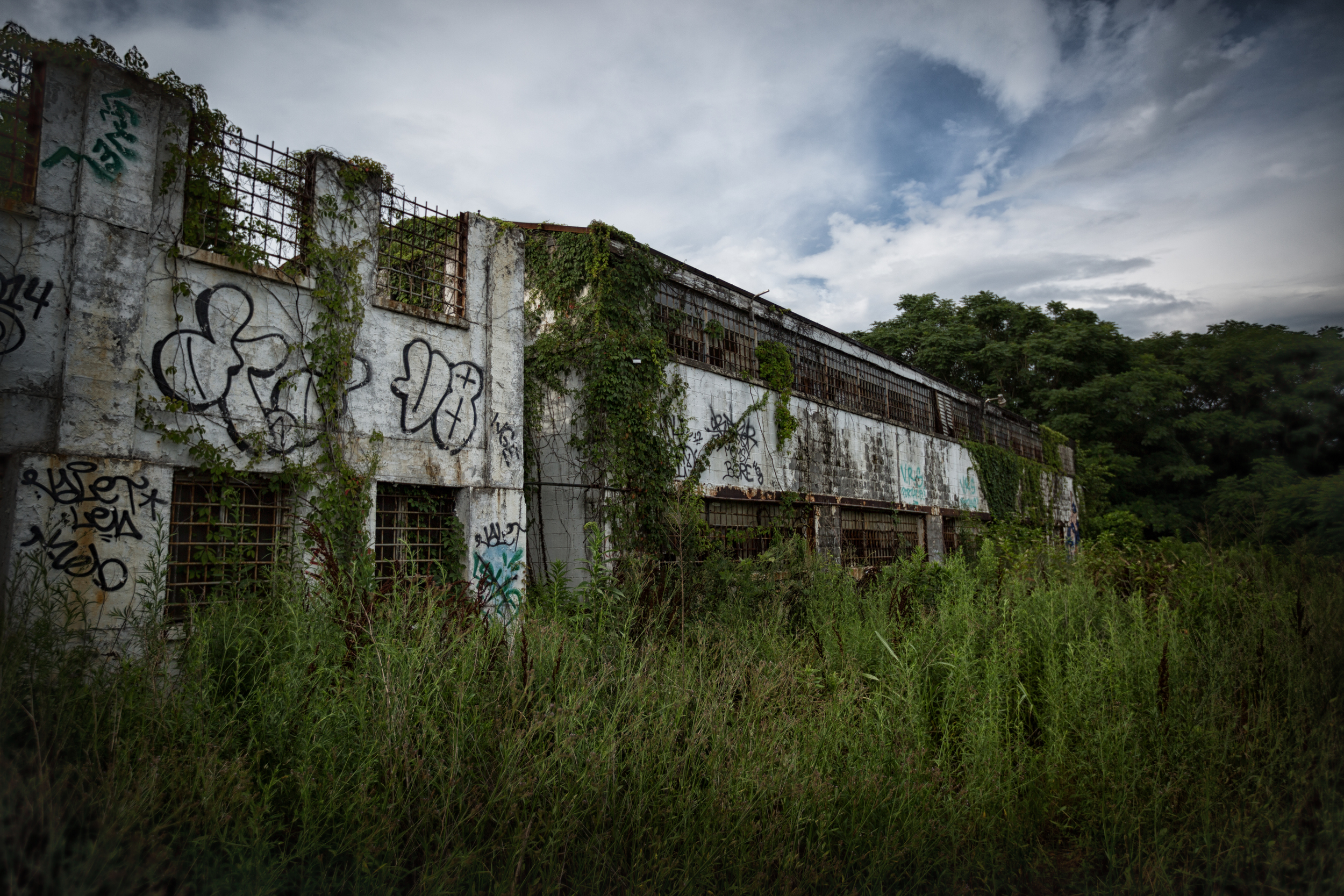


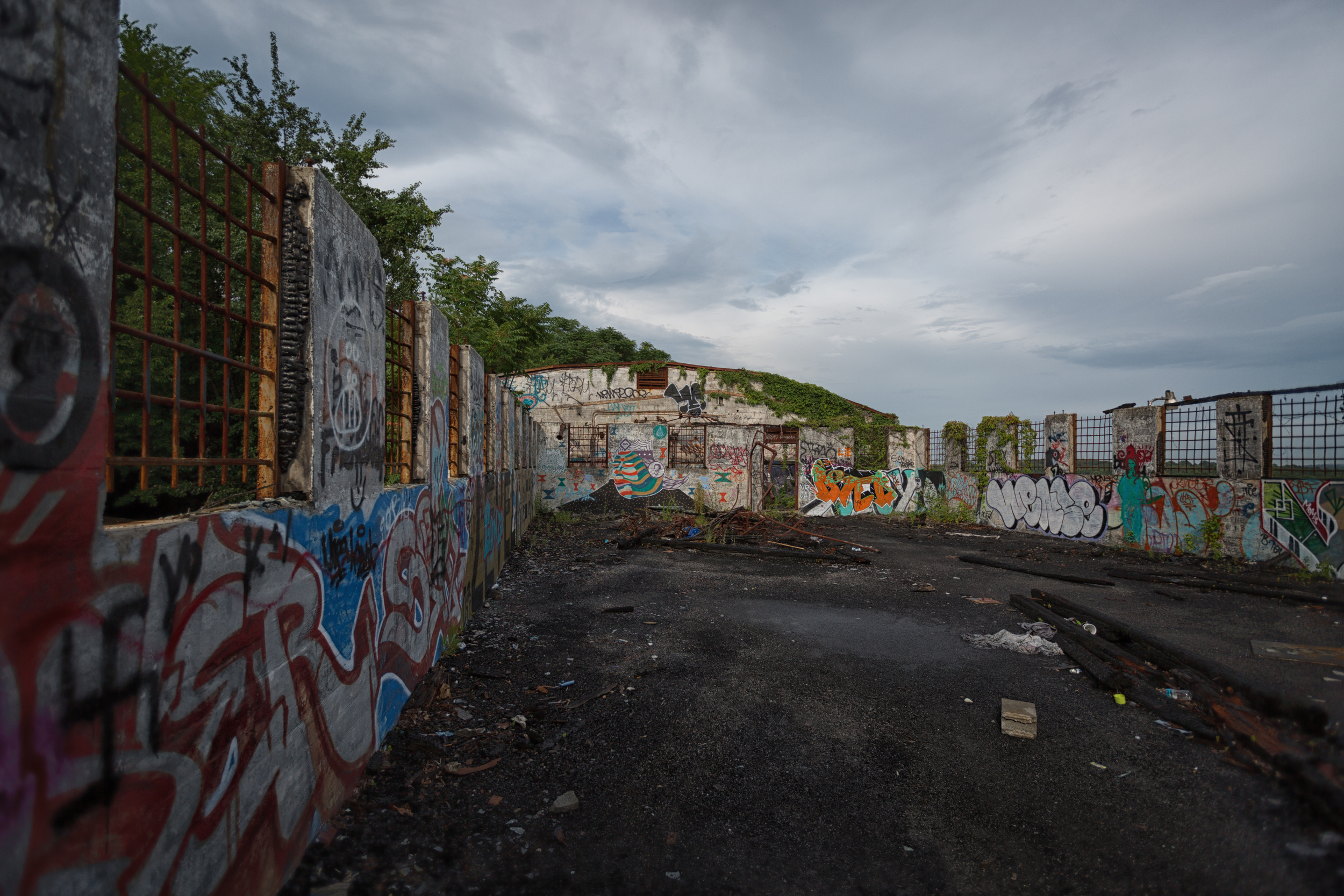
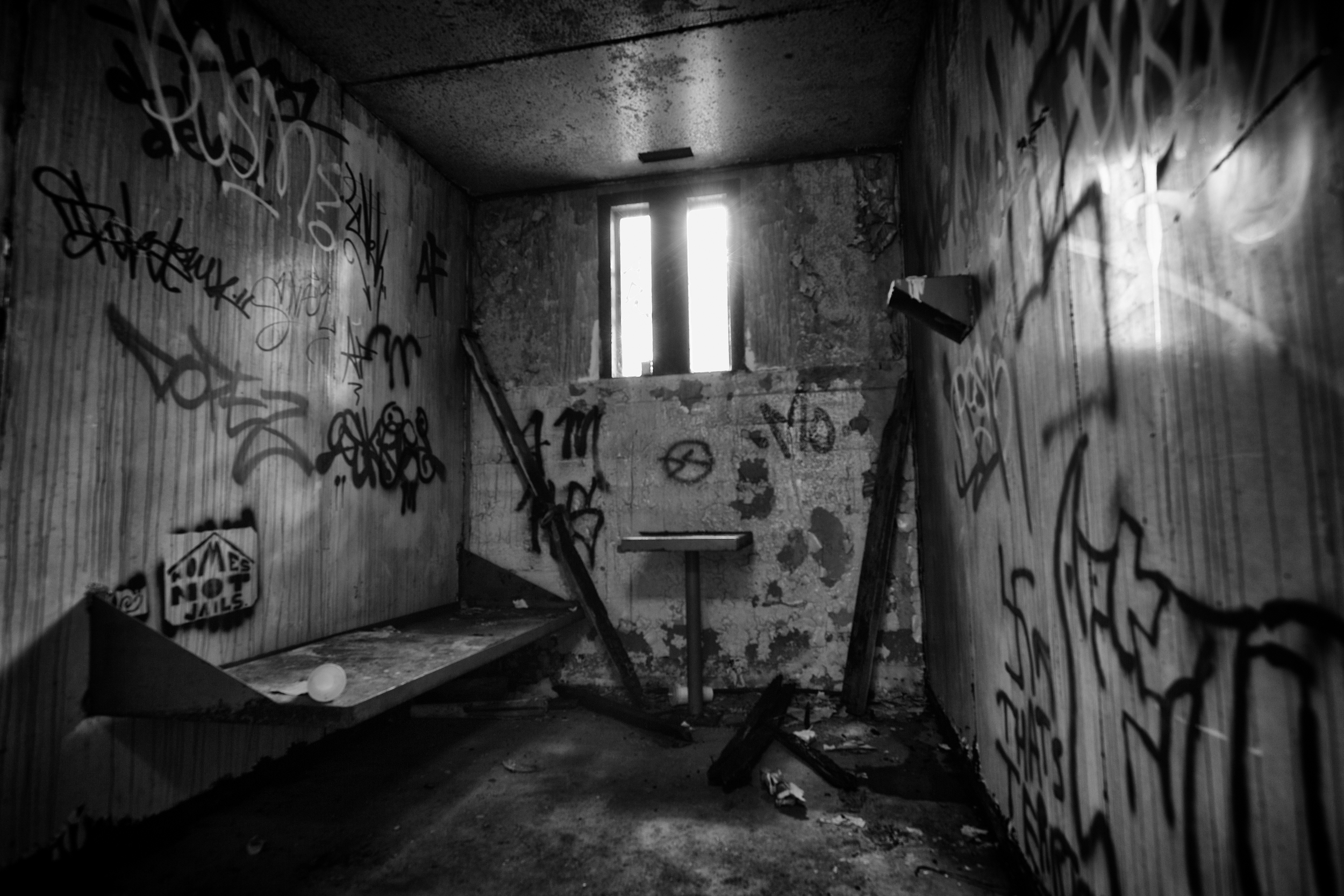

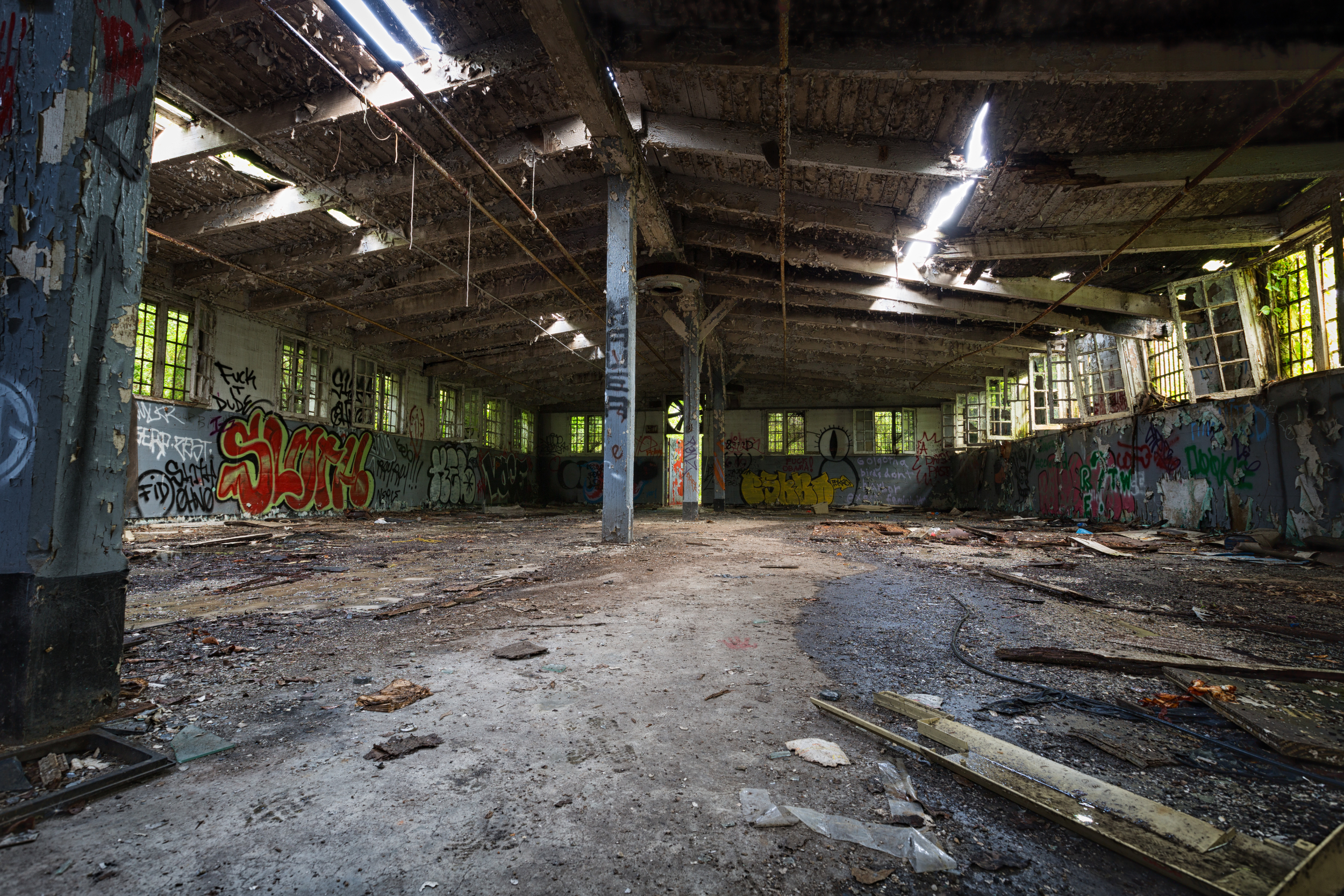
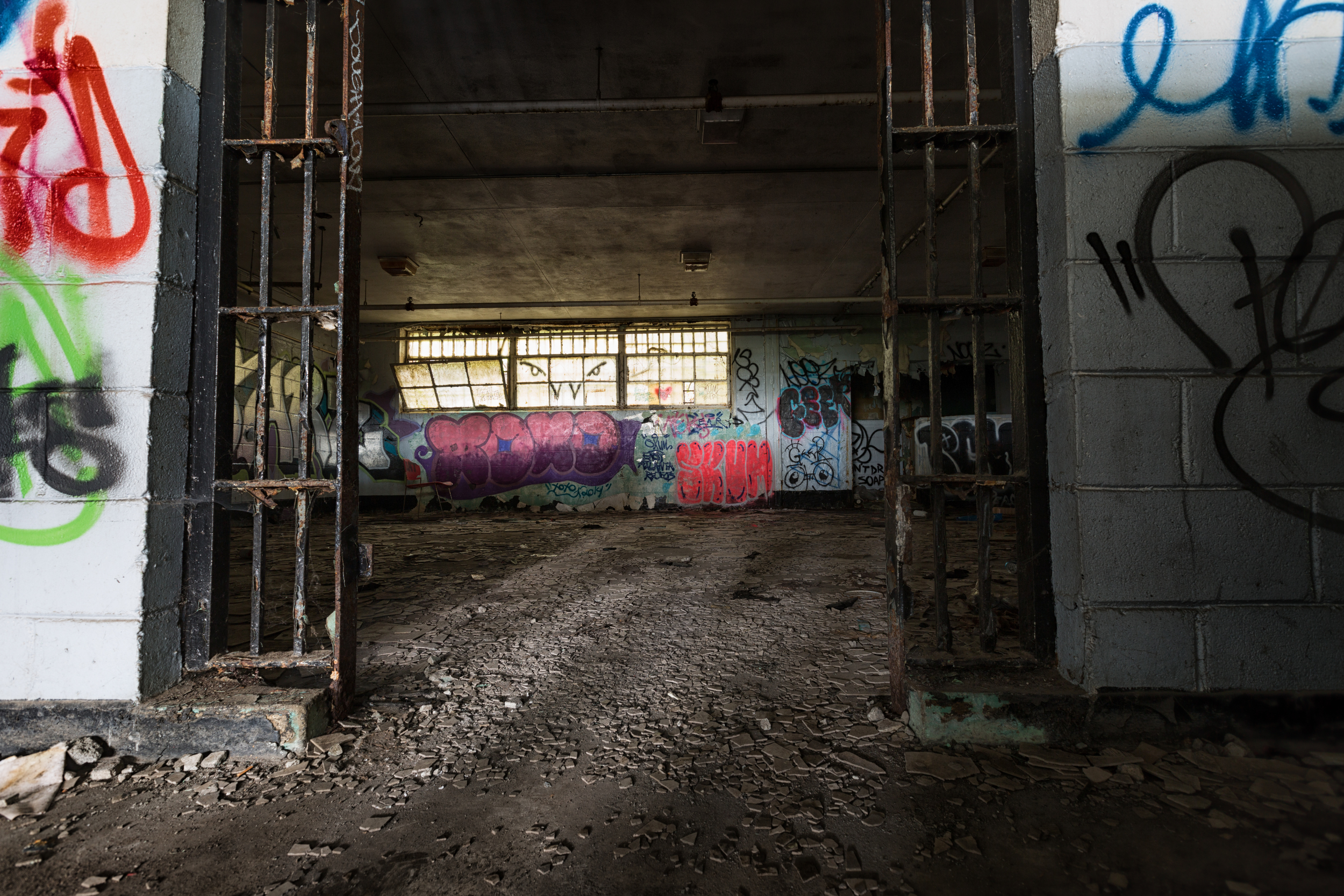

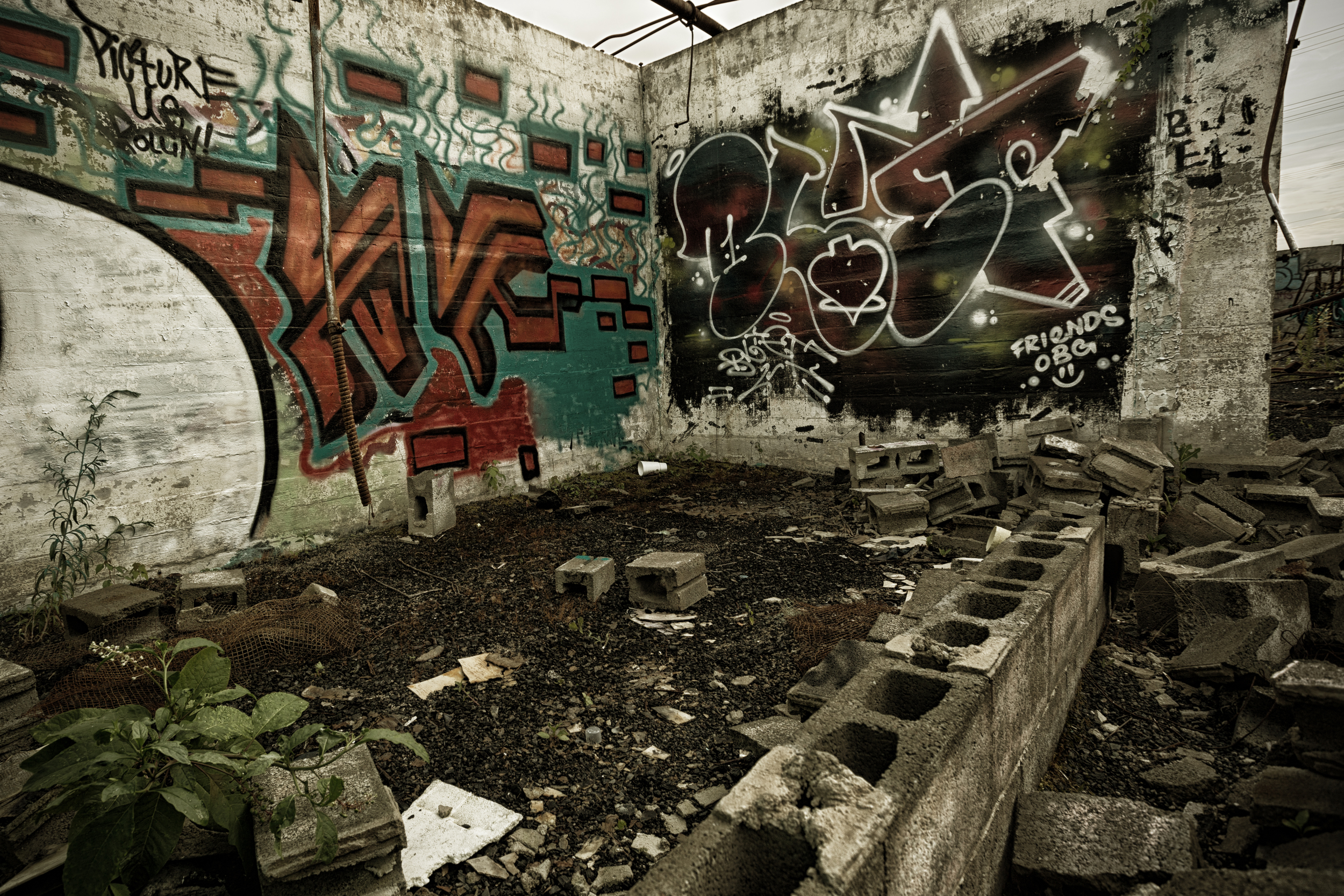

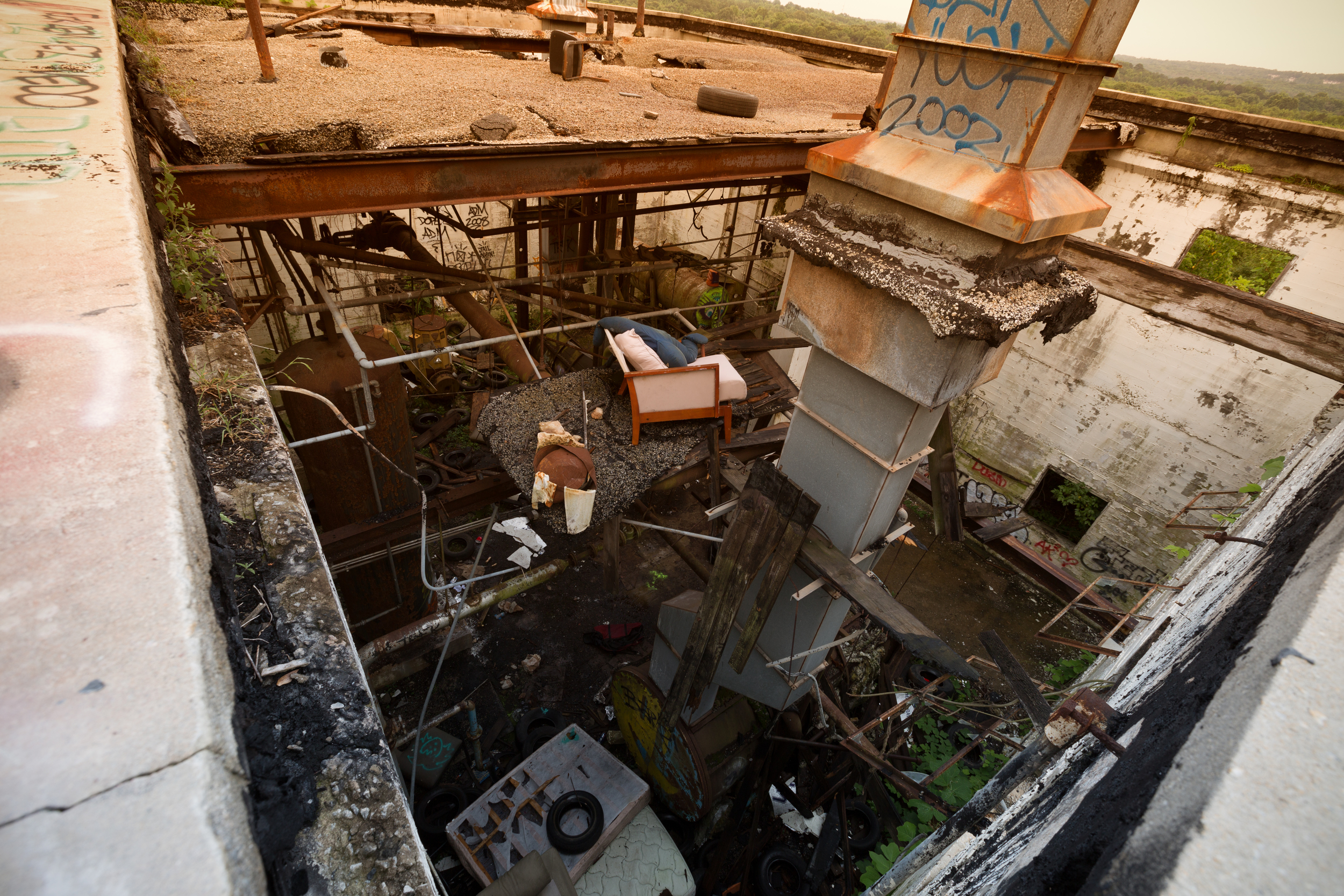
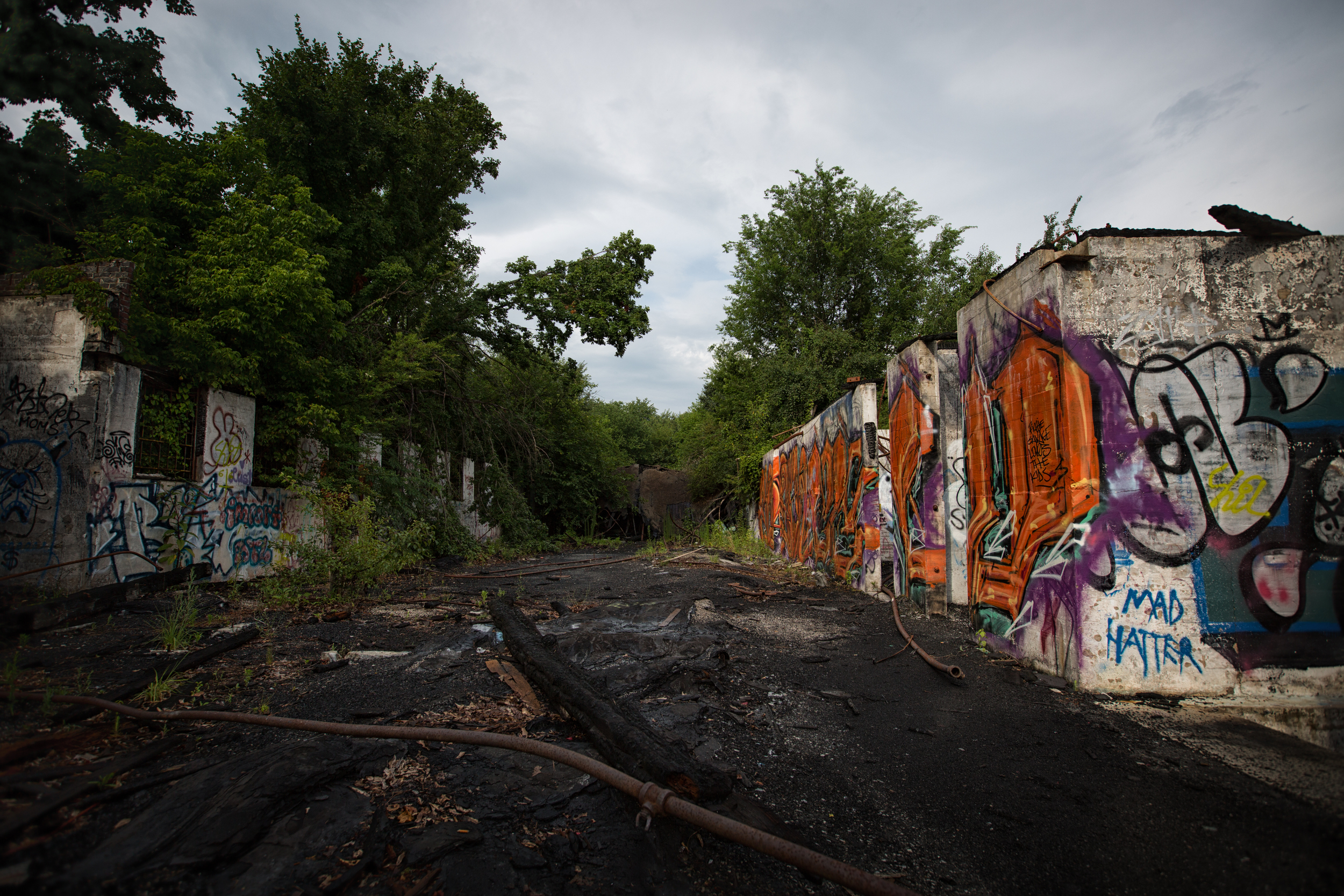
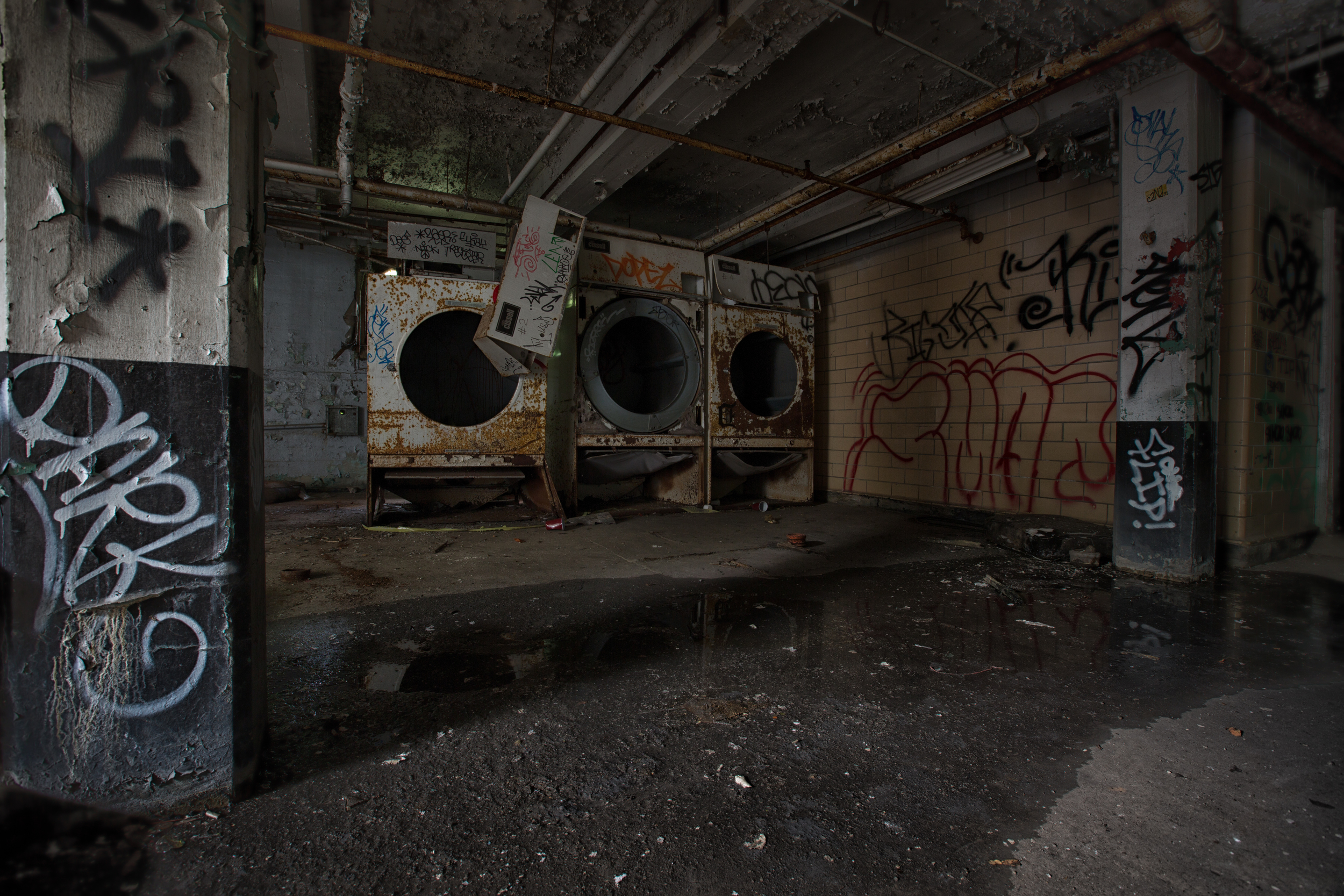
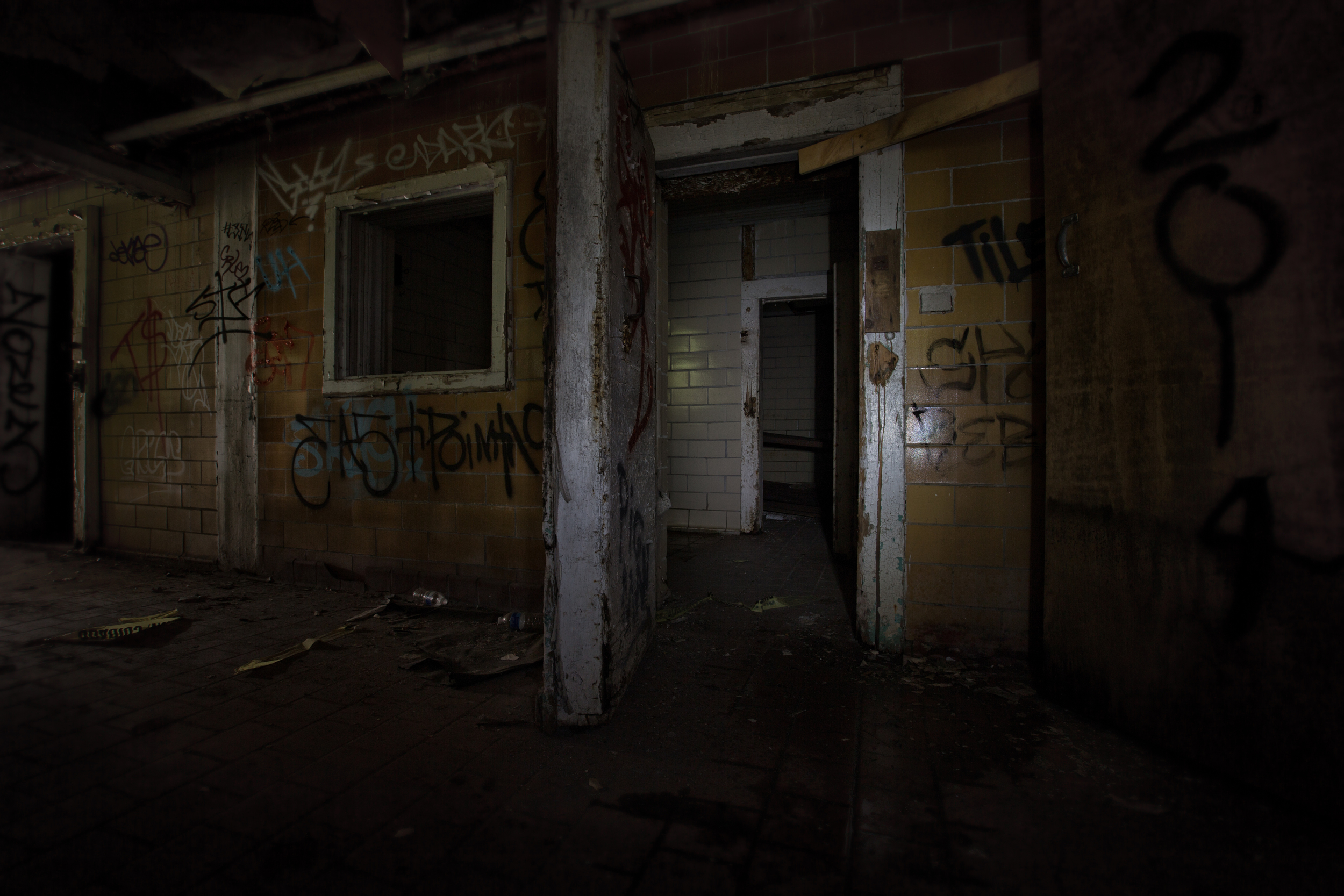
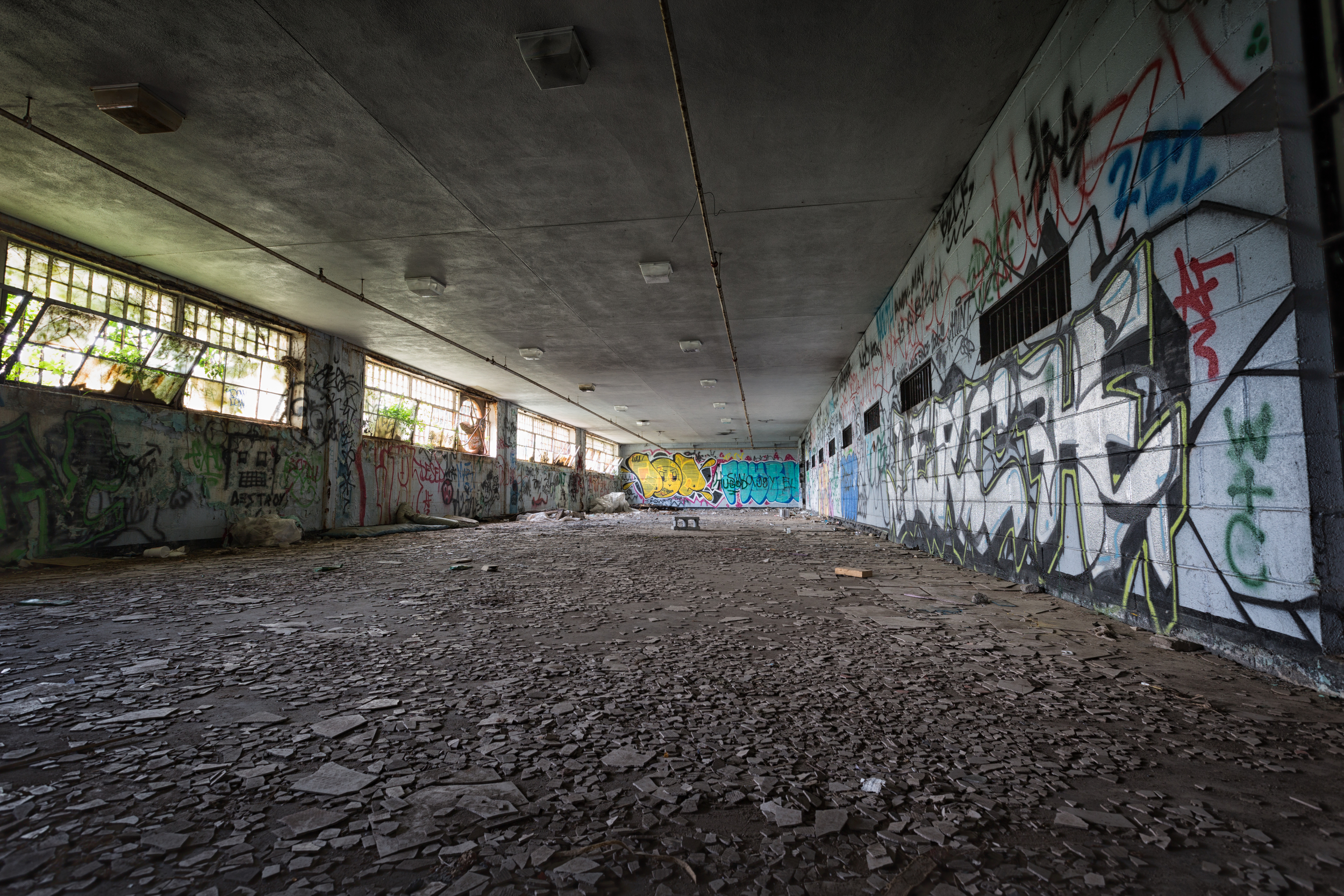
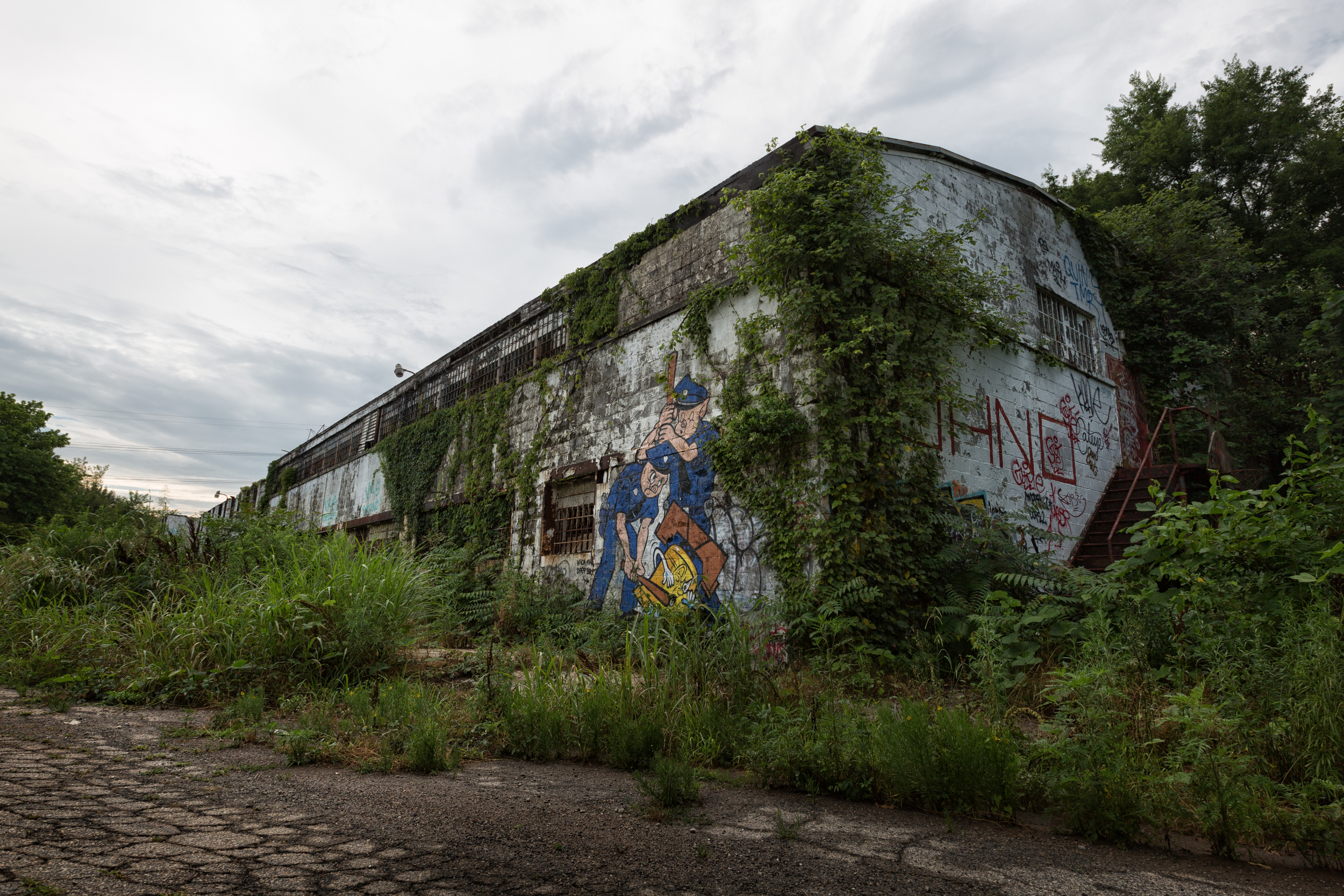

Empty Places: Welcome to the Prison Farm
The Prison Farm is just as creepy as it sounds. This structure, once owned by the Federal Government, opened in 1920 as an experiment for alternative punishment for prisoners. The inmate population of 100-beds (which later grew to 700-beds) knew their home as one of the first sanctioned "Prison Farm's" in early American history. Guards oversaw about 1,200 acres in the area of Atlanta, GA.
The prisoners that lived on the farm were trusted individuals from a variety of backgrounds. The population was hand picked by the warden and each inmate worked hard to raise not only crops, but also animals.
The prison, while successful, was expensive to properly oversee the inmates. The prison eventually closed in 1983.
The prison, which is a very significant part of history, now sits abandoned. Fires, vandals, drug addicts and the like have been unable to destroy the massive structure, which is falling apart all by its lonesome due to nature.
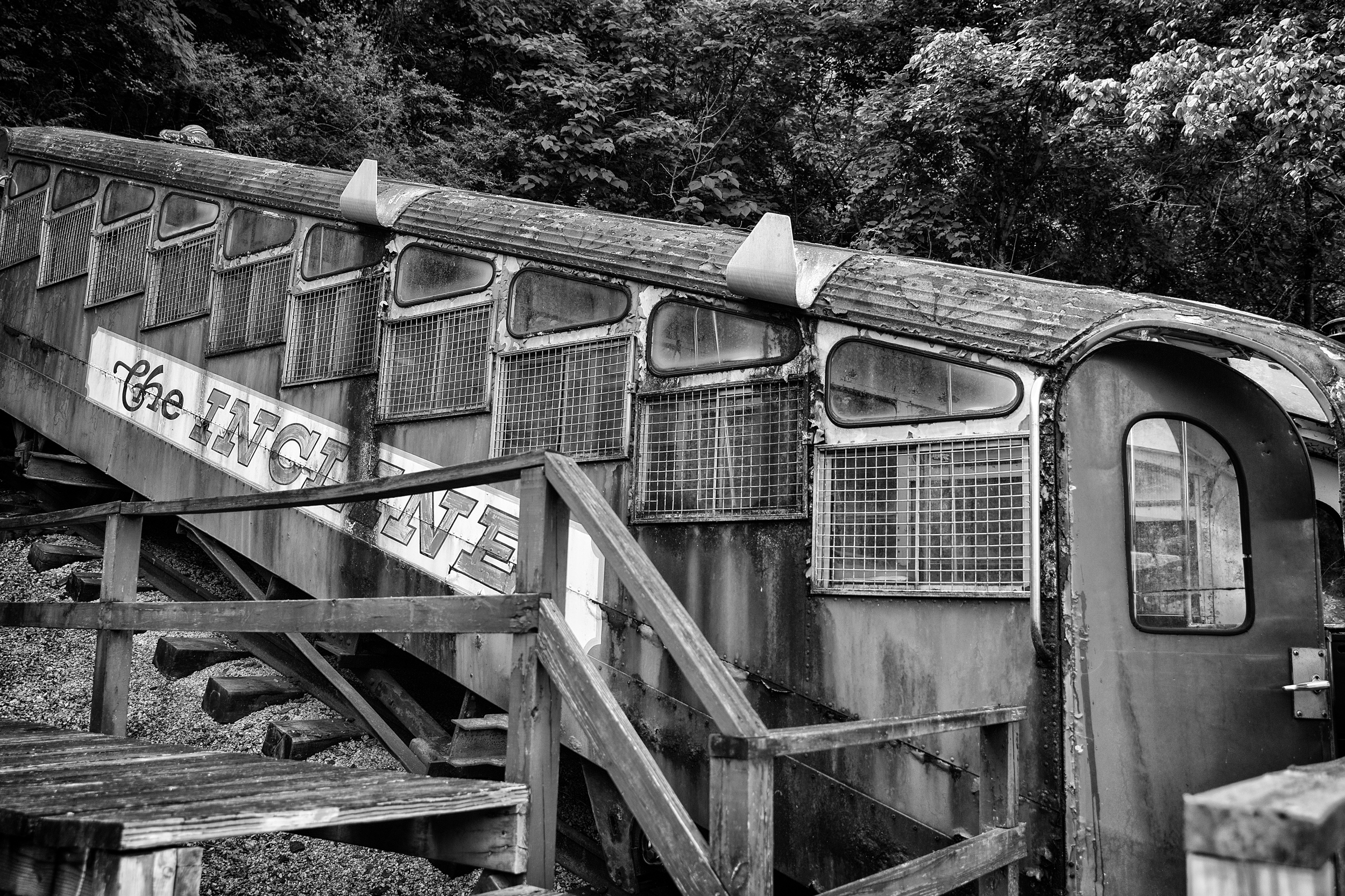



Ghostly Incline Rail Card
Sometimes when I take photos, I feel as if I am walking through a surreal world. I get lost. This was one of those times.
The incline car was somewhat off the beaten path in a train graveyard of sorts. However, many of the rail cars in the rail yard, are undergoing rehabilitation. This old incline car on the back of the lot has been forgotten about - or so it seems.



















